Trips
A tour in the hills of Odisha and north eastern AP. Two loops starting in Vizag. The first to the NW and the second to the SW. Odisha, inland, is a drier and poorer part of India with many quiet areas. It is great for cycling.
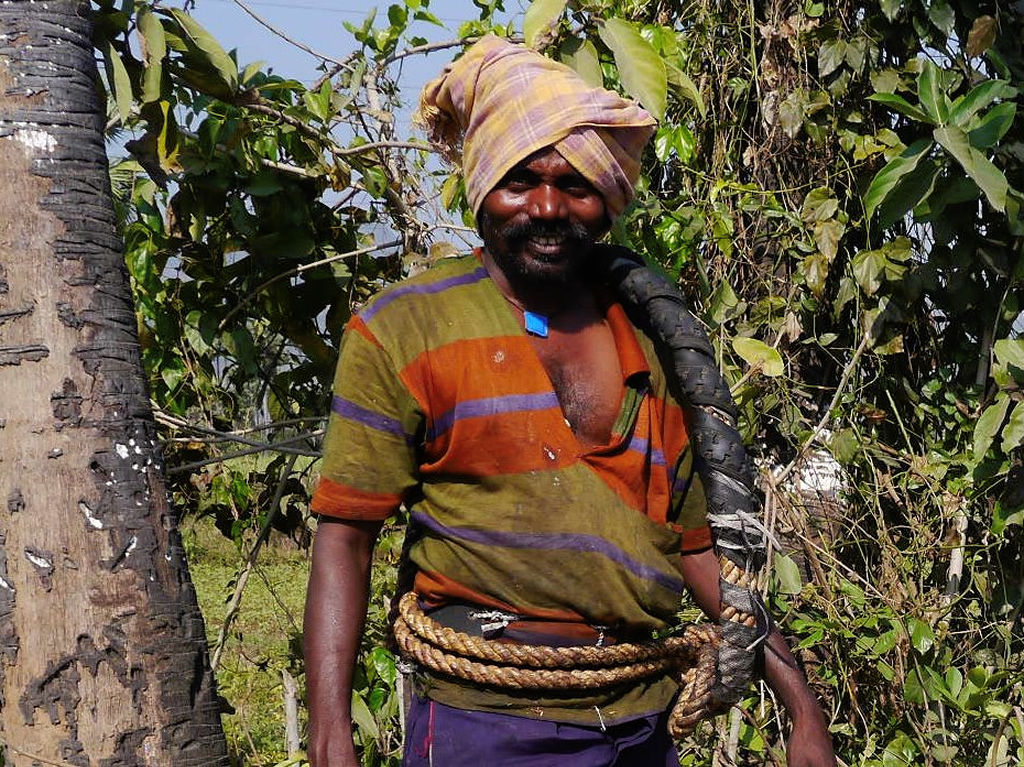
A toddy tapper. They climb certain types of palm trees and extract a liquid that is then fermented.
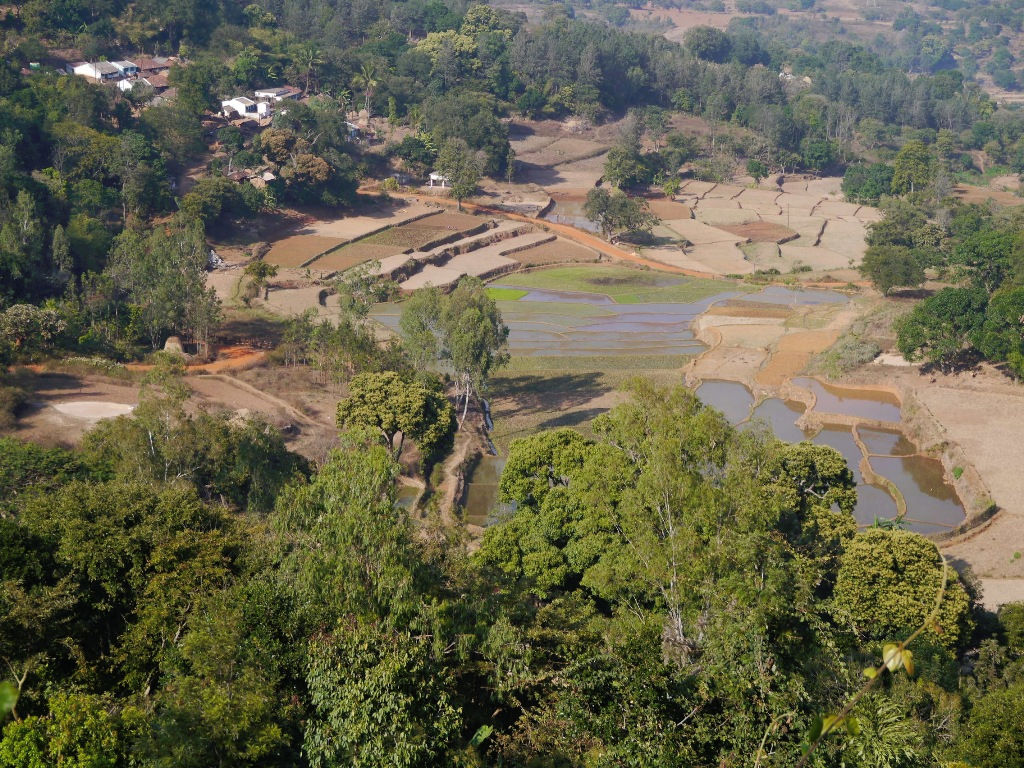
Climbing up the ghats. The hills here are under 1,000m. Unlike the western ghats which are an unbroken chain, these are more like scattered ranges with quite dry rain shadow areas.
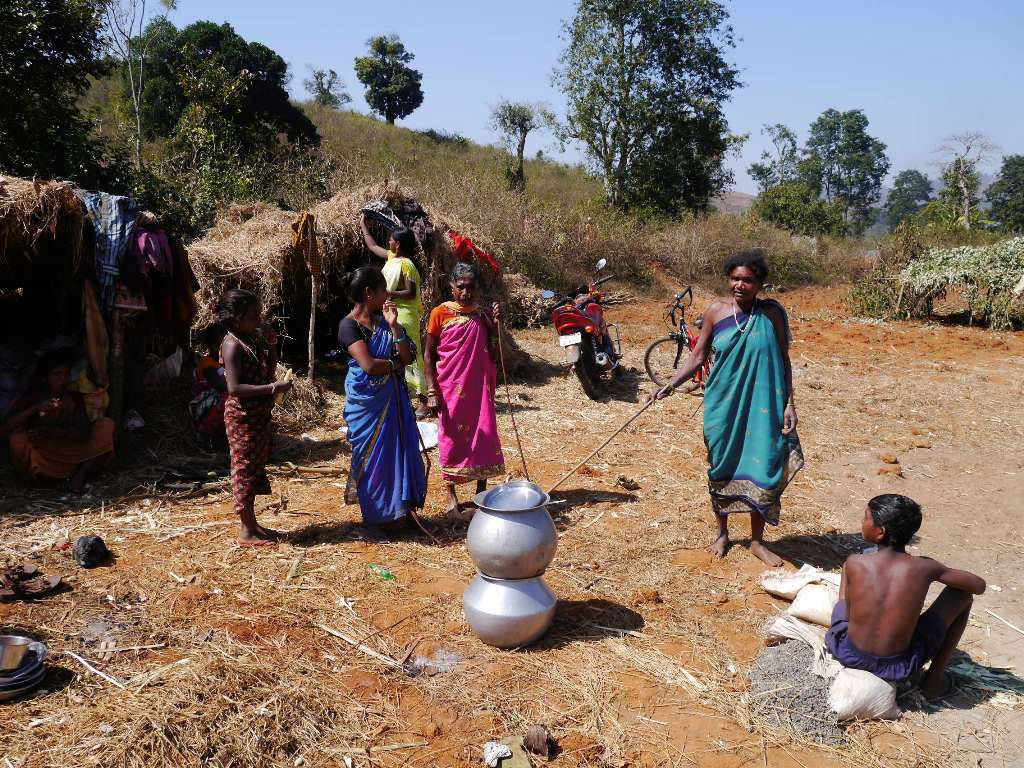
This family is working on the sugar harvest. They have a massive pot of sugar on the boil so as to reduce it down.
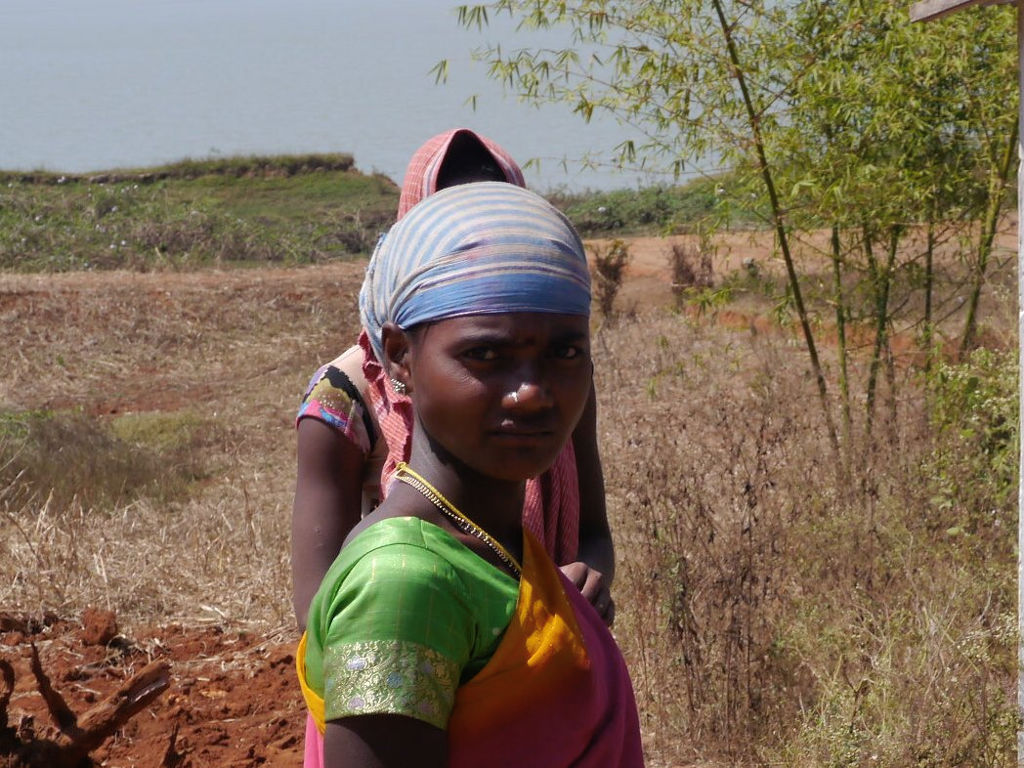
A roadworker. It is very physical the way they do things here. These women are really tough.
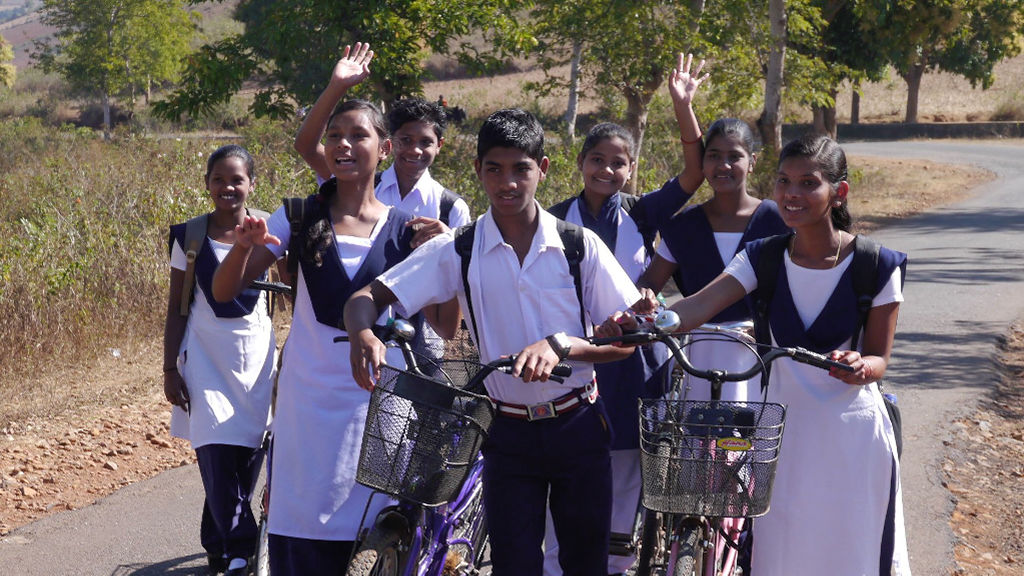
I’m greeted on a quiet country road by school students.
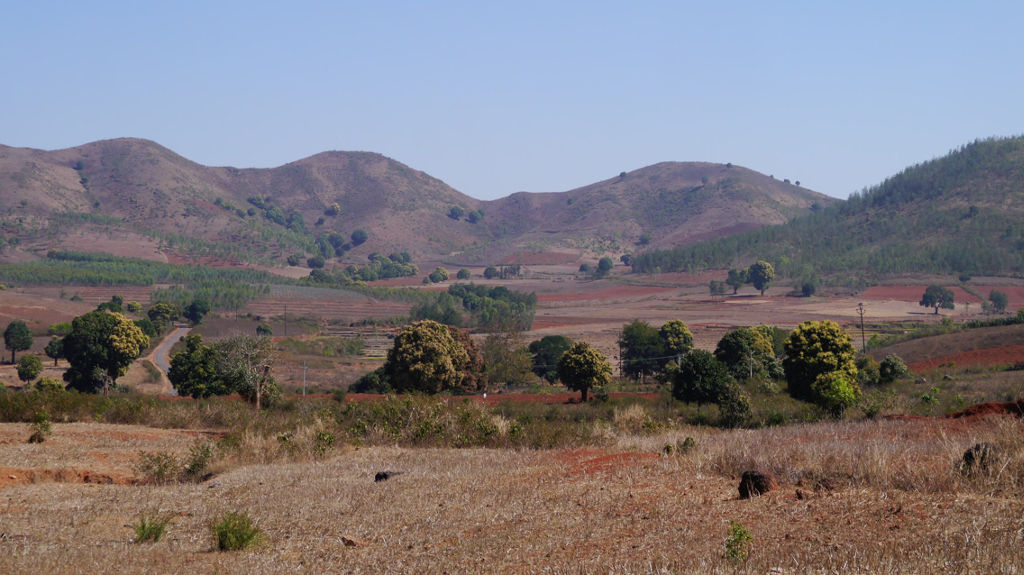
Big mango trees dot the landscape. It is the dry season. But it is dry most of the time around here.
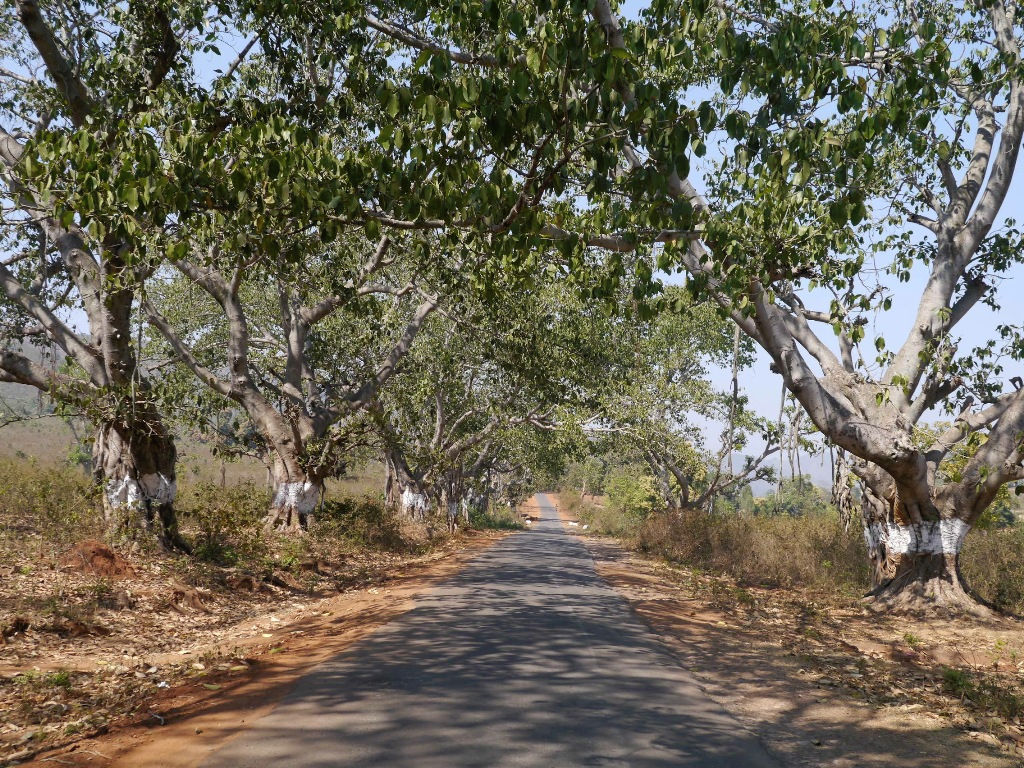
Although many people think India is all intense and overpopulated it is not true. This is a typical example of the quiet of countryside inland Odisha.
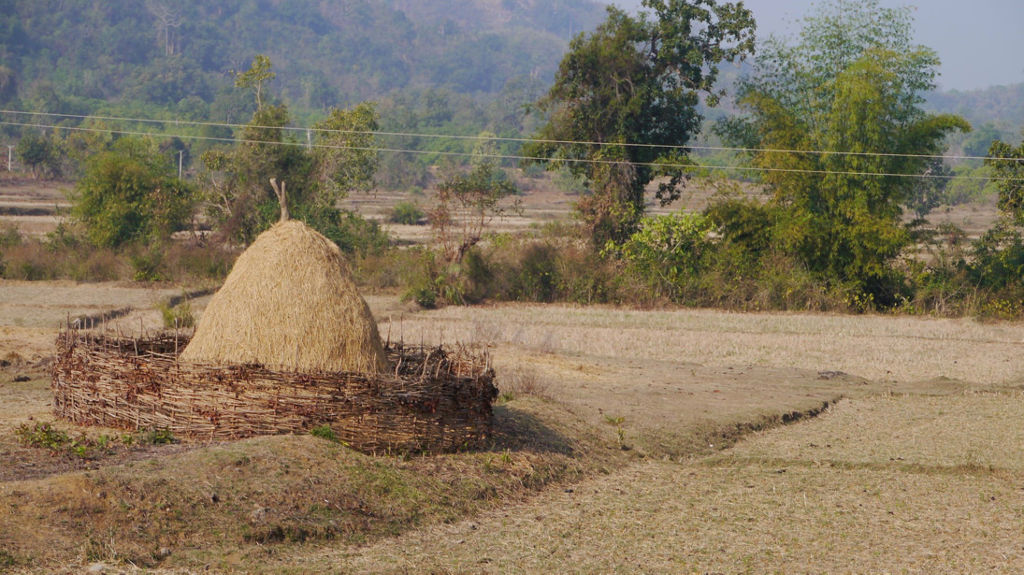
The straw left over from threshing is stacked and then protected from animals with a fence made from local vegetation.
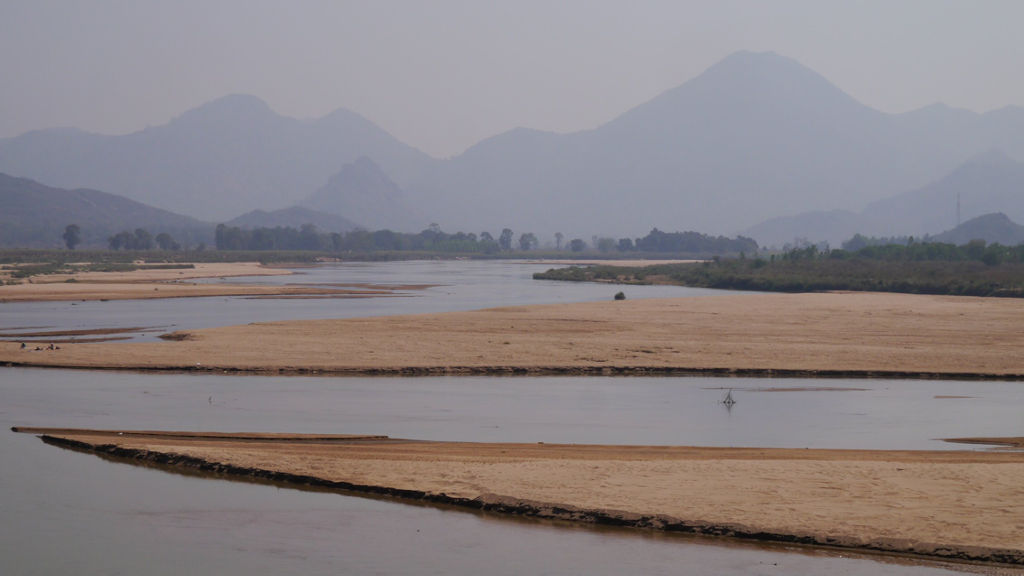
Often the areas around the bigger rivers are quite isolated as it is hard to make bridges that will survive the floods. There is no one around.
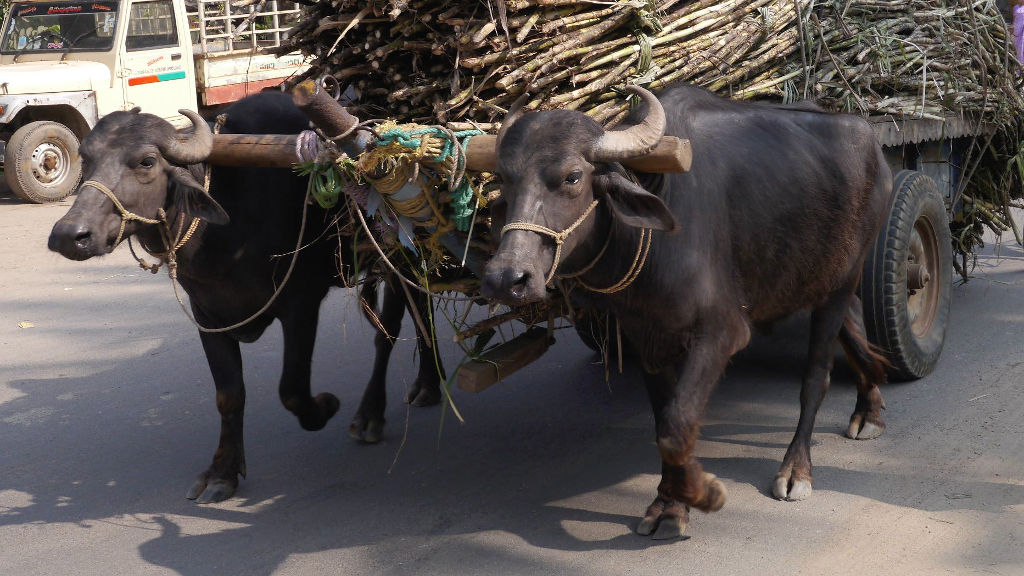
It is sugar harvest. Oxen cart the cane to the mills. Often, a 10 year old will be in control of the massive carts being towed.
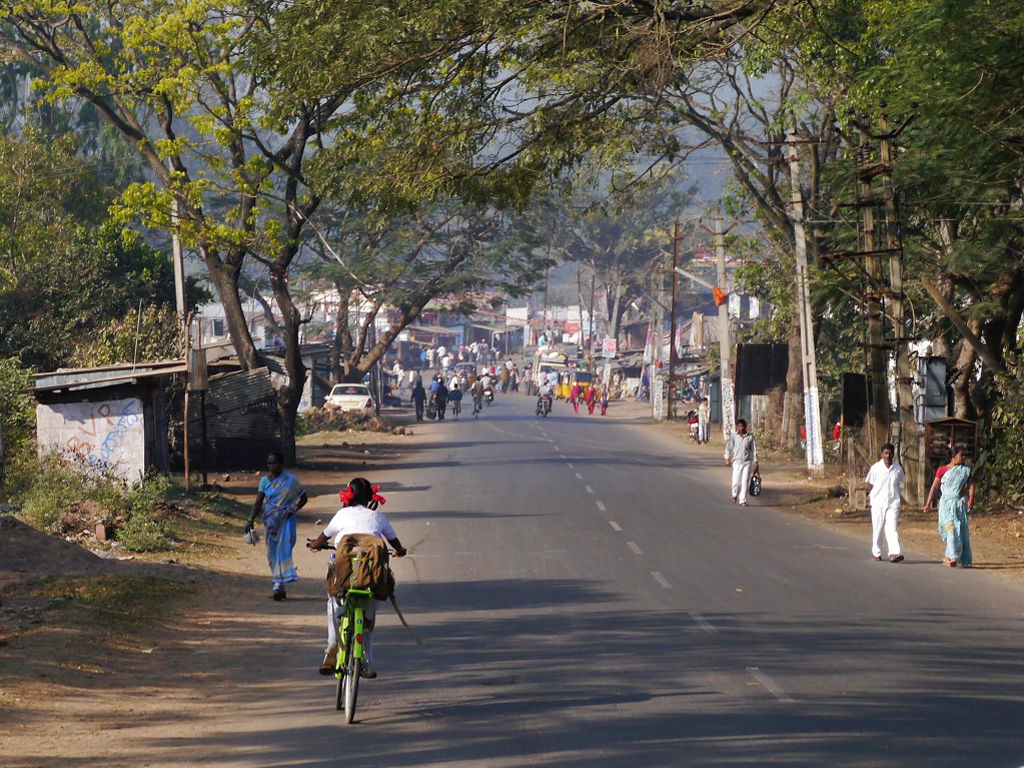
A young girl scoots past me on her bike, going to school.
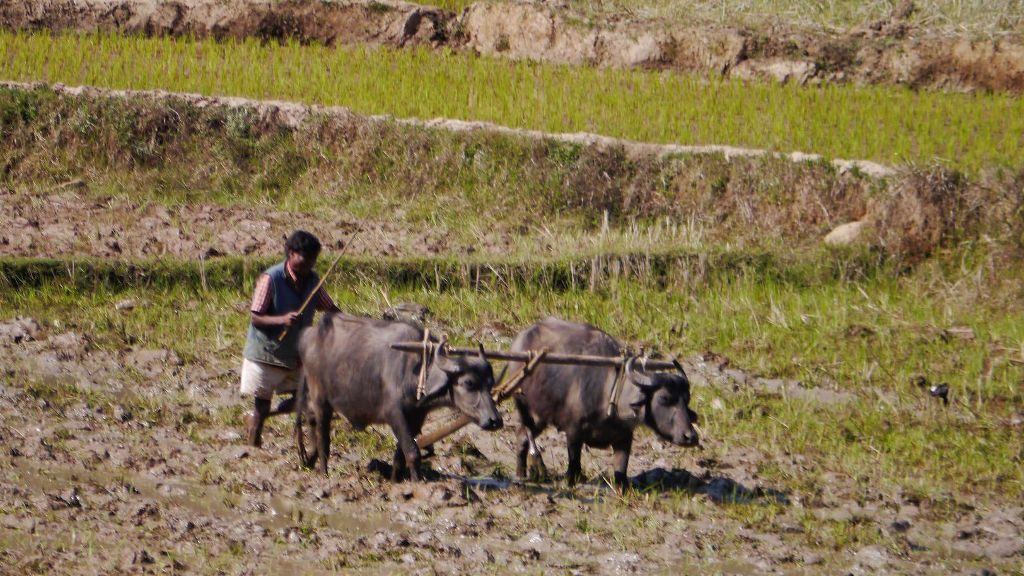
The timelessness and lack of dependence on modern machinery and fuel really impresses me.
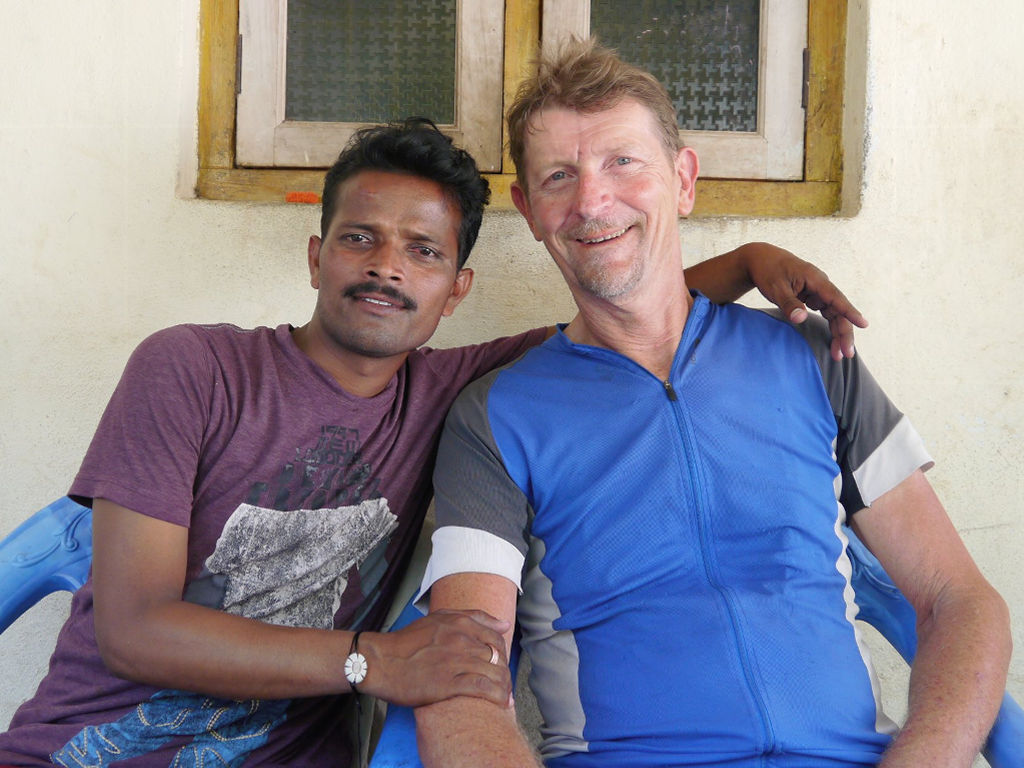
This fellow rode with me for quite a while and pleaded with me to come to his village. His mum cooked up a fantastic fish curry. A lasting memory on my last day.
A ride from Friedrichshafen in southern Germany, to the Danube, along the river a while, then across Czech into Poland, finally departing from Warsaw.
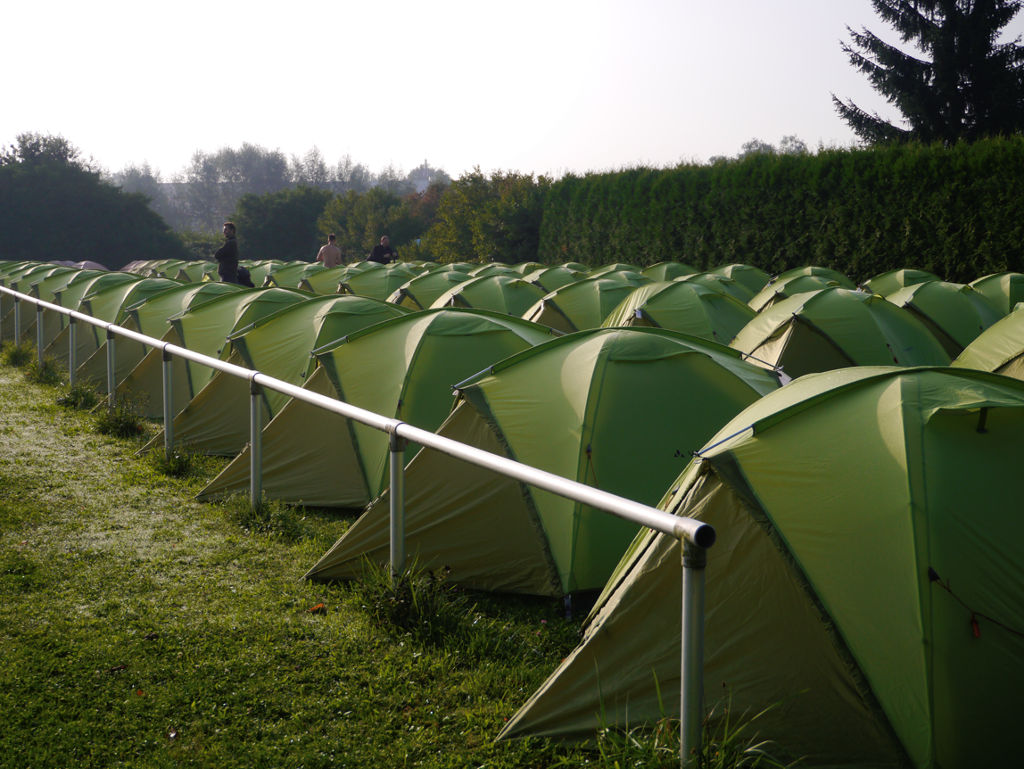
The campsite provided by Eurobike, the world’s premier bike show, for trade visitors arriving by bike. It is held at Friedrichshafen on the shore of Bodensee in southern Germany.
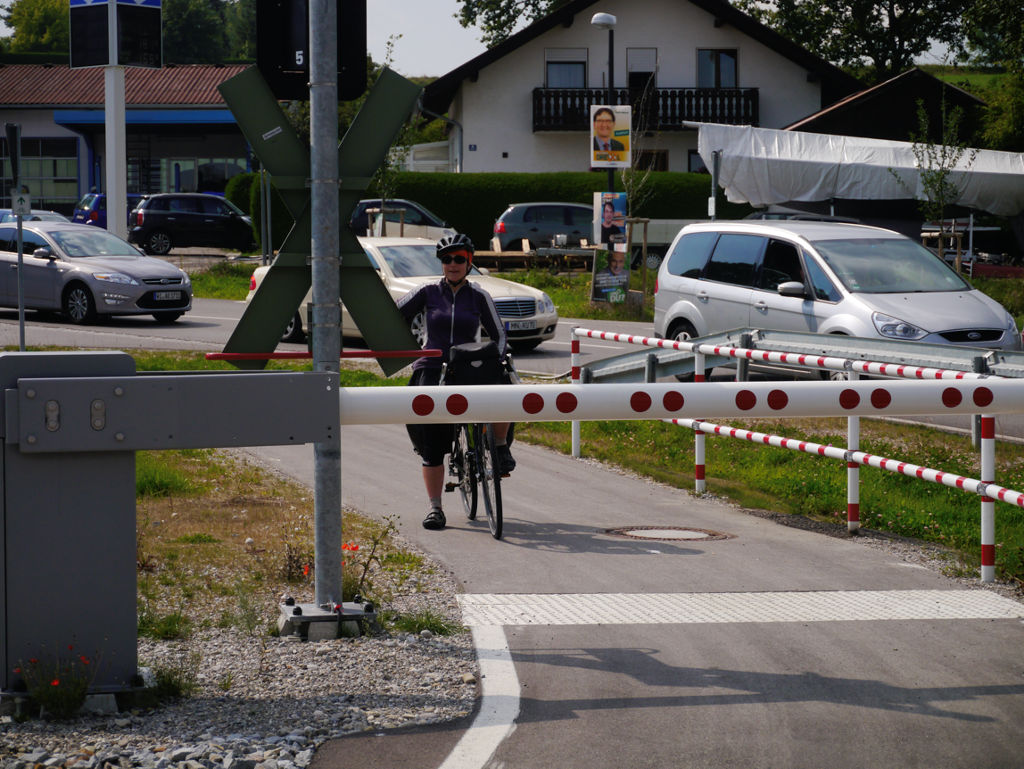
While cyclists in Australia generally have to ride in traffic, in Germany they are far safer. This is a train crossing and the cyclists get their own boom gate.
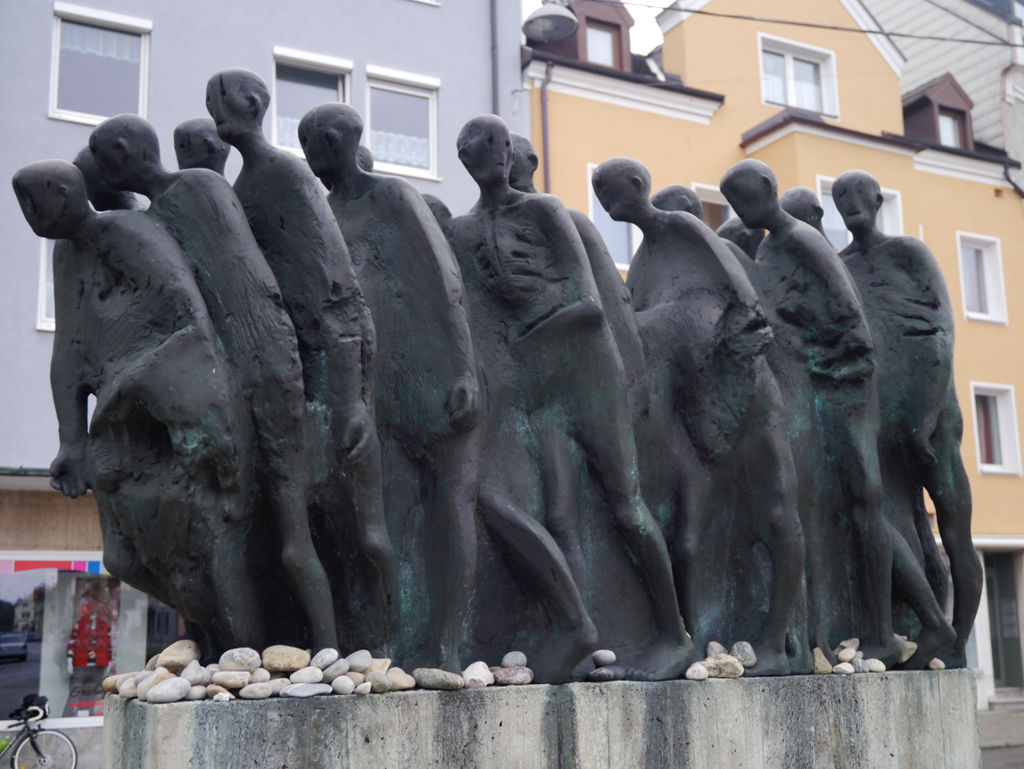
Moving east across Germany. This is a monument, 20km from Dachau, to the Jews forced into death camps to be systematically murdered.
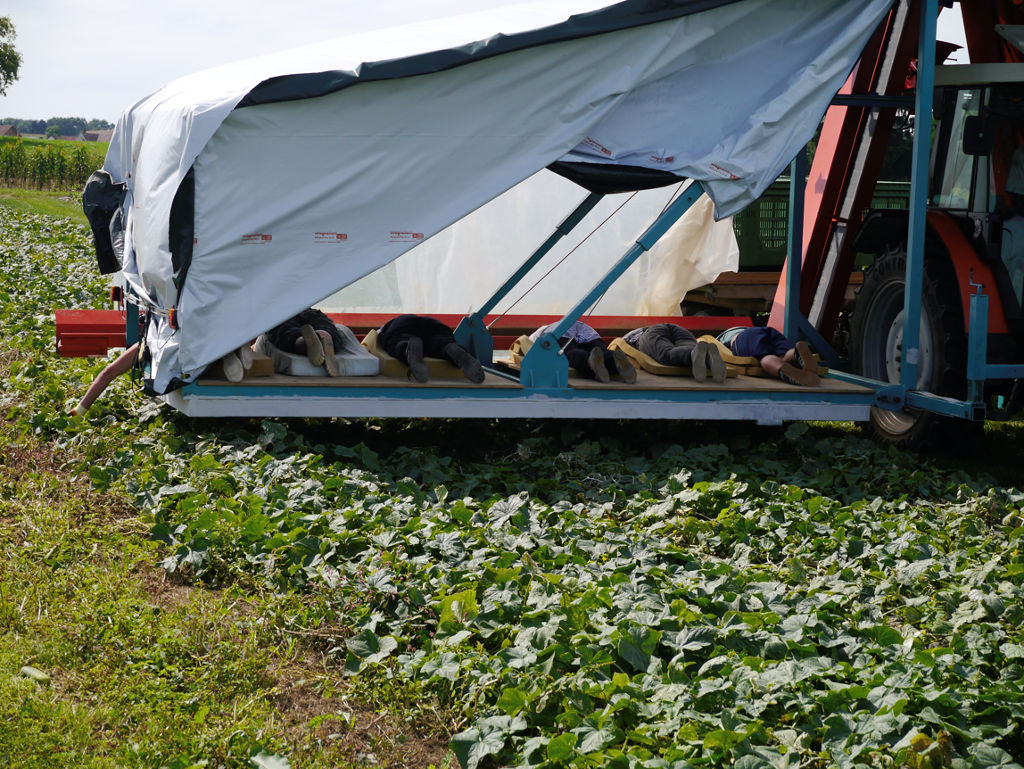
A gherkin harvester. There are 12 rows per run. Under the canopy there are 12 pickers lying flat, facing the plants, on foam mattresses. They pick the gherkins and place them on a conveyer.
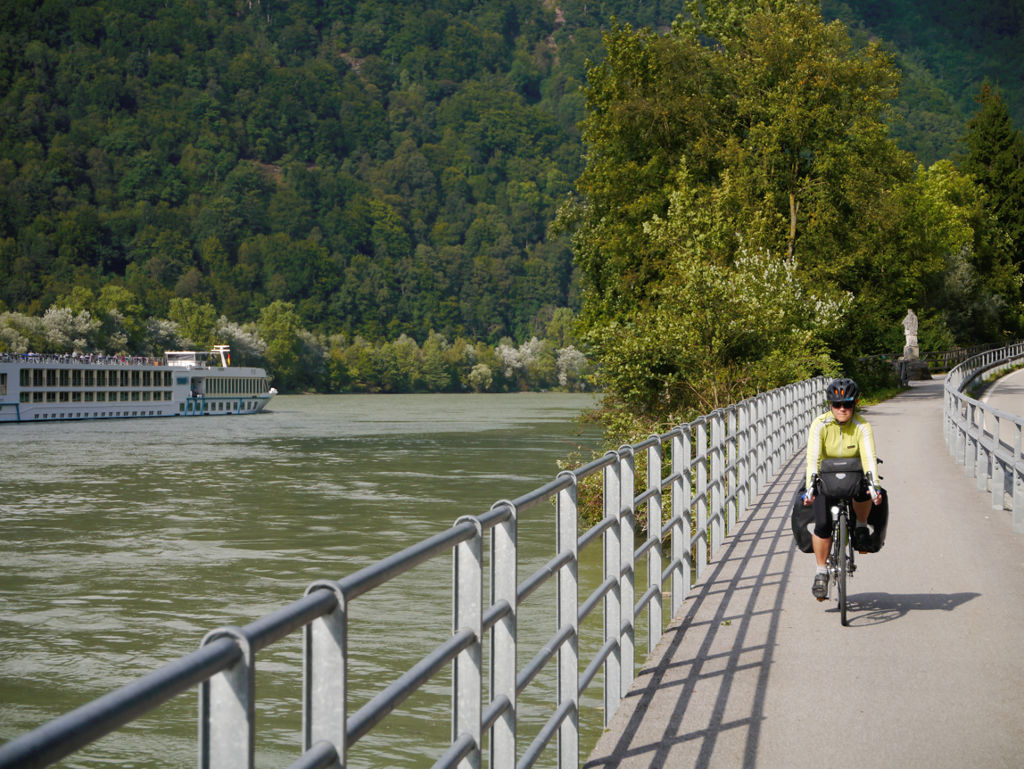
On the Danube bike path, in Austria. We pass river cruise boats all the time. Advertisements for the cruise boats don’t mention how enviously the passengers watch the cyclists.
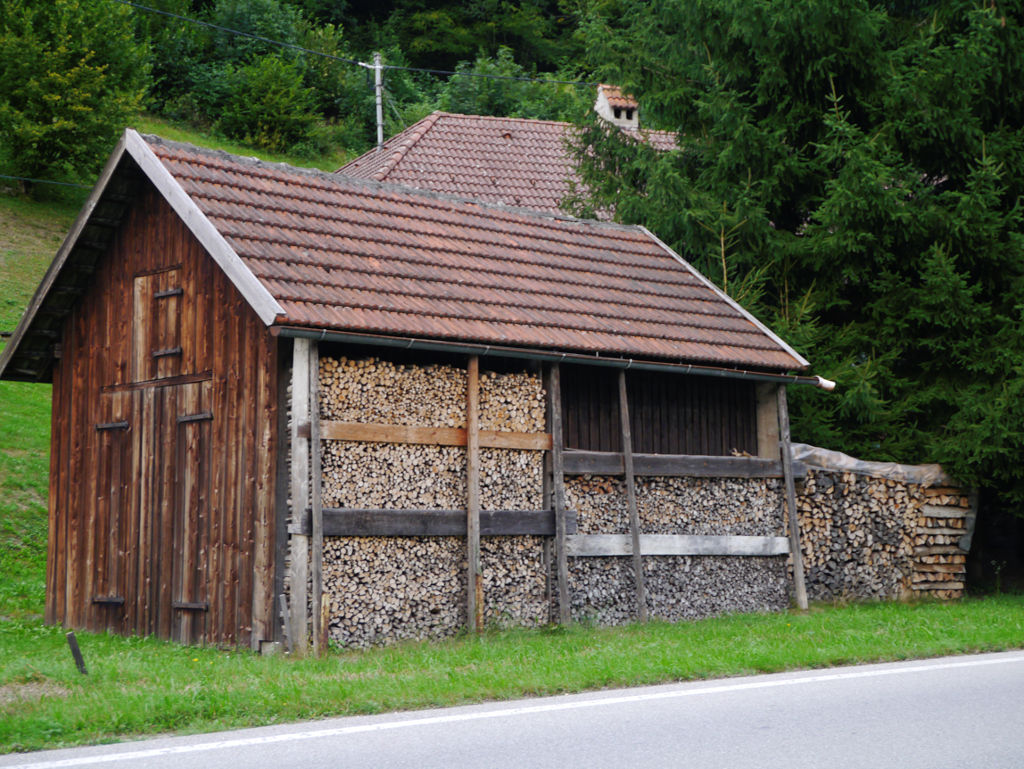
A wood shed in Austria. Notice how orderly the stack is. Around the world woodsheds reveal something about the local culture. You would be unlikely to find this one in Australia. Too orderly.
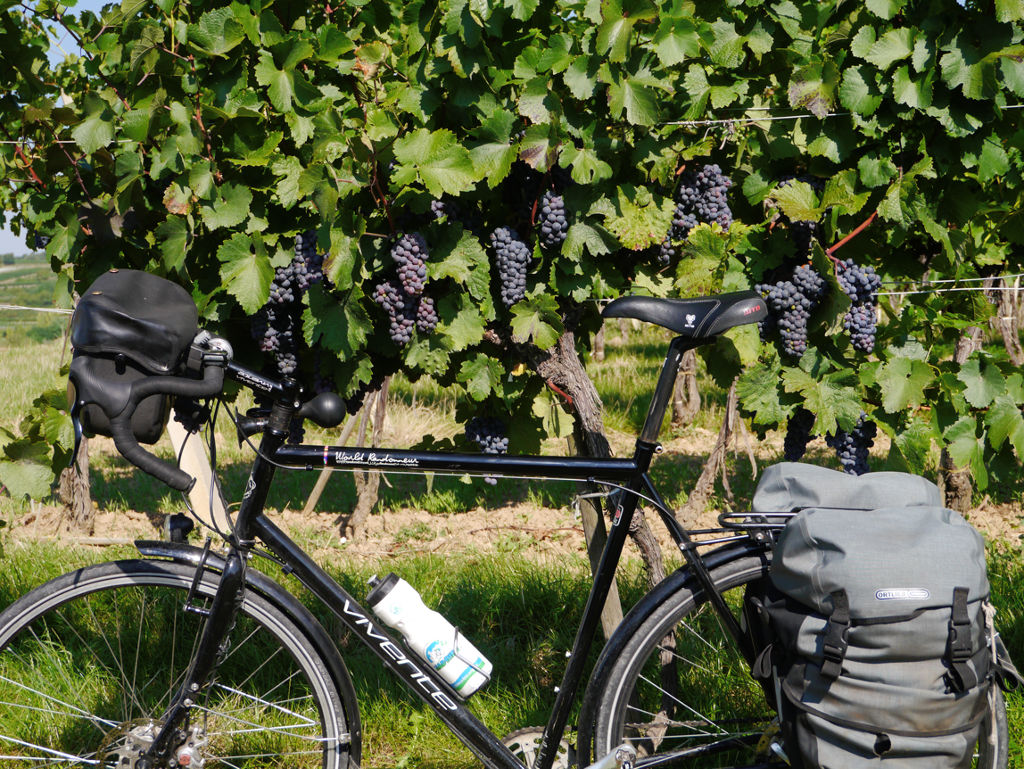
The 2013 test bike with Rohloff, chain tensioner, cable disc brakes, B&M lights, WTB saddle, 36 spoke wheels and Alex rims.
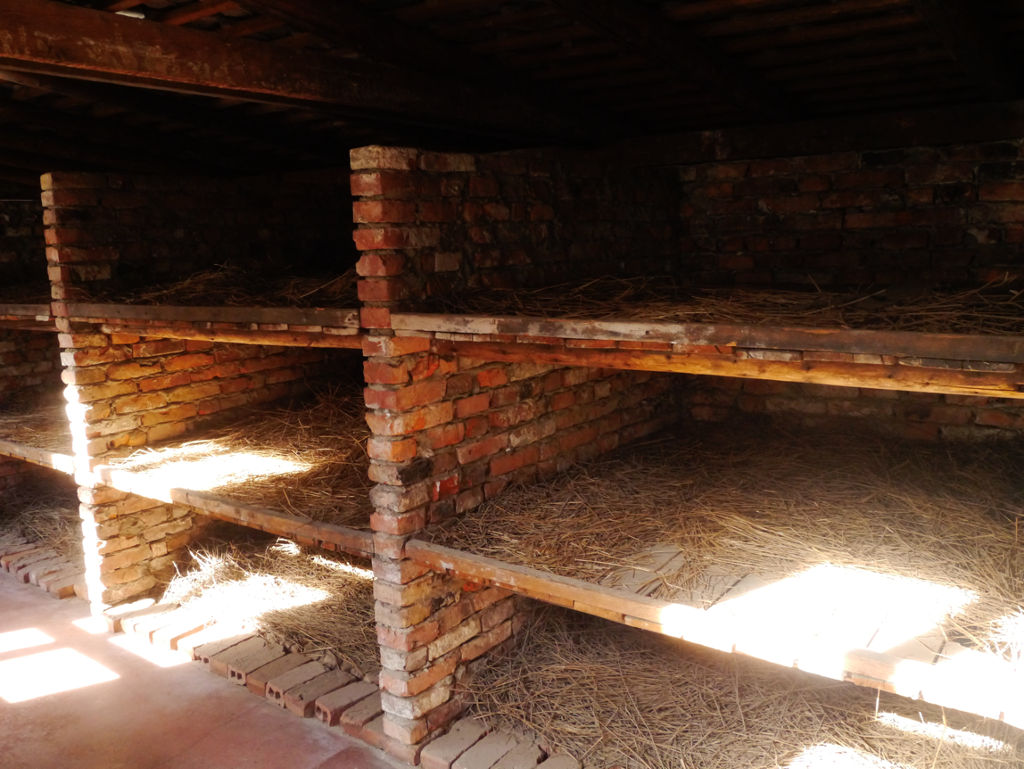
Auschwitz. Reconstructed interior of a brick barracks for prisoners. At least 4-5 prisoners slept on each pallet. There was hardly any heating and no sanitation. 1.1million were murdered in Auschwitz.
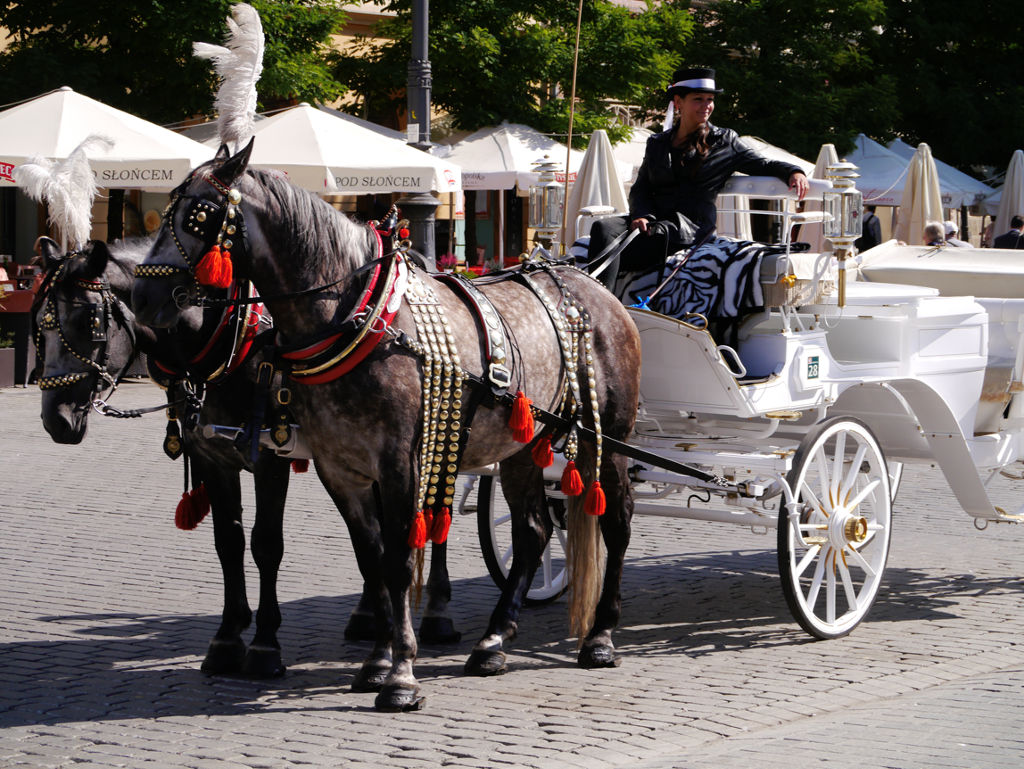
Scene in Krakow. The historic centre is particularly charming.
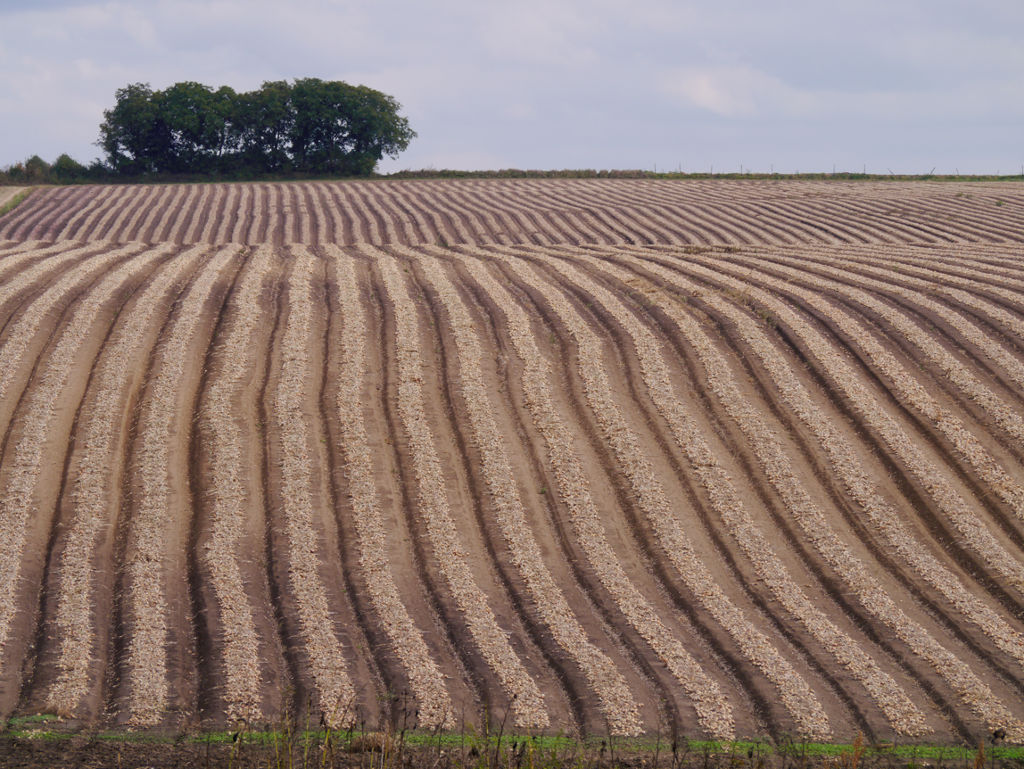
Onions drying before harvest in Poland.
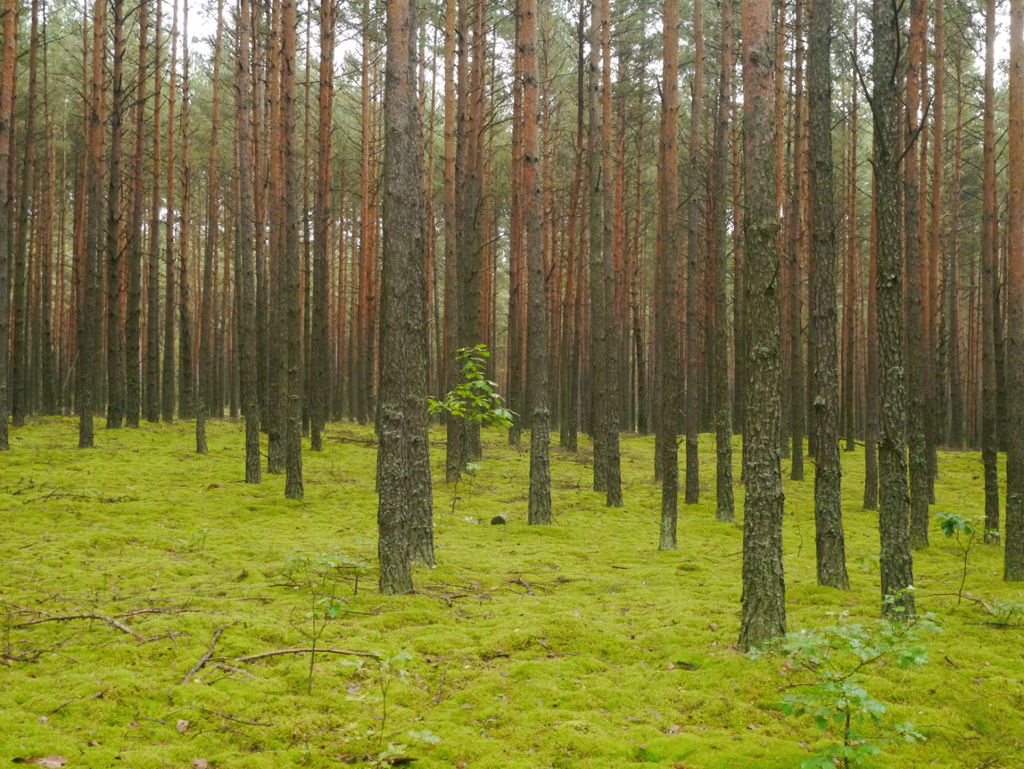
Heading north to Warsaw. The forest floor is covered by moss and lichen. When we arrived in Warsaw we were greeted by a couple we’d met in Georgia on another tour.
A ride from Zurich airport, to Basel, Strasbourg, around Stuttgart, to Munich, then to Lindau and around Bodensee clockwise to Eurobike at Friedrichshafen.
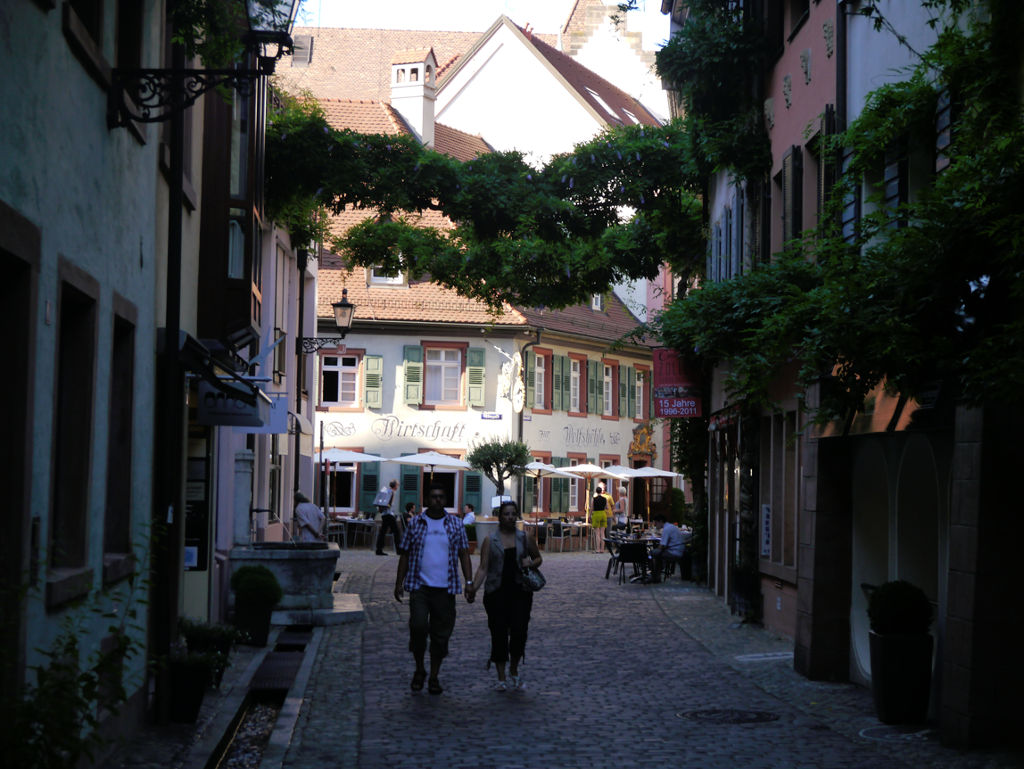
Street scene in Strasbourg.
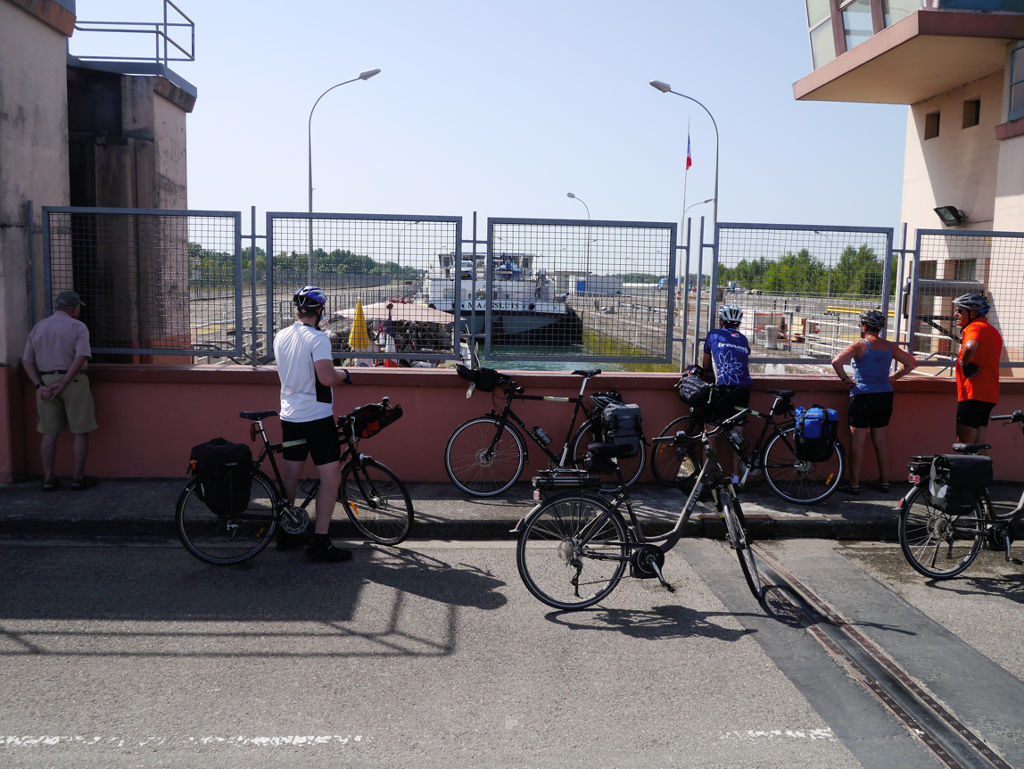
Watching a canal lock fill up. The canal systems throughout Western Europe provide cyclists with thousands of kilometres of cycle paths along or beside their banks.
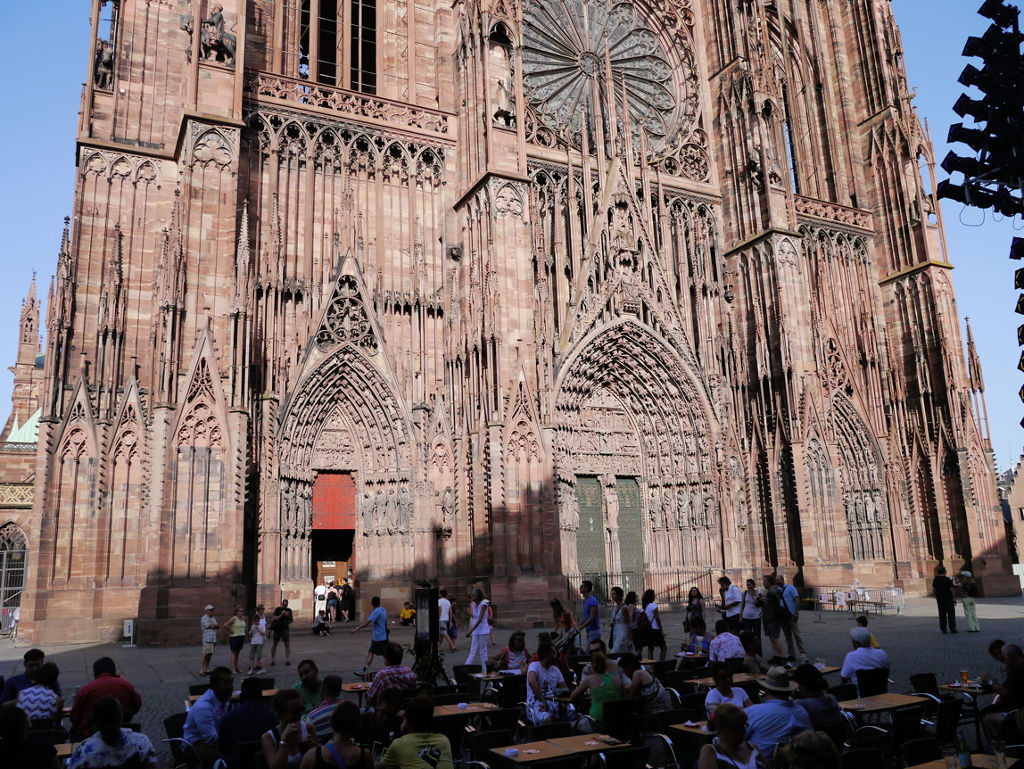
The cathedral in Ulm. It is so impressive. Ulm is a city to pass through on any tour of Germany.
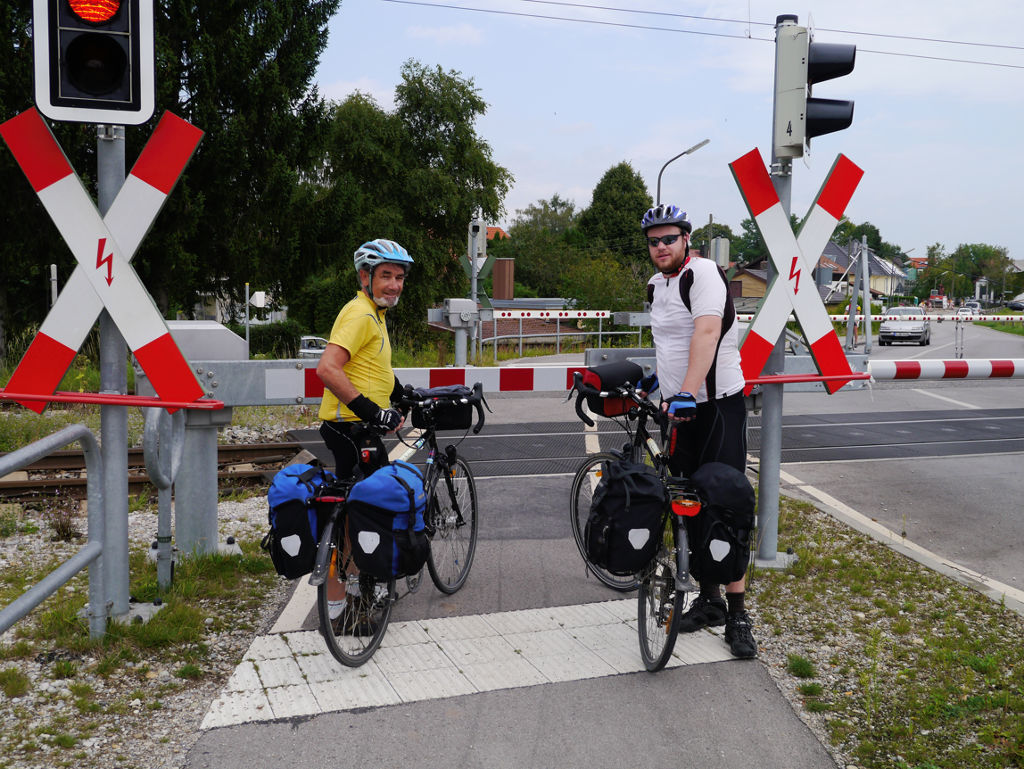
A separate crossing for cyclists.
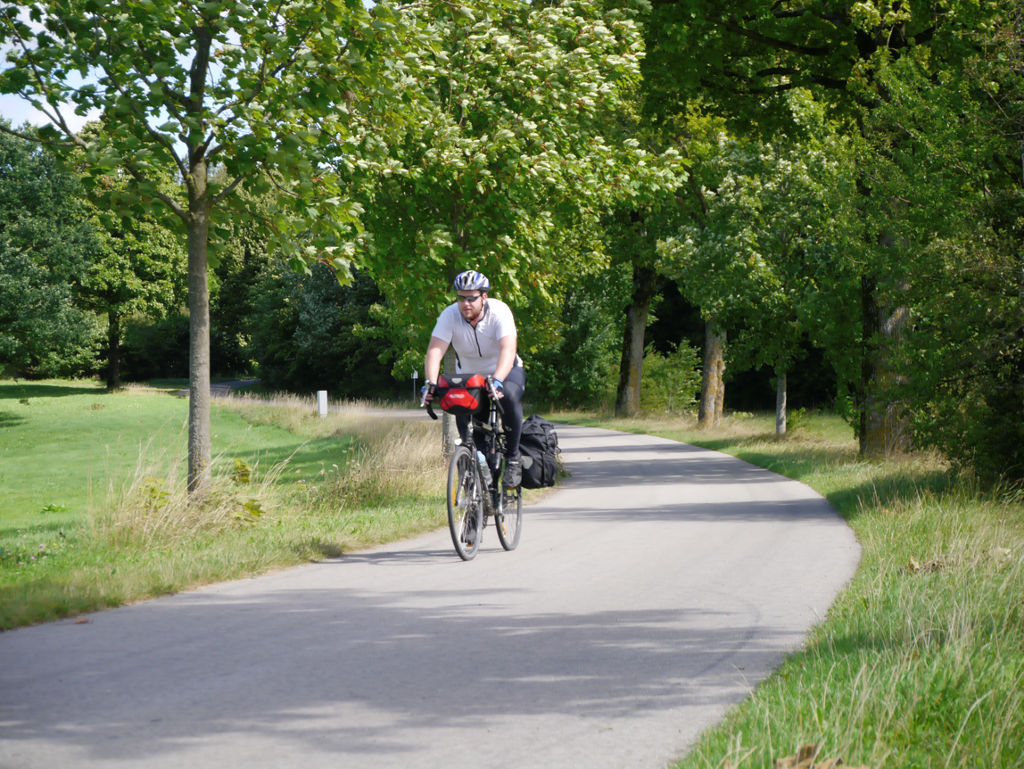
Bavaria is cycle touring heaven. You don’t need to choose a route based on where the cycle paths are. You decide where to go and there will be a way to go on bike paths.
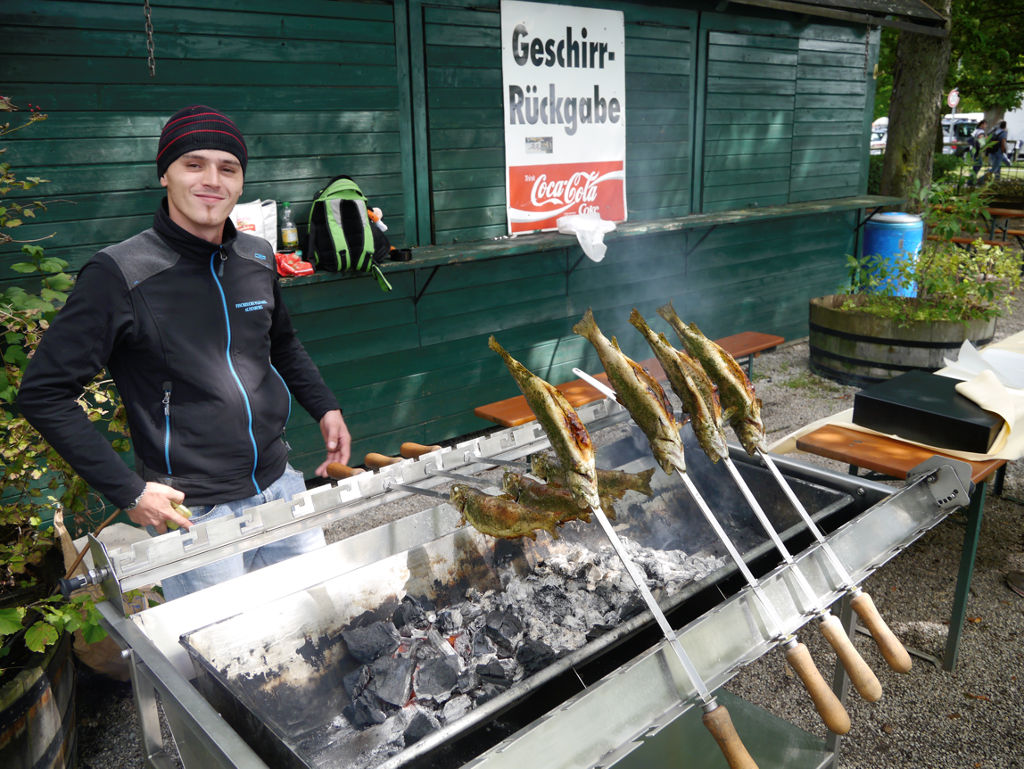
Lunchtime at the lakes south west of Munich.
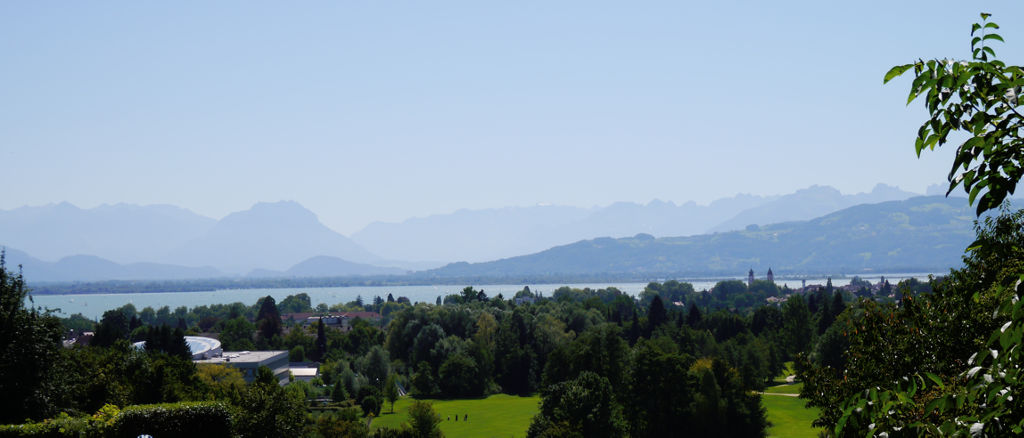
Coming down to Lindau from Meiningen. Bodensee with the Swiss alps on the other side. This area is literally teaming with cyclists doing the multi-day ride around the lake.
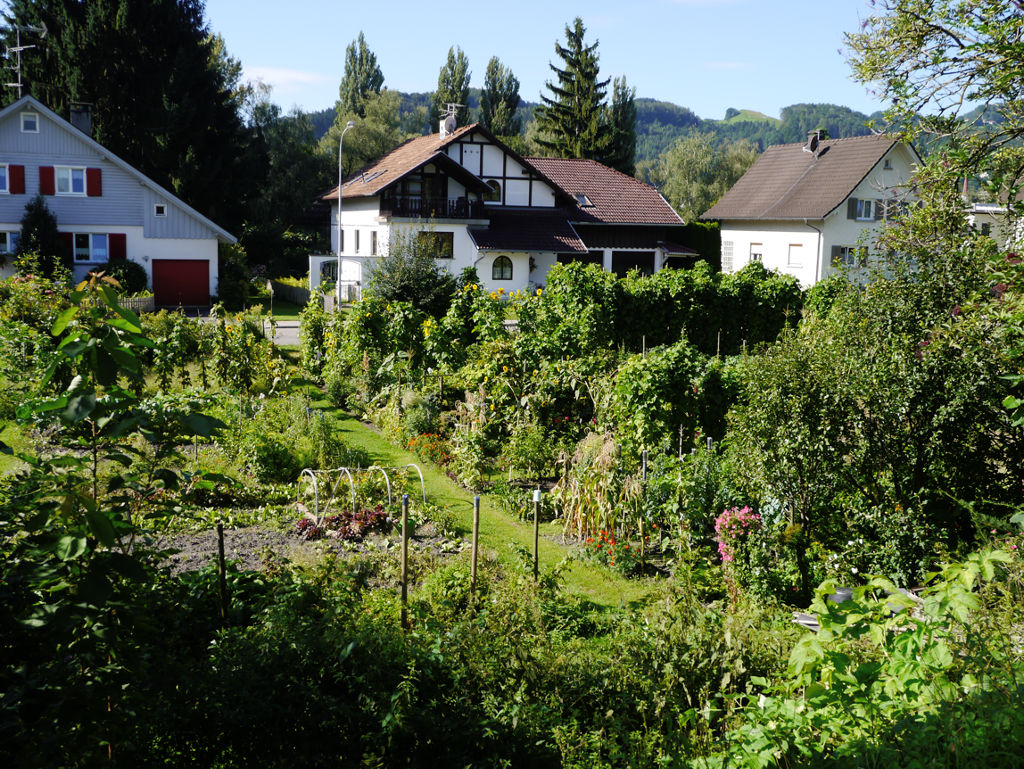
Home vegetable gardening and communal gardening is very popular in this region and from the bikes we admire them.
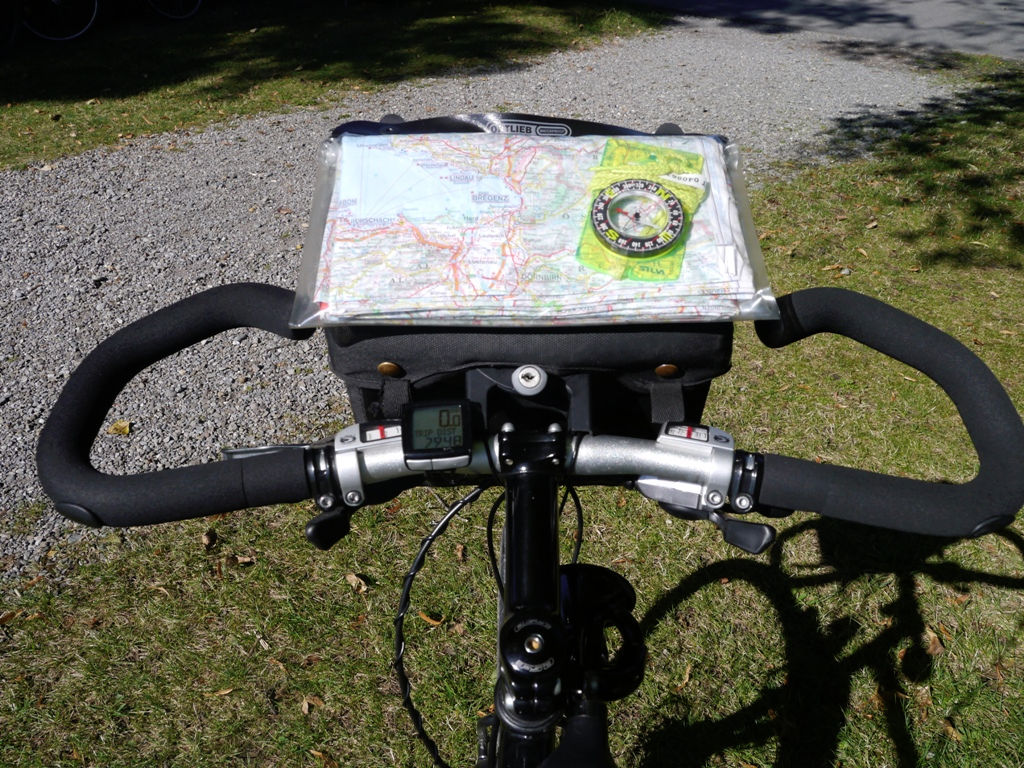
This has been a test ride of the Humpert trekking bar. Verdict? Better than other trekking bars because it does not reduce the reach on the bike and it offers settable angles for the extensions.
A ride in two sections. Firstly, Vienna to Sofia in Bulgaria to connect two sections of earlier VWR test-riding from Amsterdam to Arak in central Iran. This has been done in bits and pieces over the years and is being completed. The second section was in the cycling paradise of Switzerland. The start was a ride to Sydney airport, buying a carton and flying to Vienna. The end was riding into Zurich Airport, buying a carton and flying back to Sydney.
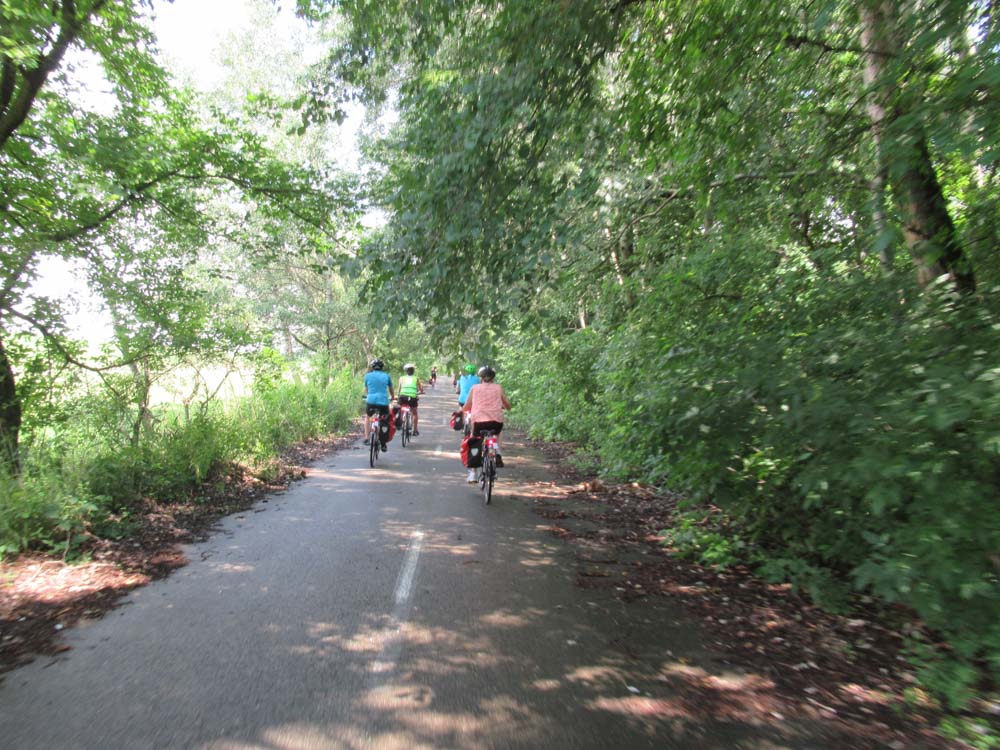
Much of the first few days I’m on the EV6, the EuroVelo route along the Danube. Here is a group of English women in Slovakia.
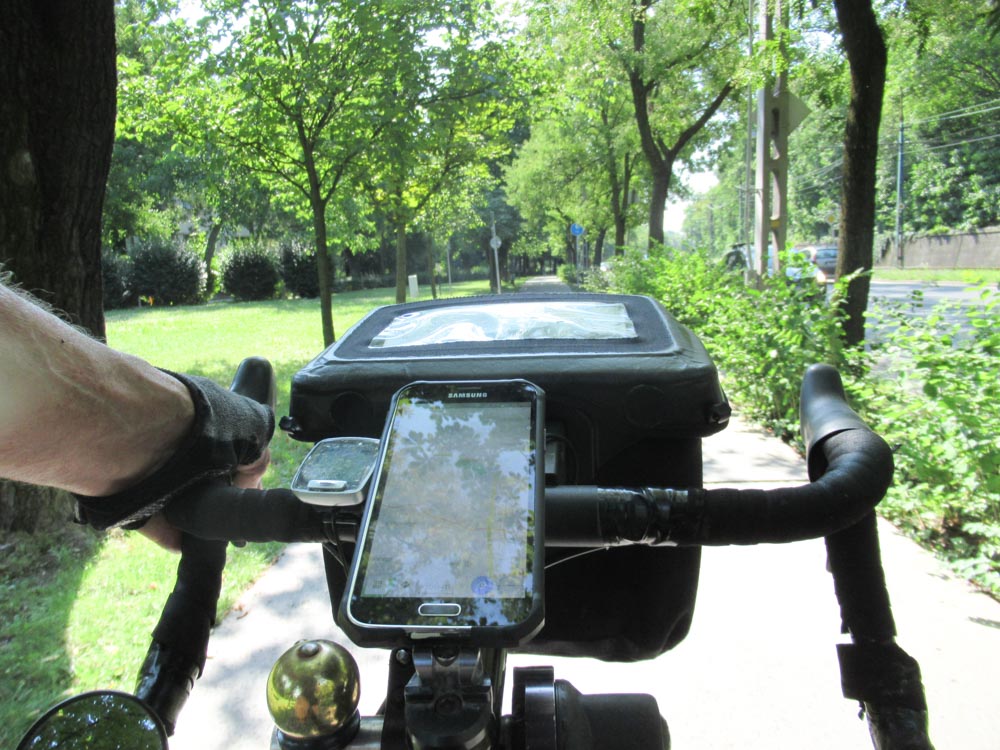
Coming into Budapest. My last time through here was pre-GPS. Now it is so easy as the route and current location are right in front of me.
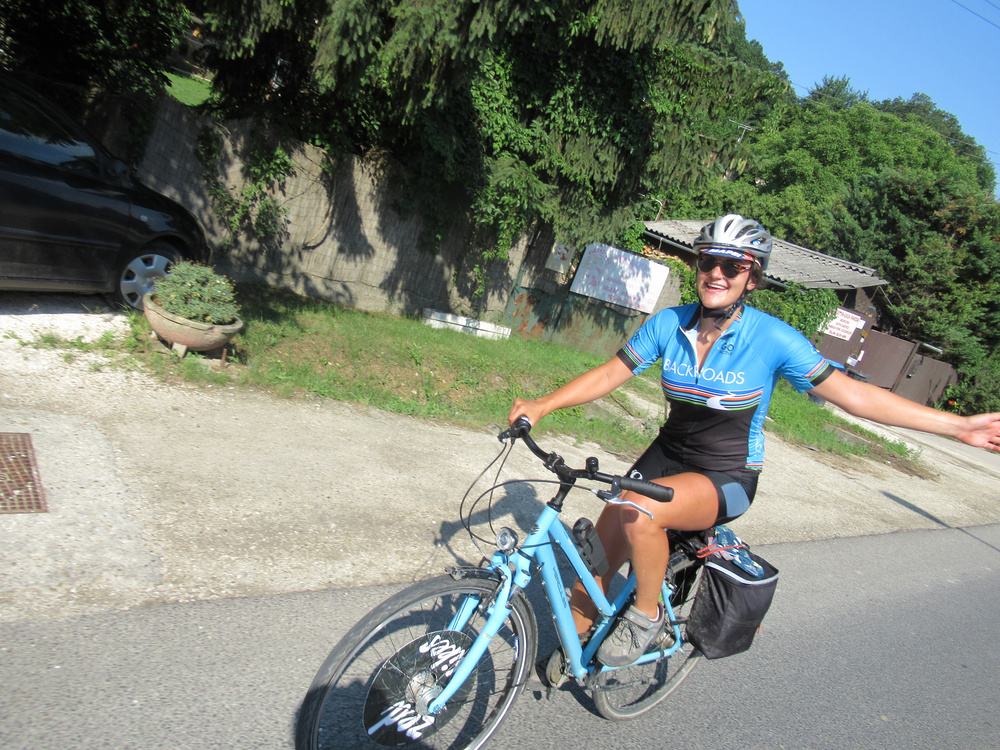
I’m riding with my friend from Backroads who is having a break from tour-leading in Italy.
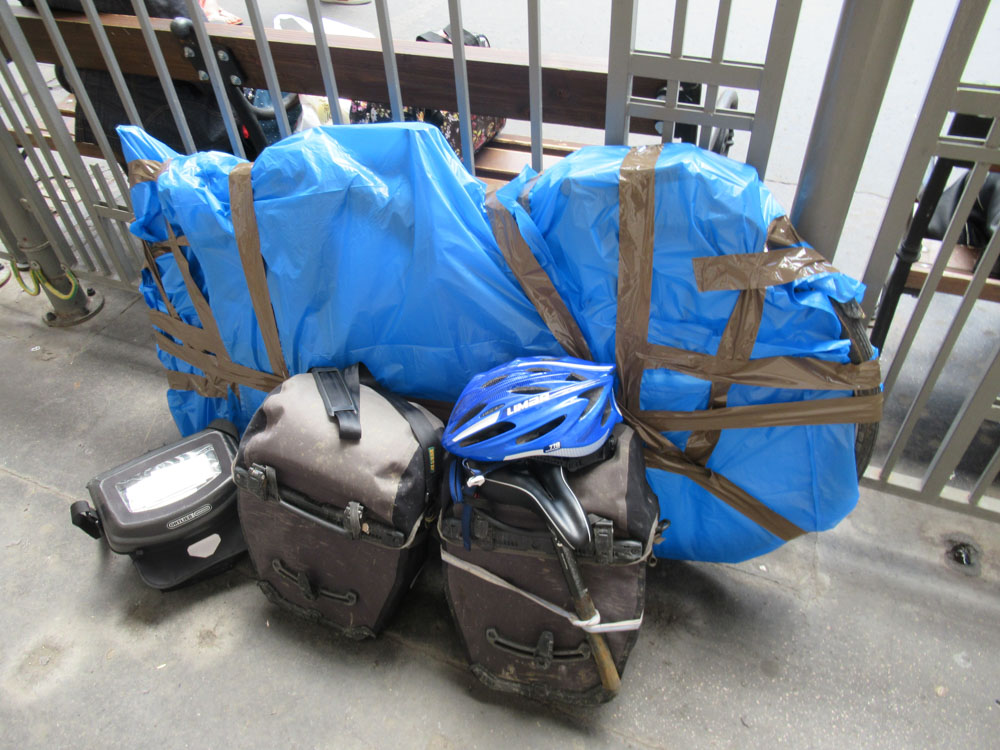
Having previously ridden from Budapest to Arad in Romania I’m taking the train to Arad. No bikes allowed though. So, I’ve got some big bin liners from Aldi.
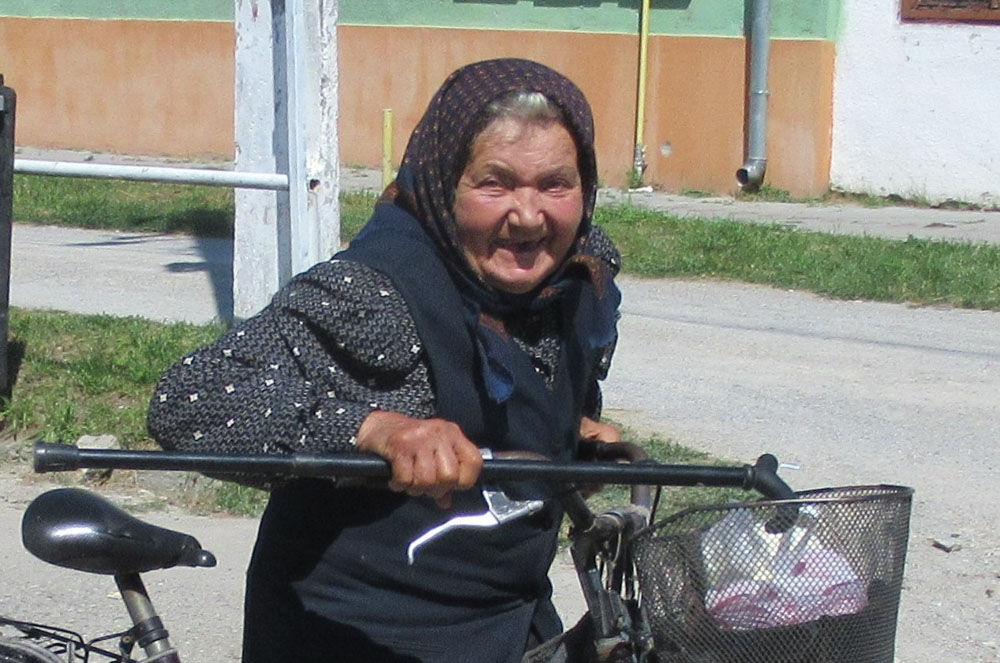
In a Romanian town an old woman manages to still ride her bike. I’m full of admiration.
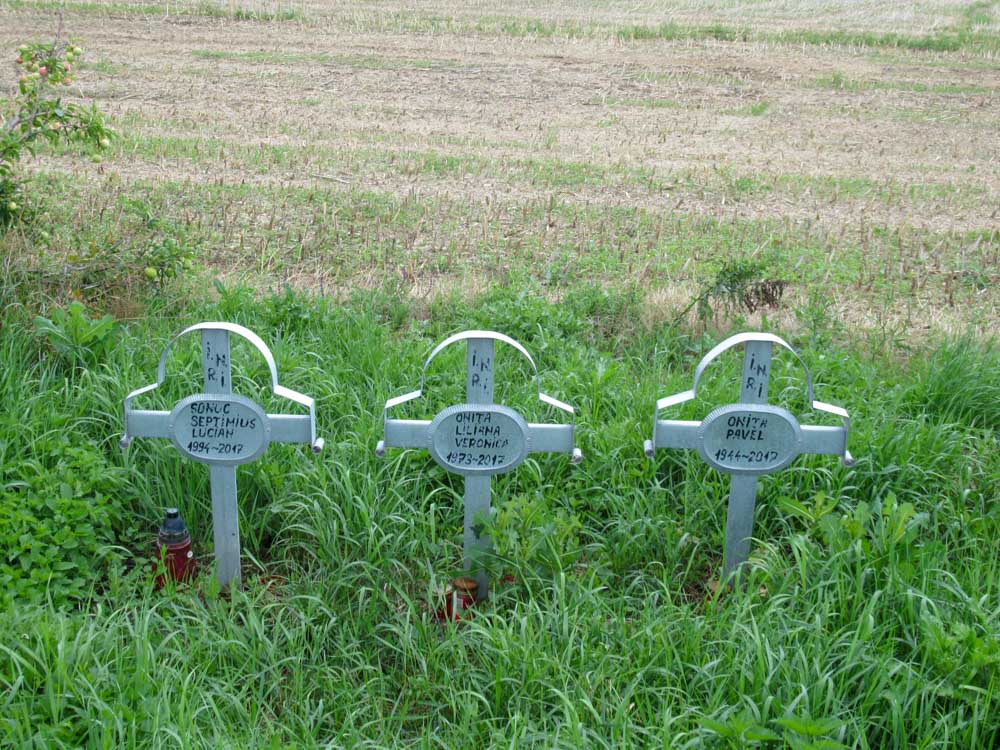
This shot is really a plug for having a mirror on the bike. Through Romania and Serbia I’m passing literally hundreds of roadside memorials. Drivers don’t seem particularly bad but there is no shoulder and the mirror keeps me safe.
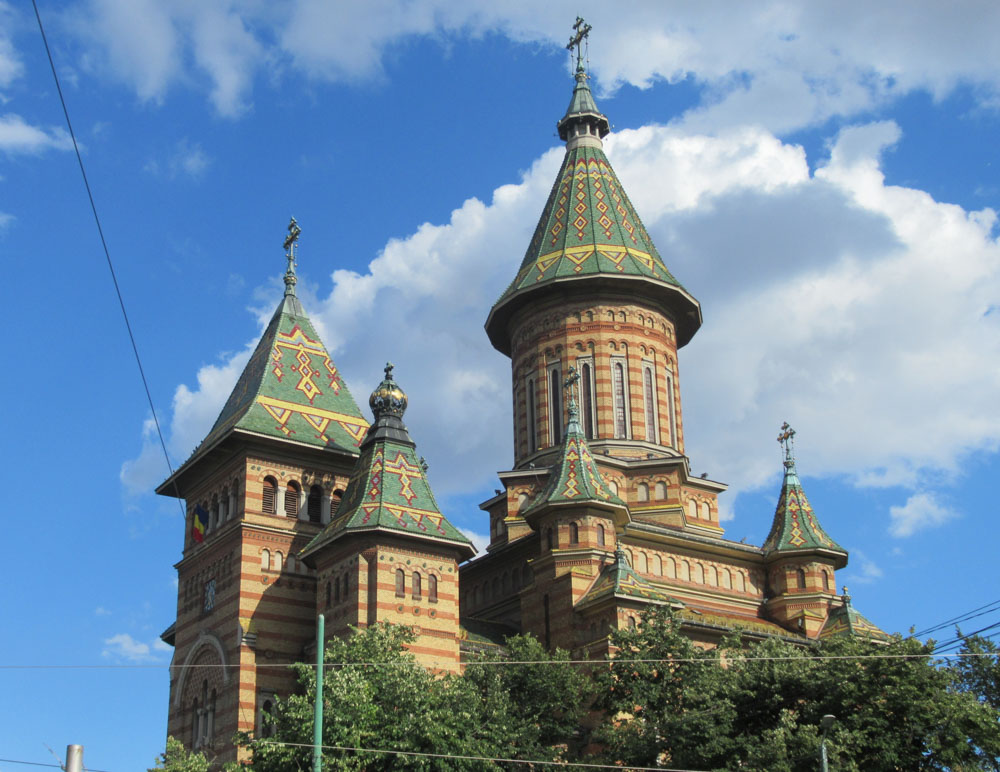
In central Timisoara, Romania. Romania is a great country for touring.
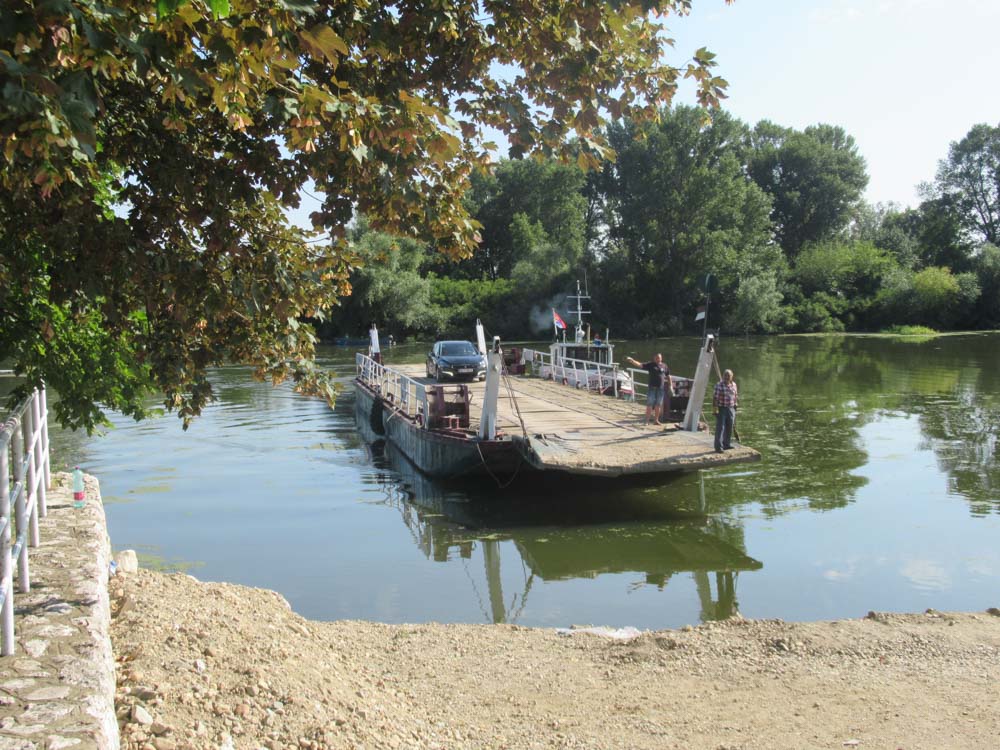
There is a ferry crossing over the Danube (the big river is not visible here) from Romania to Ram in Serbia. This saves me having to go a long way up-river to a bridge.
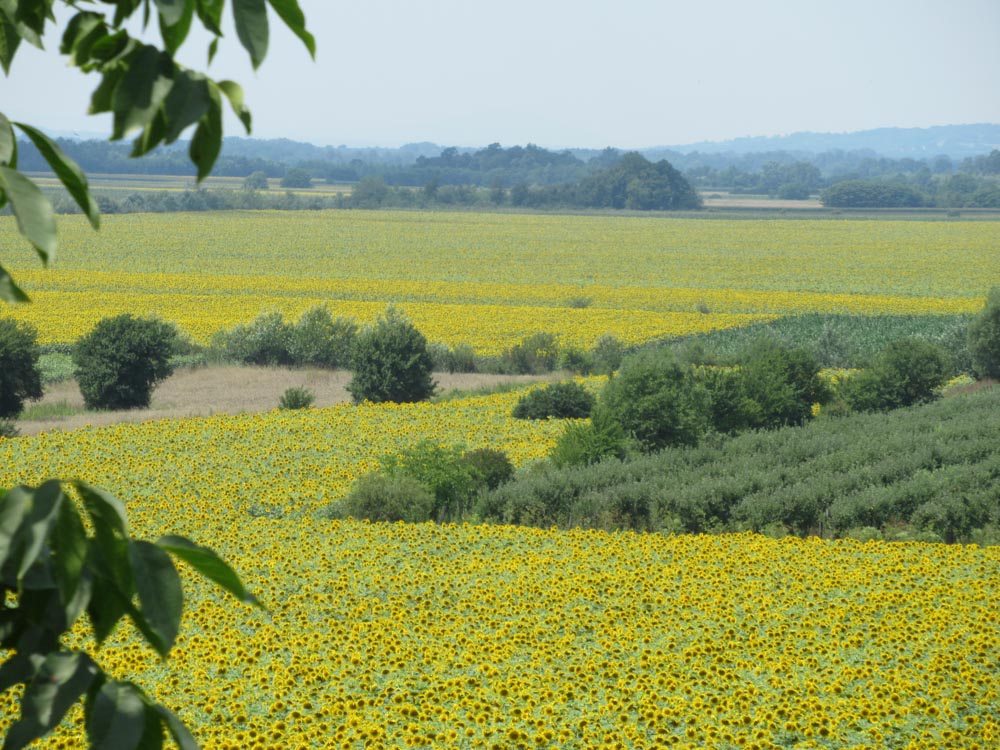
There must be trillions of sunflowers that I’m passing all day every day. I can’t stop photographing them but shots don’t convey the real beauty.
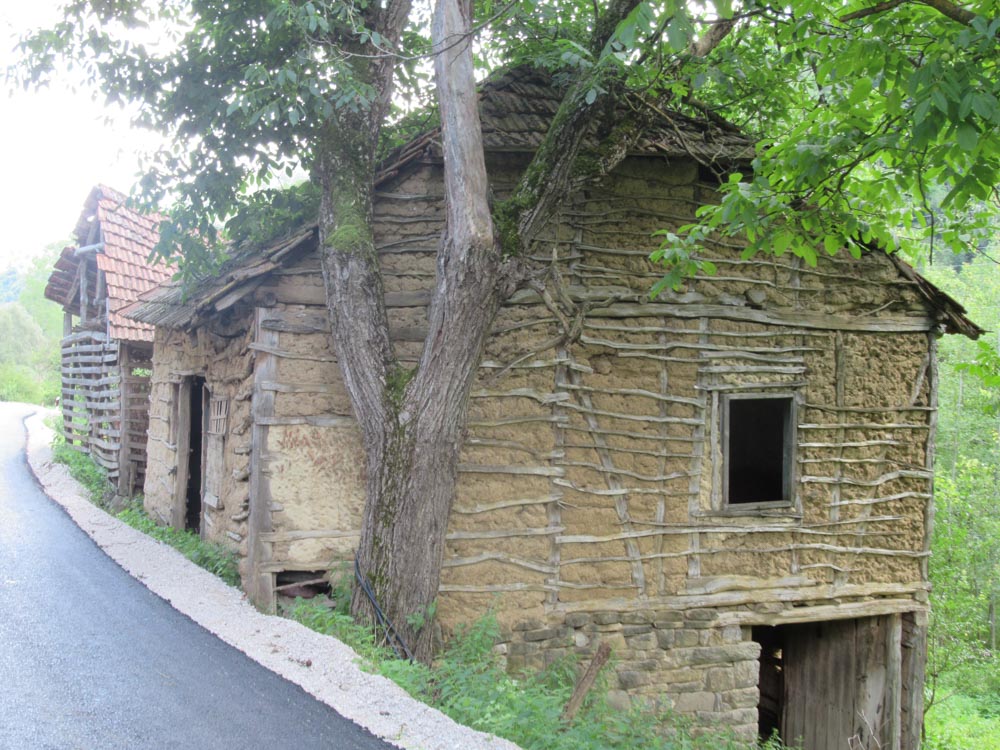
To avoid traffic I’m in the mountains in eastern Serbia. It seems to be deserted. A local tells me “all the young people went to live in the city”.
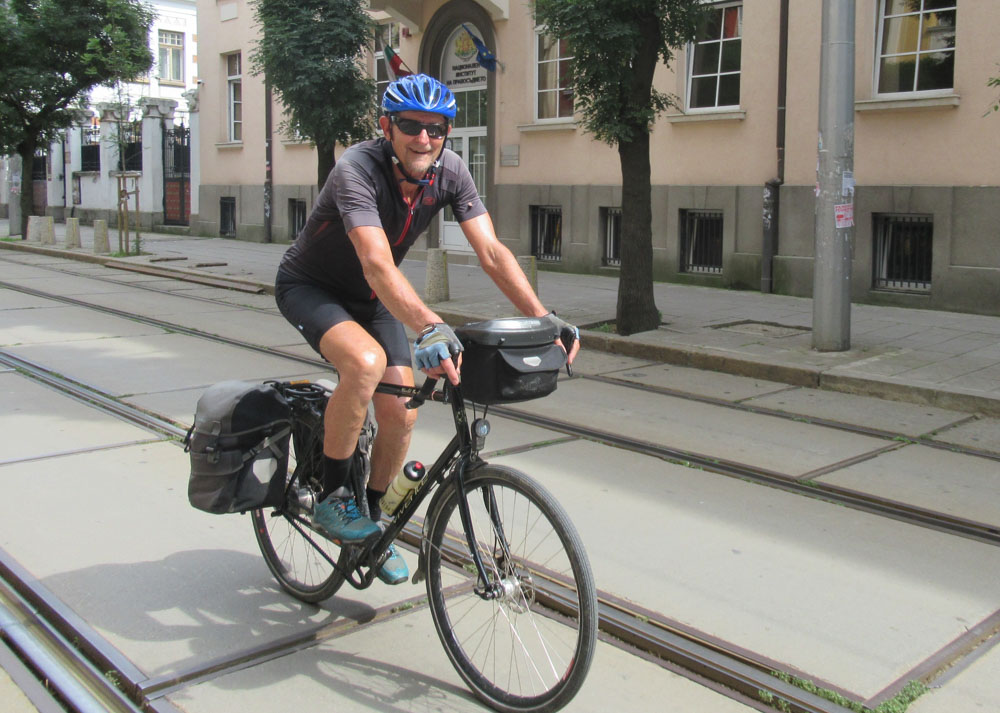
From the north, arriving in Sofia, the capital of Bulgaria. Many years ago I arrived here from the south, having come up from Greece.
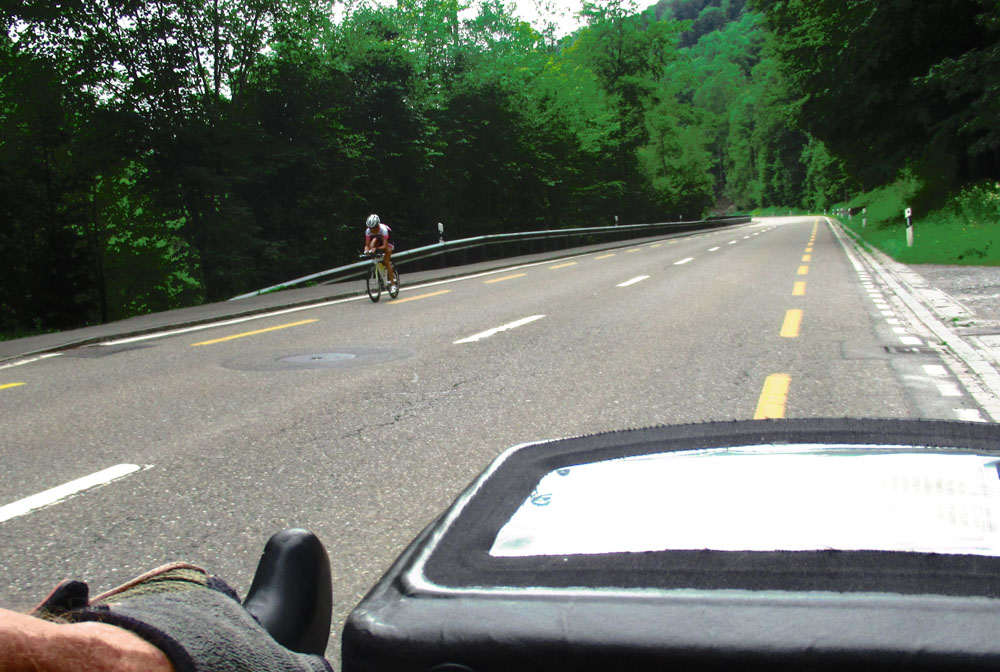
After attending the annual Eurobike show in southern Germany, I cross Bodensee to Switzerland. There are off-road bike routes in most places but for roadies who want to be on-road, there is a demarcated shoulder. Always!
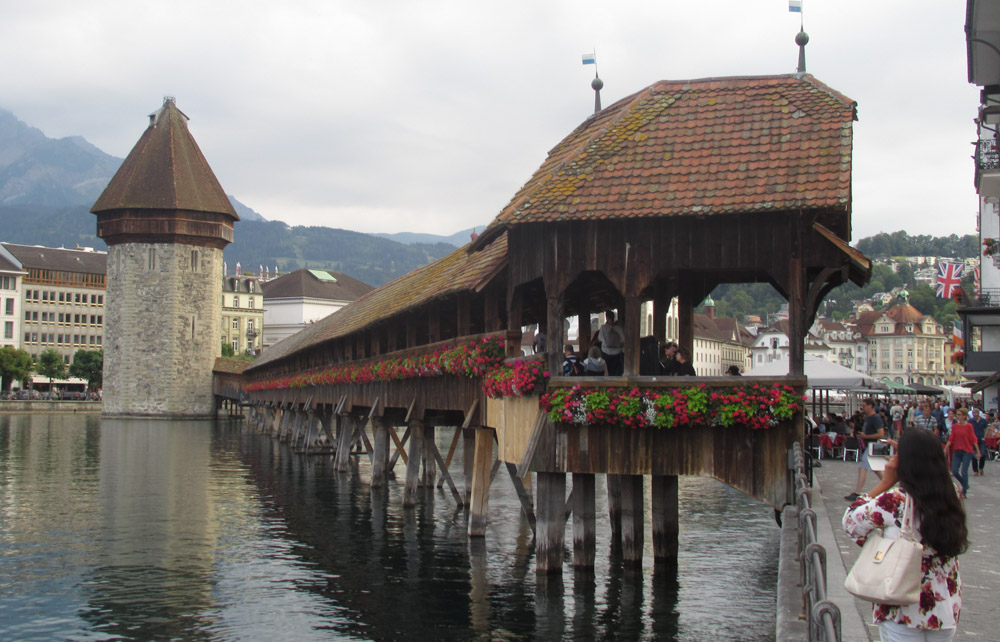
The covered bridge in Lucerne.
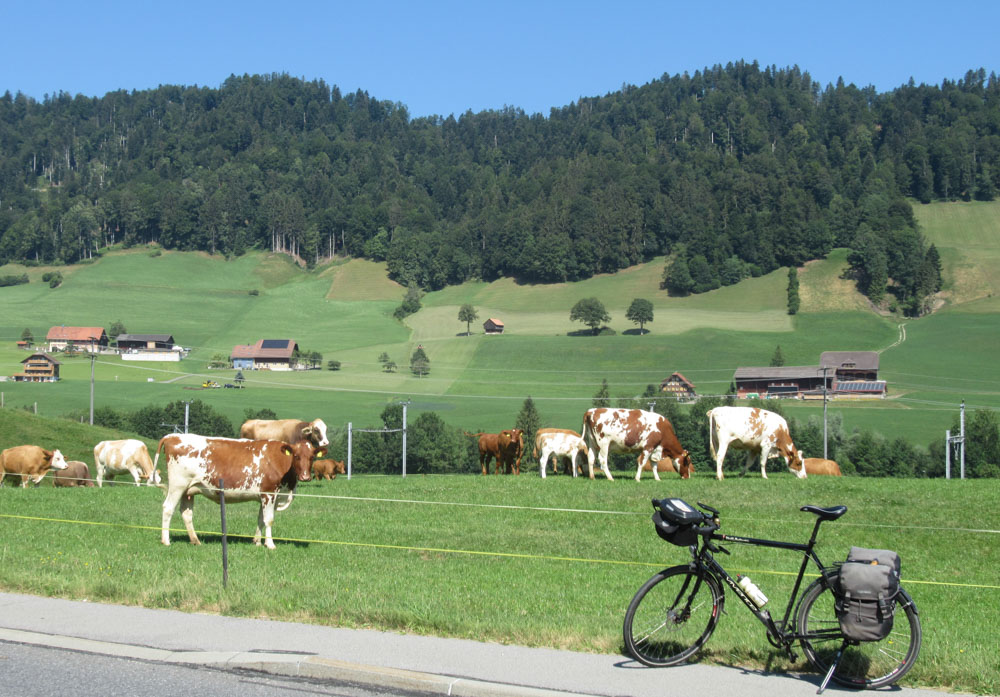
In the UNESCO Biosphere between Lucerne and Bern.
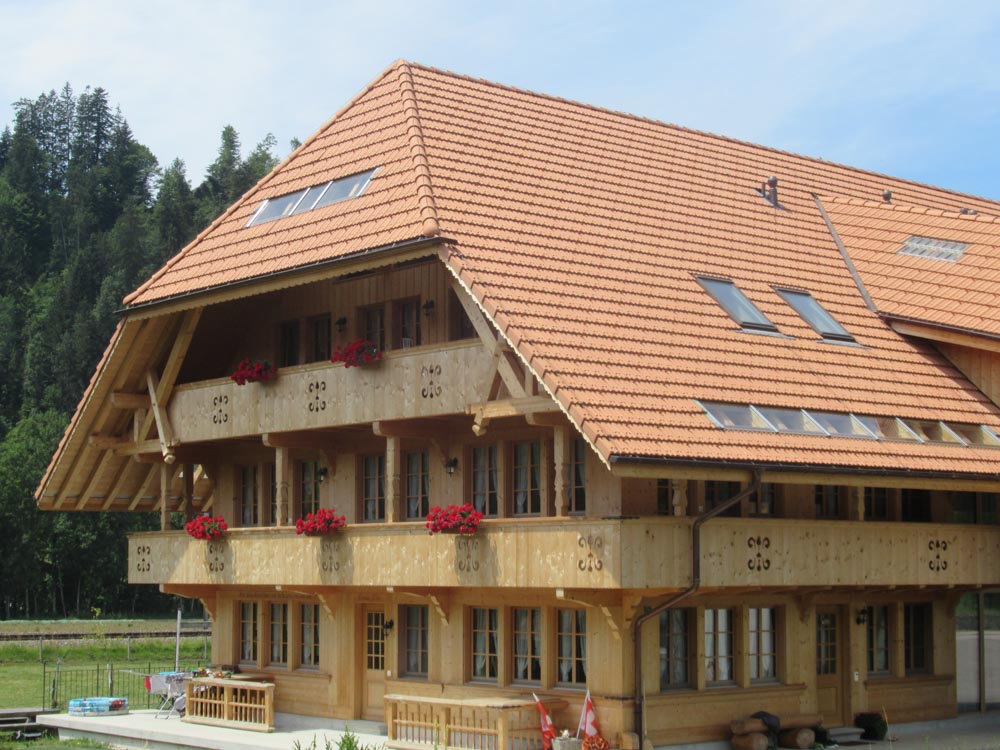
New buildings in Switzerland are frequently entirely (apart from the foundations and roofs) wooden. It is impressively sustainable. The wood has likely been grown and milled nearby.
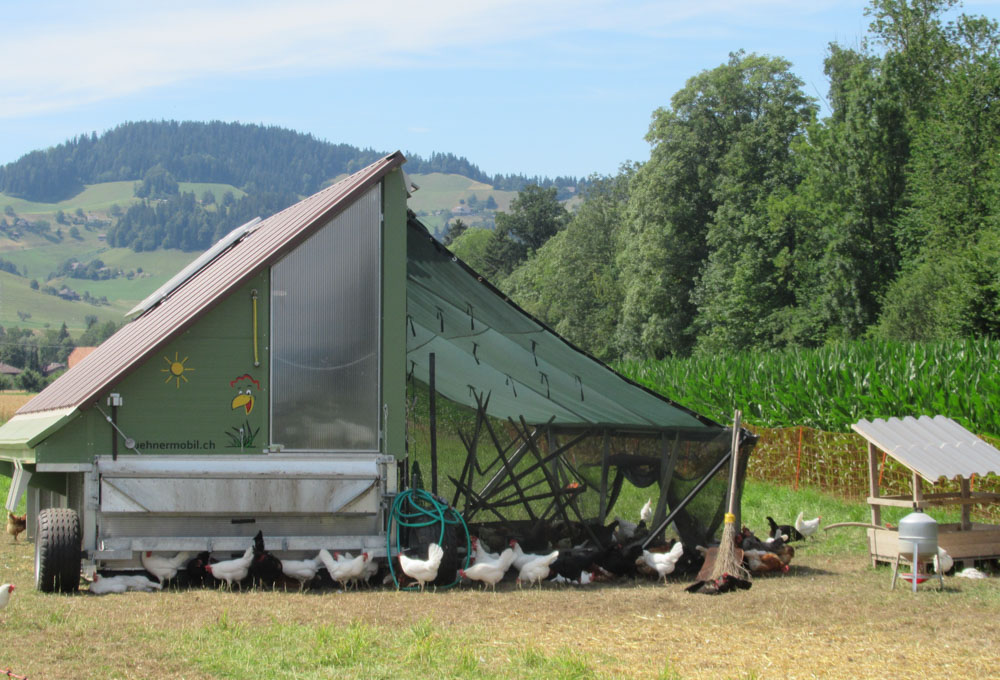
I’m passing quite a few mobile chook set-ups. They just move them around paddocks. In Australia, 10,000 chooks per hectare (one per square metre) qualifies as free range. Not here.
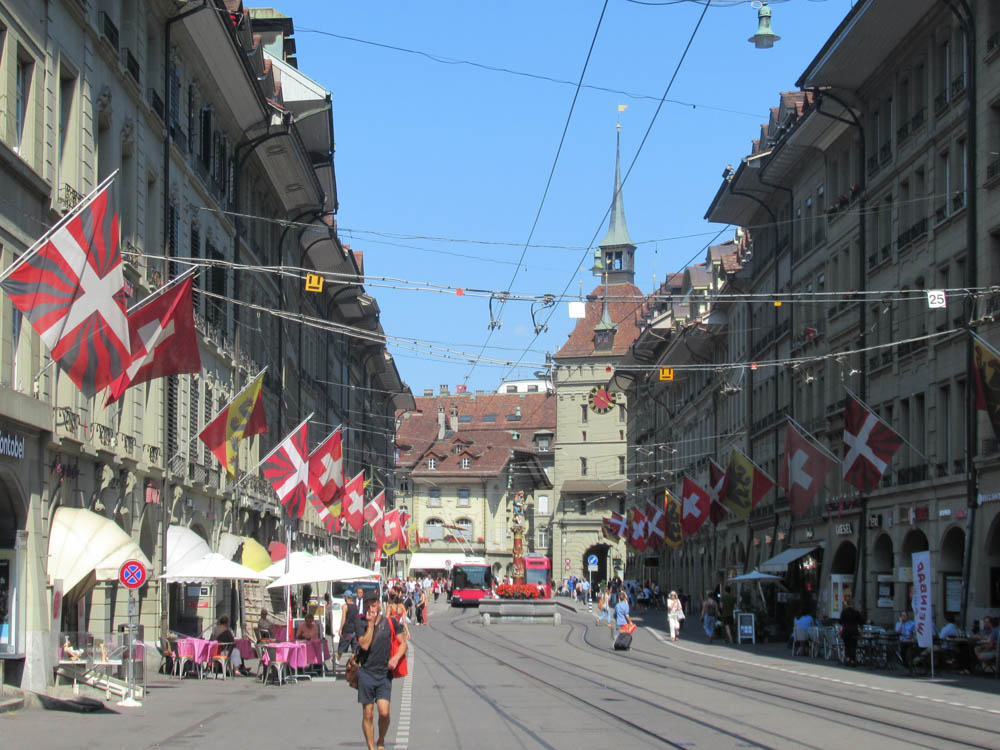
Downtown Bern. Switzerland is highly recommended for cycle touring. All levels of government endorse and encourage cycling. The cycling infrastructure is fantastic. Now I’m off to Zurich, three days away. I know I can get a bike carton at the airport.
A tour of the Pilbara in Western Australia. Newman to Port Headland. All dirt.
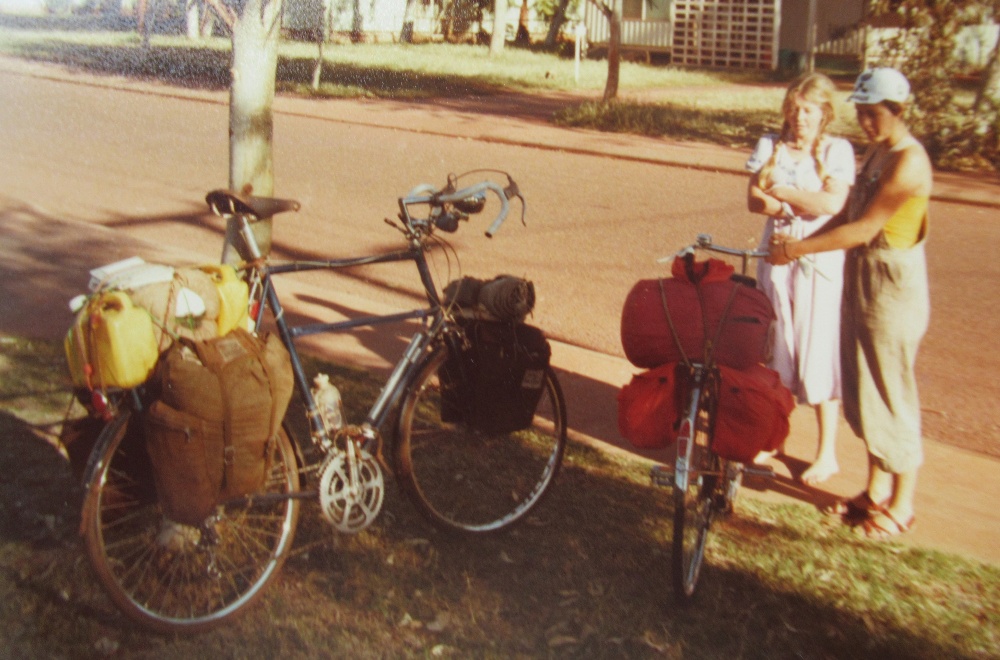
We are ready to go. It’s late winter so not yet hot but there is no water for vast distances and only the Iron Clad Hotel in Marble bar, 300KM from Newman, where anything could be bought.
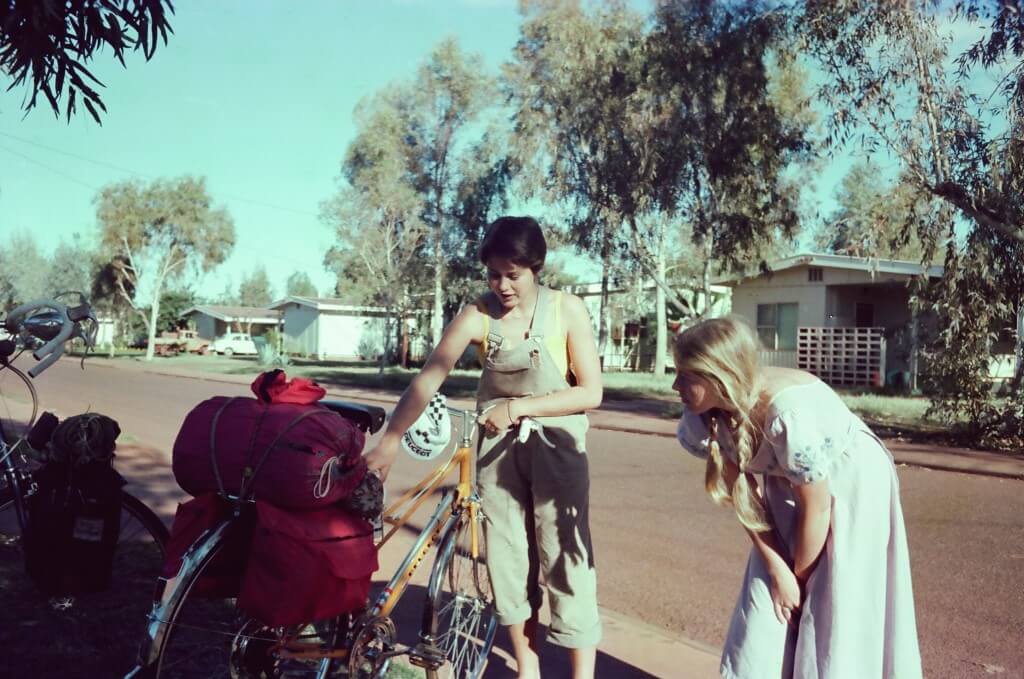
Explaining how it works.
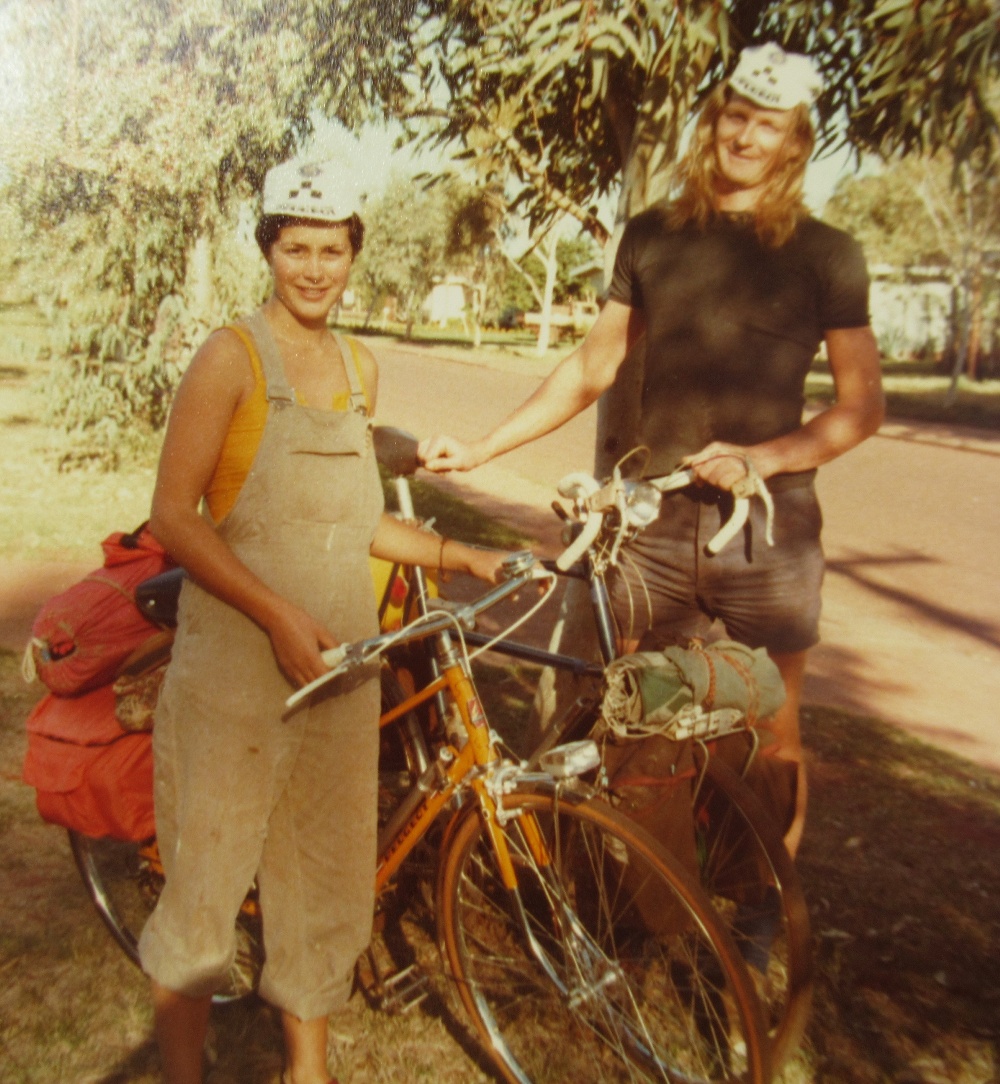
My bike is in the early stages of what is now Vivente’s World Randonneur development. 1-1/2” wide tyres, wide range gears, pannier system luggage capacity, relatively high drop handlebars, double butted steel frame, lighting and mudguards.
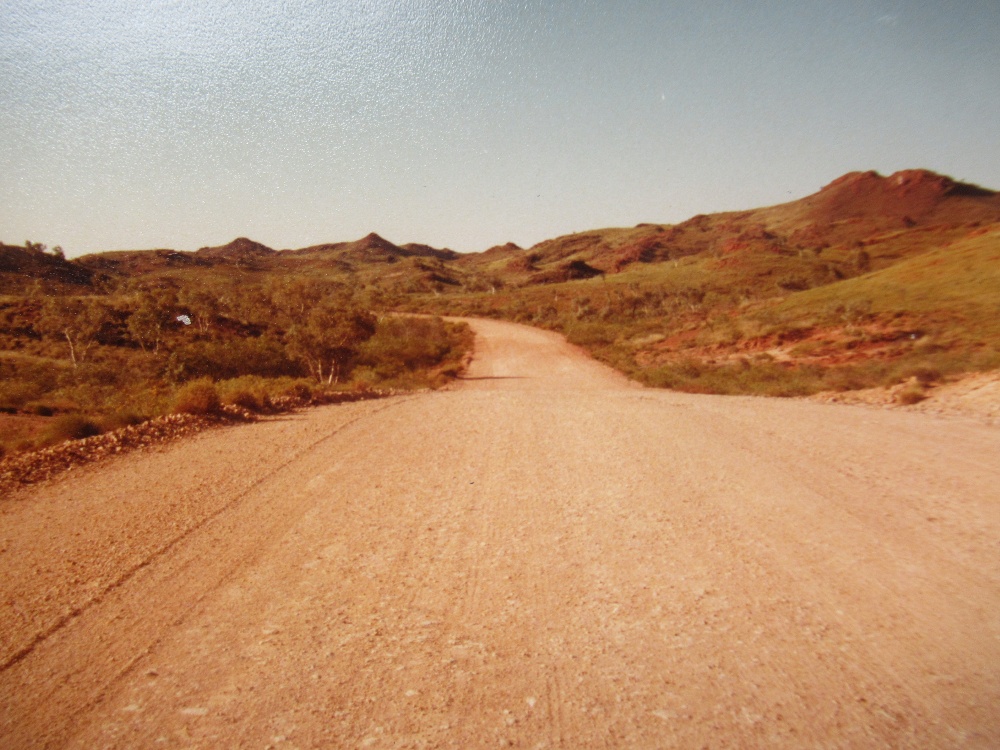
Heading out through the Pilbara desert.
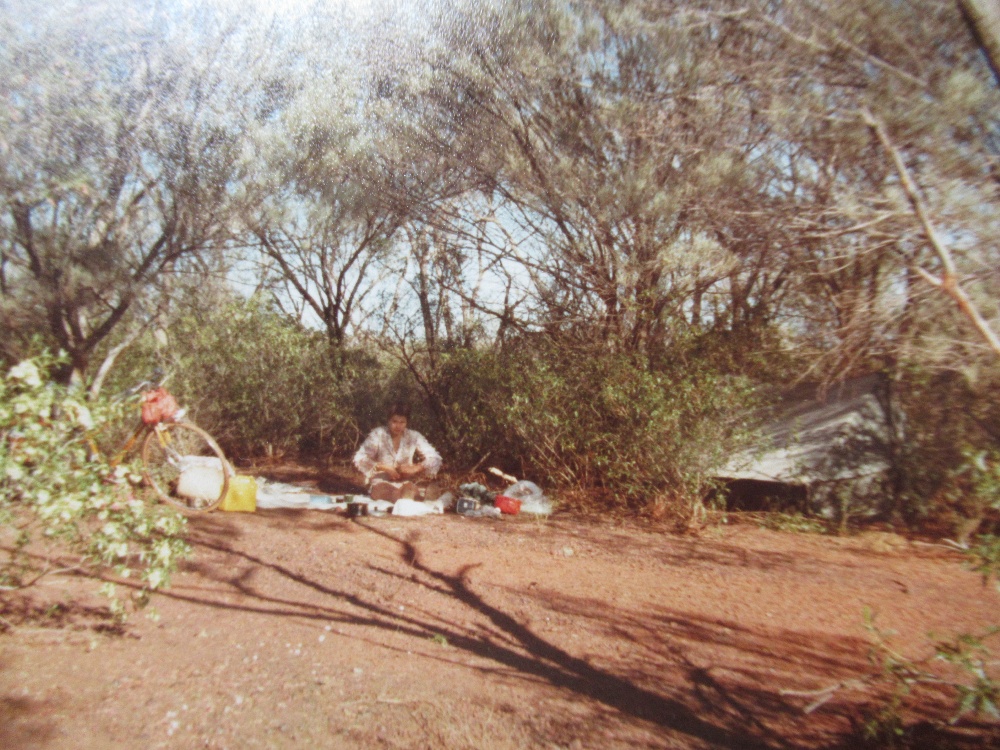
Beautiful camp sites.
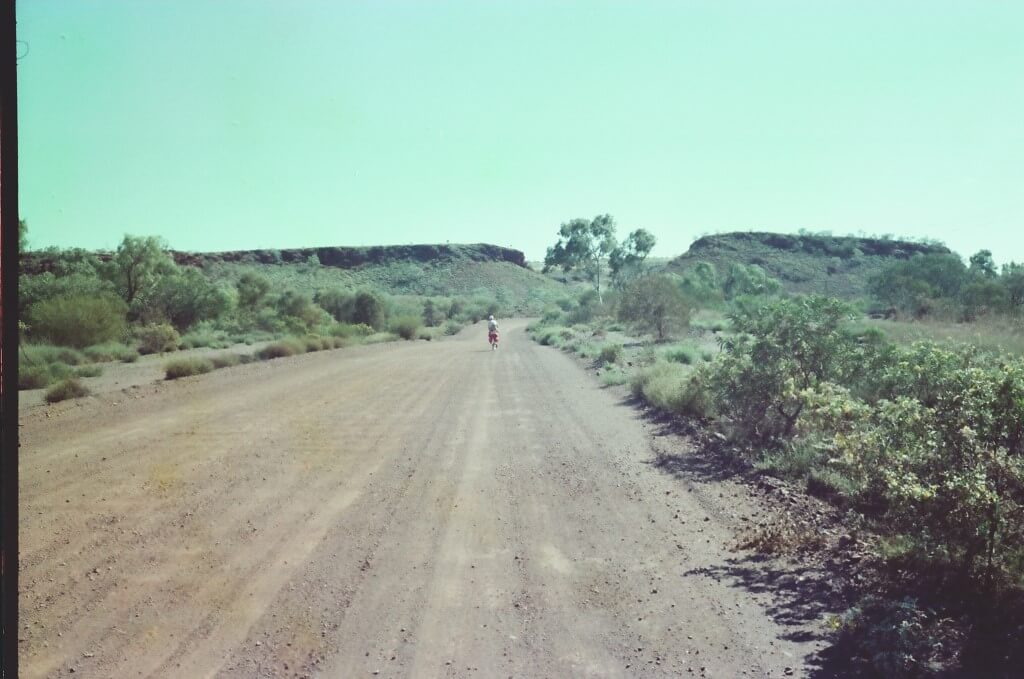
On average we were passed by three cars or trucks a day.
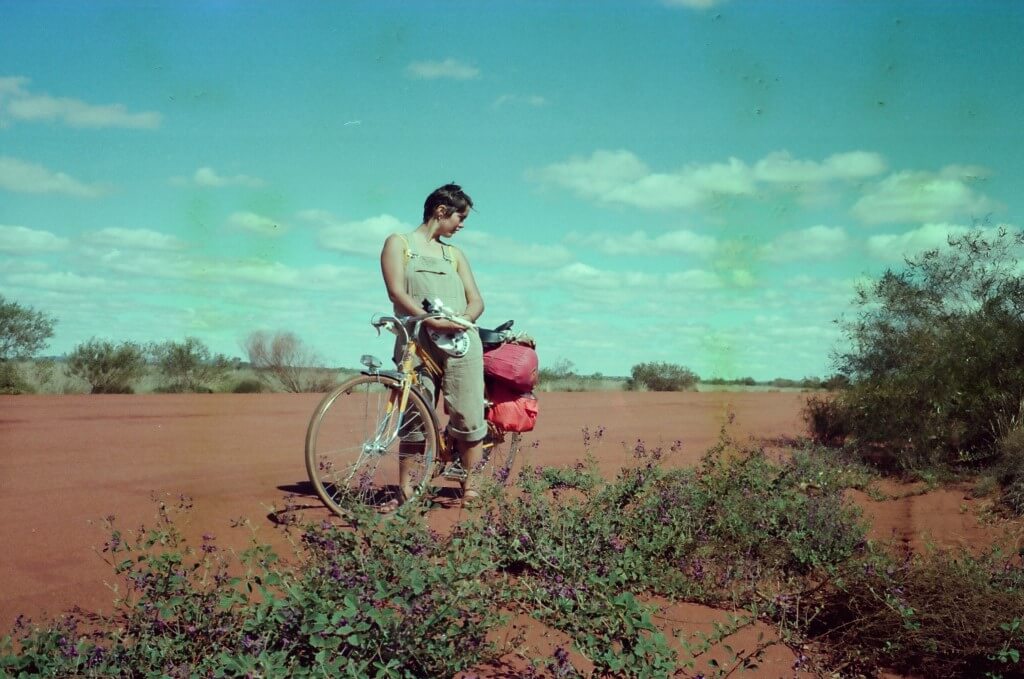
Anyone in a car was not stopping but we were in awe of the beauty around us and took it in.
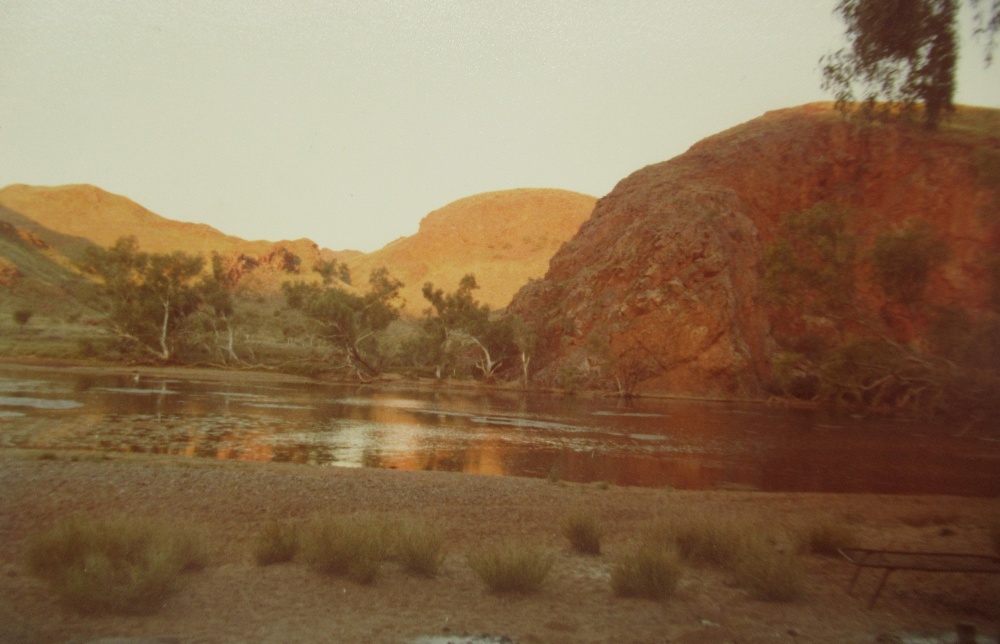
There were two gorges along the way where we swam and got water.
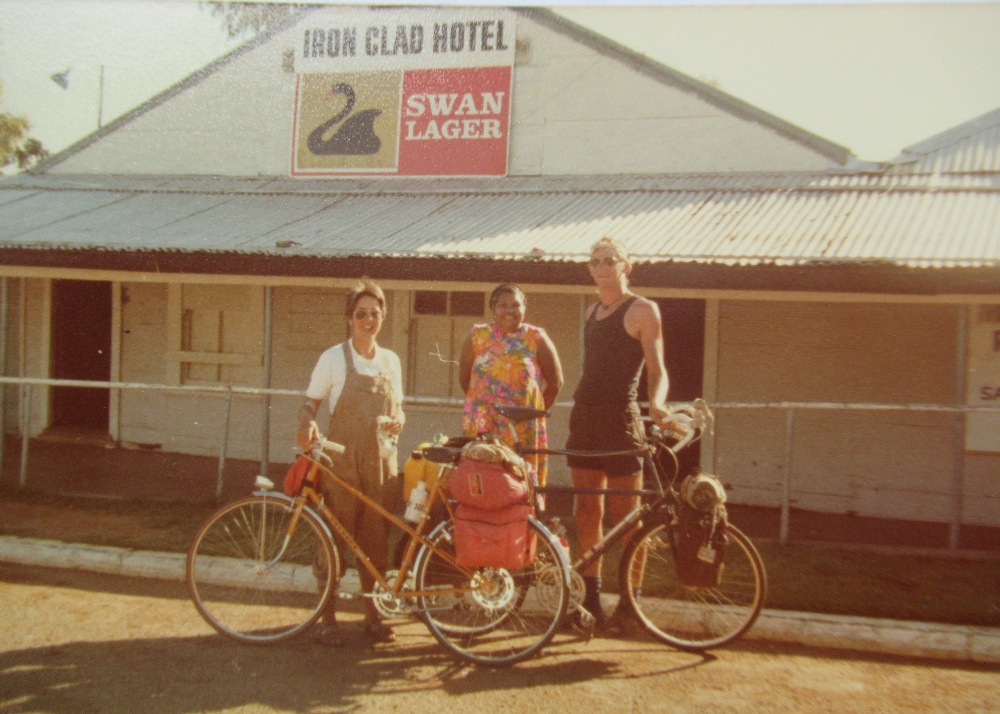
Marble Bar was the hottest place in Australia. The Iron Clad Hotel welcomed us.
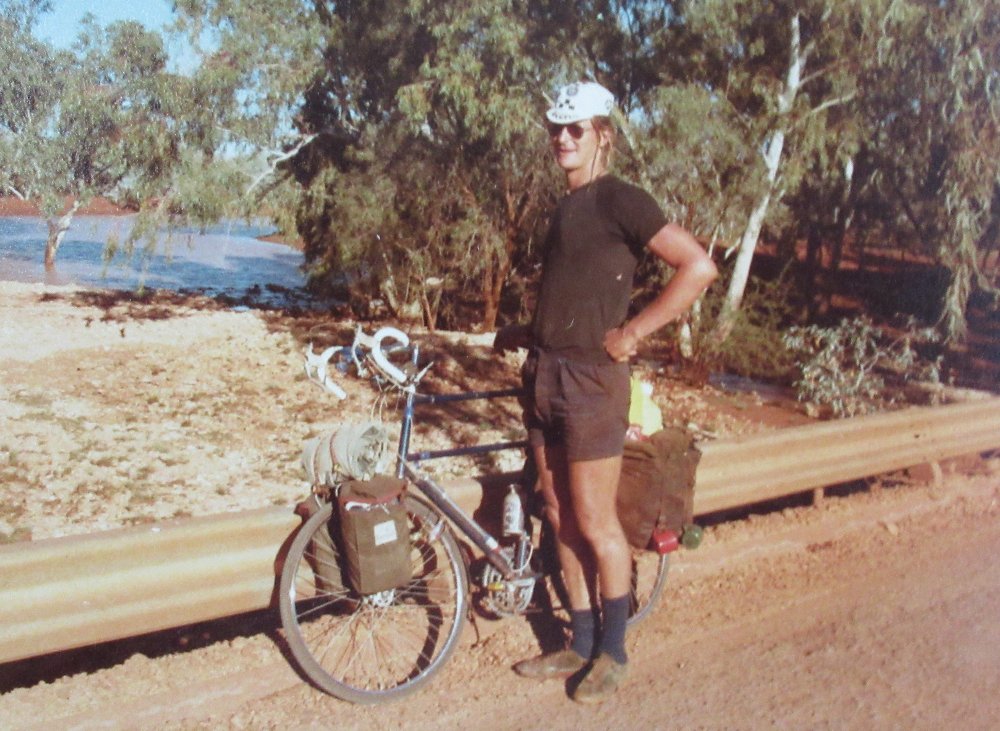
This bike marked the Randonneur becoming the World Randonneur. It was my personal
benchmark for a tougher bike. I’d been breaking so many spokes on 27” wheels. I had this frame made for 26 x 1-3/8” wheels because I knew I could get 12g spokes in that length. They were used in horse trotting! Also, I could use Michelin Endurance 40mm wide tyres. I thought I’d never stop cycle touring. Now, over 40 years later I am writing this up, in-between tours.
A loop ride starting and ending at Bangalore. West to Mysore, the Corg (remembering Durvela Murphy), Nagarhole wildlife park, the western ghats and Malabar coast. Mostly in Karnataka.
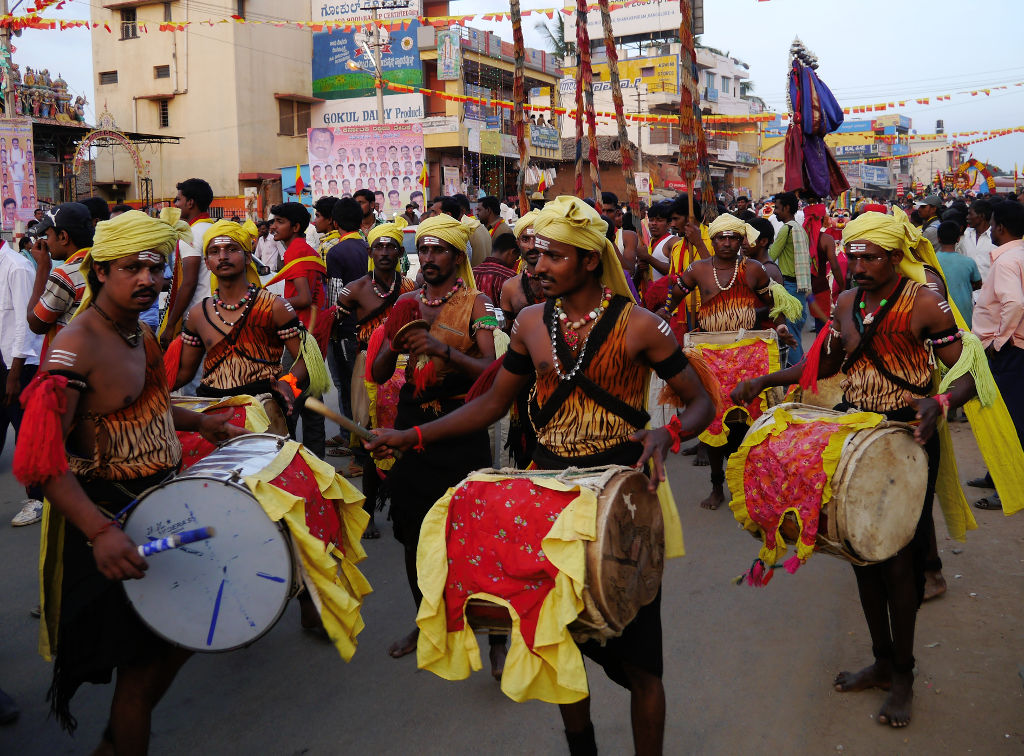
First night out at Kunigal we are treated with a street parade.
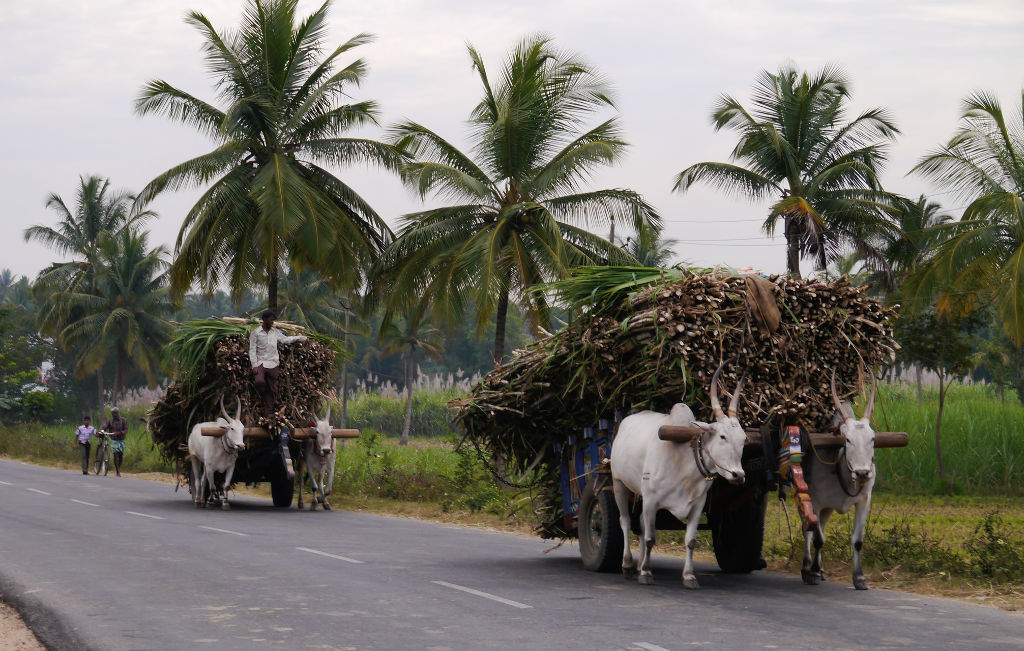
South India produces a huge amount of sugar. It is harvested by hand and hauled to processing by beasts. The heat needed in the local processing plants comes from burning the waste from crushing.
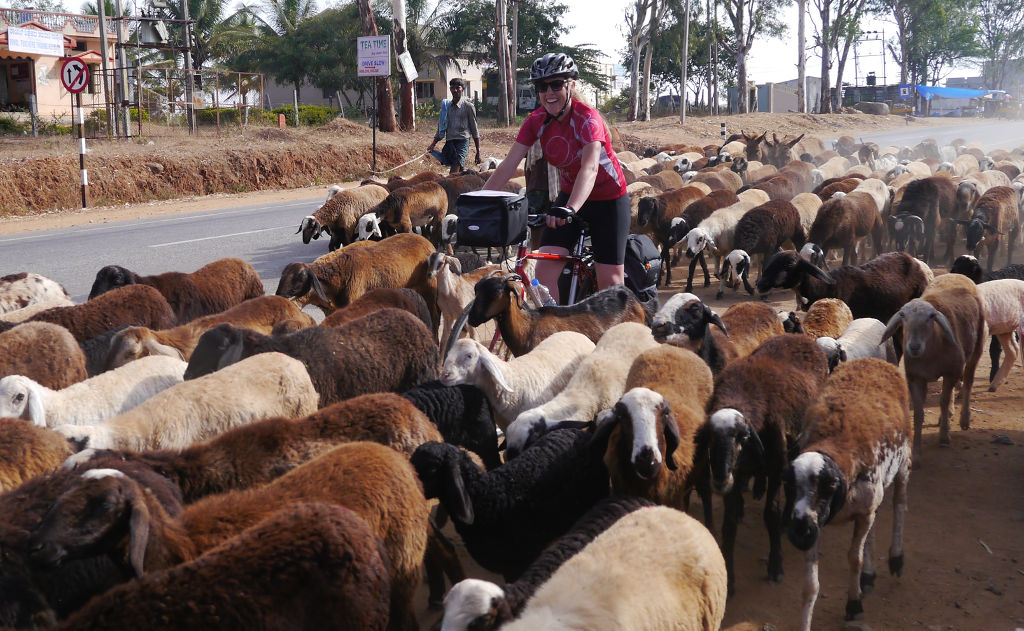
Lisa is demonstrating the consequence of not having a horn or bell on a bike tour in India. The rest of the bikes on this trip have horns. She’s loving it just the same though.
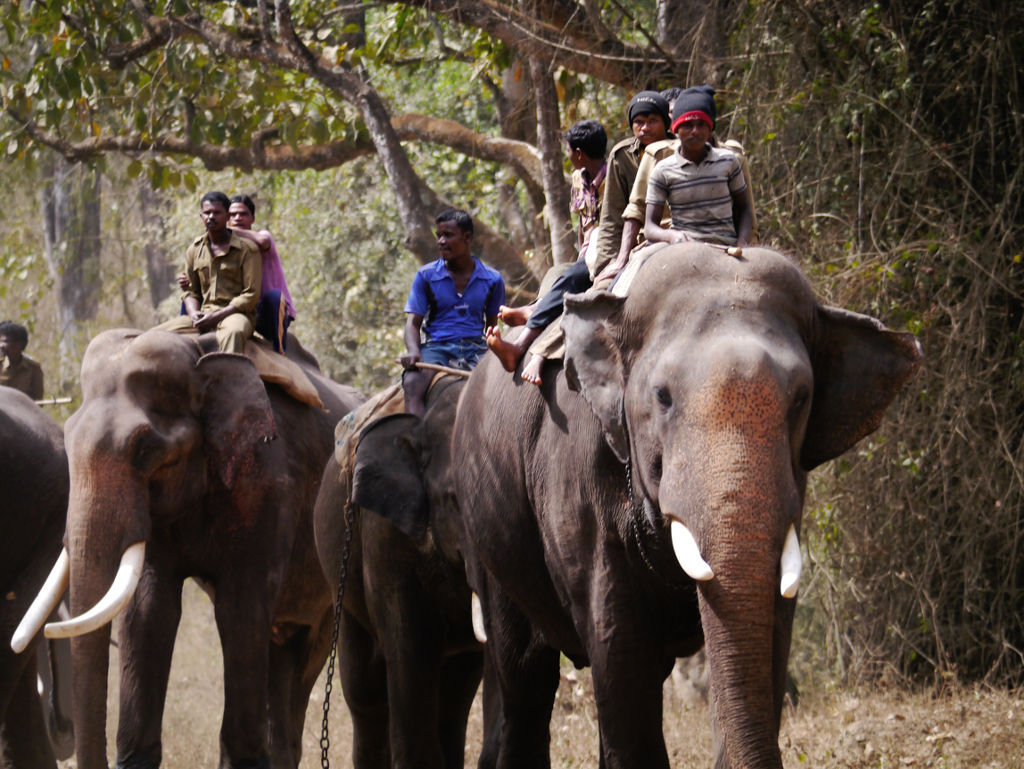
In Nagarhole (pronounced “nagarholay”) national park, elephants are being used to clear some massive clumps of bamboo.
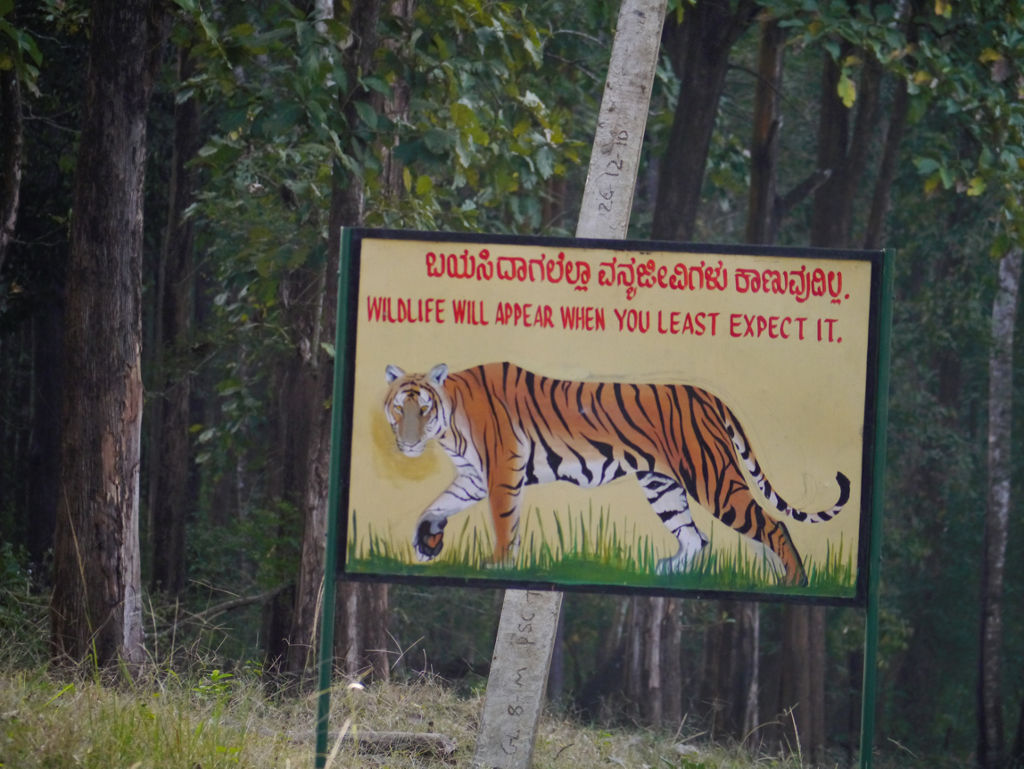
We scoot along in a tight bunch and get a bit nervy on the slower uphill stretches. Tiger attacks in daylight are rare though.
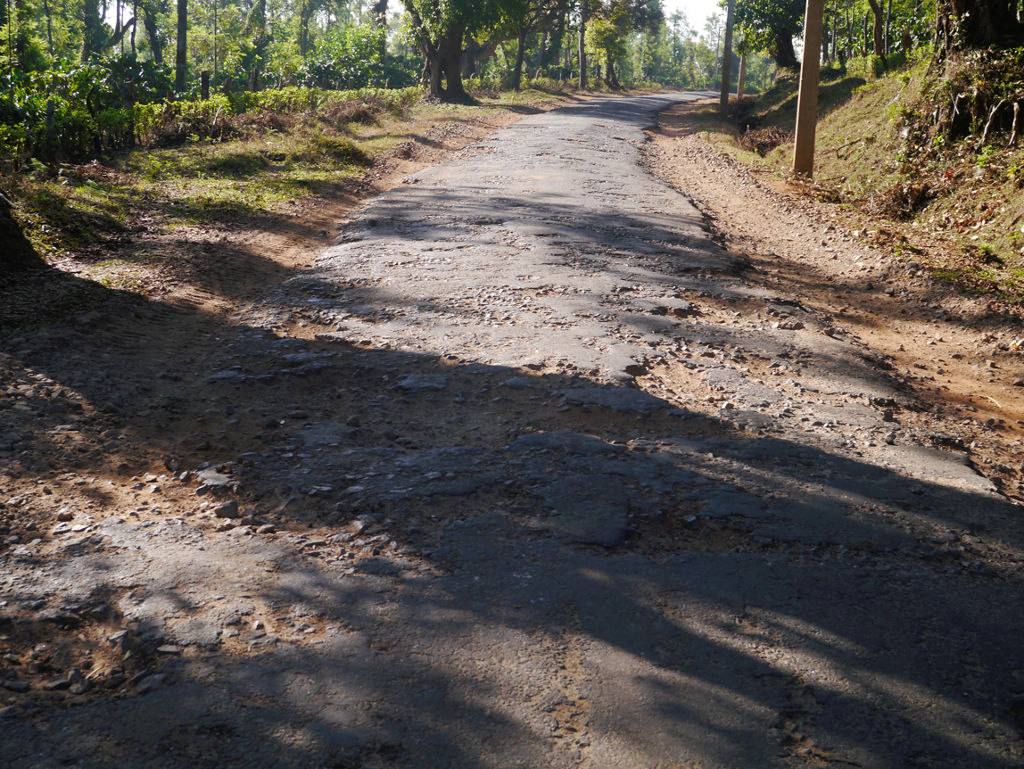
Especially in the border areas in India (in this case between Karnataka and Kerala) roads are poor. Four of the bikes have 700 x 35C Schwalbe Marathon. One has light 28C tyres and suffered a bit.

Now in Kerala proper and the roads improve. All of the punctures on this trip were on the touring bike with the lightweight tyres.
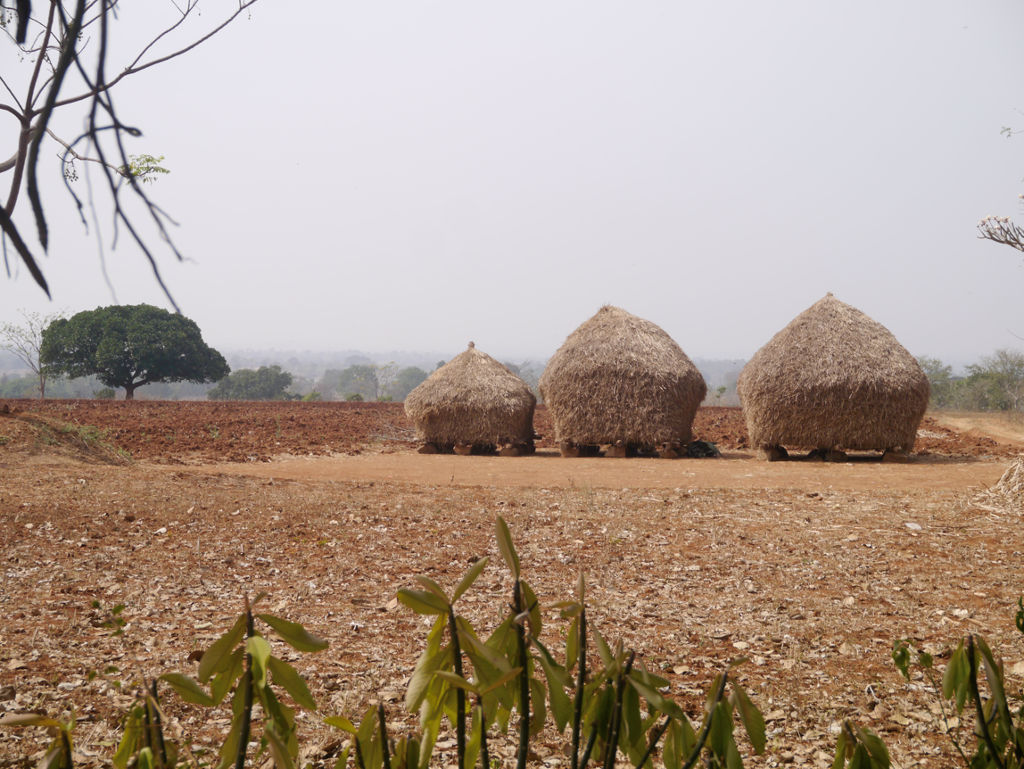
Back up on the Deccan. After crops are threshed the straw is stacked on platforms of boards sitting on rocks. The entire harvesting process, in most areas, uses no fossil fuel.
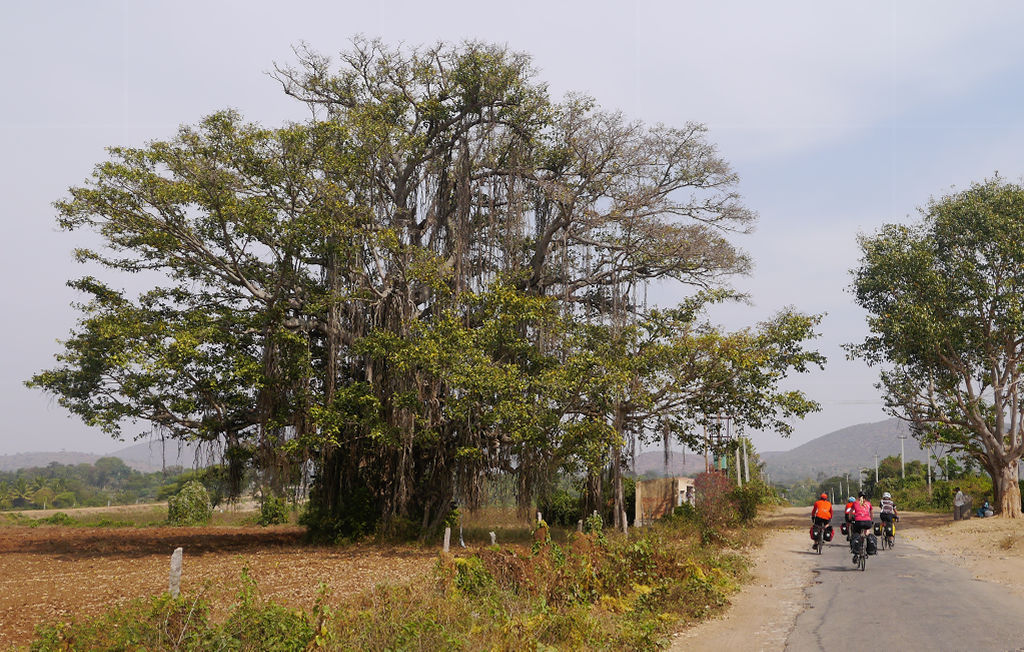
Classic peaceful south Indian scene, a delight to cycle tour through.
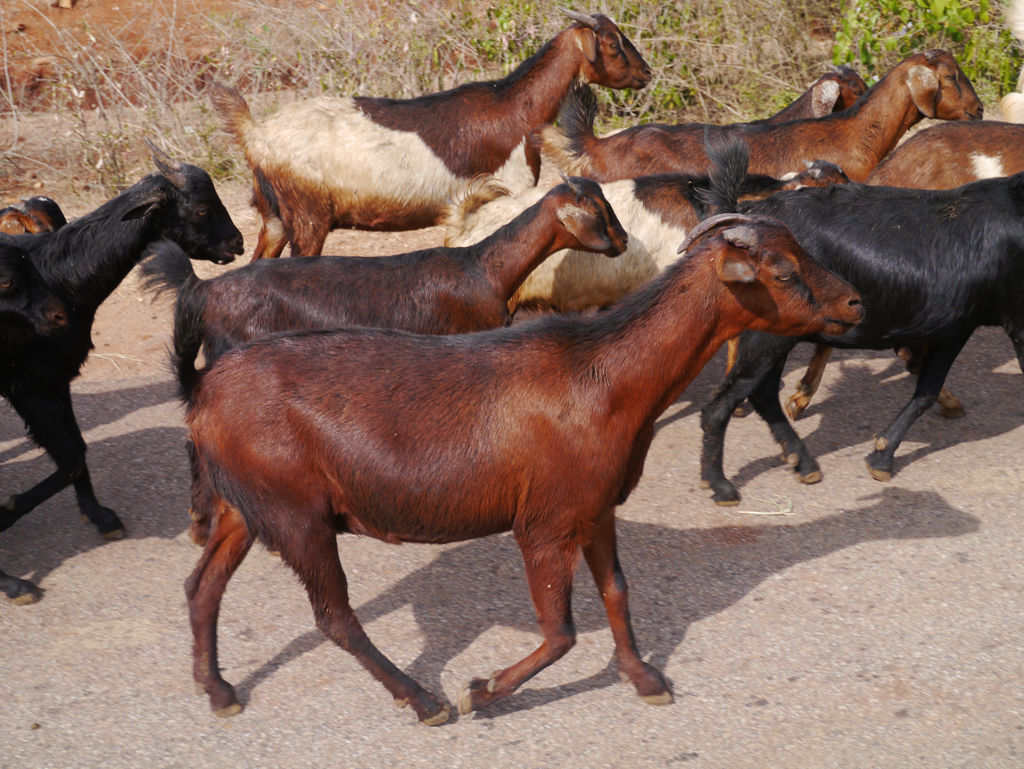
India raises the best goats you will find anywhere.
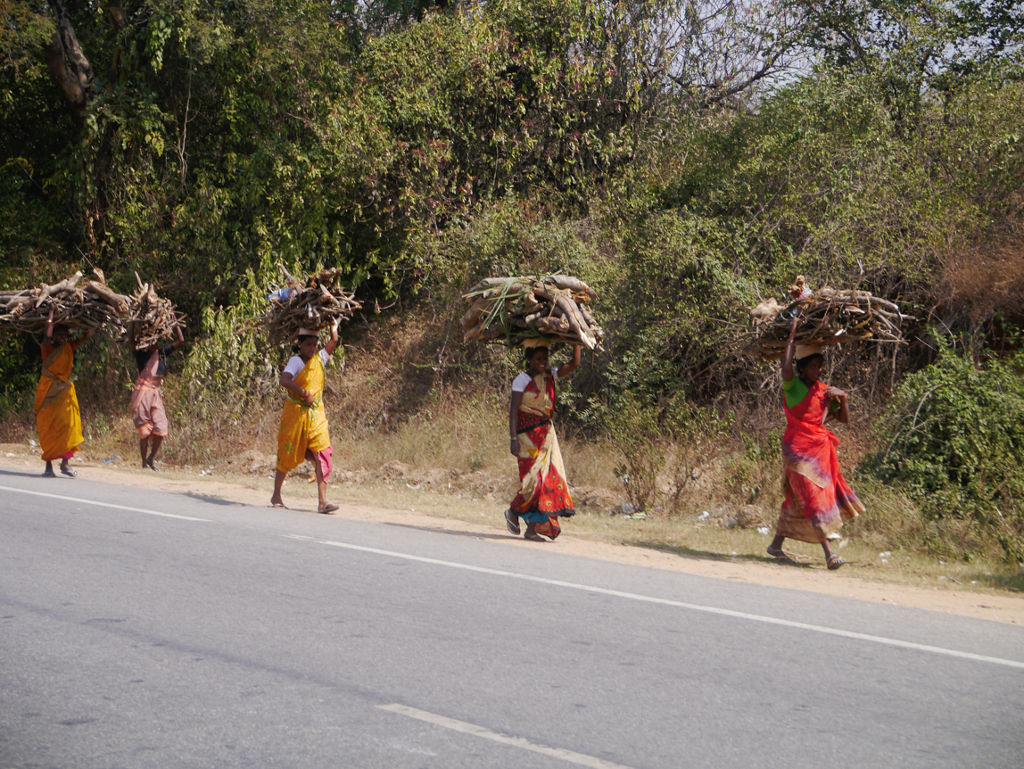
It’s a still shot so not easy to tell but these women are jogging with heavy loads of firewood on their heads.
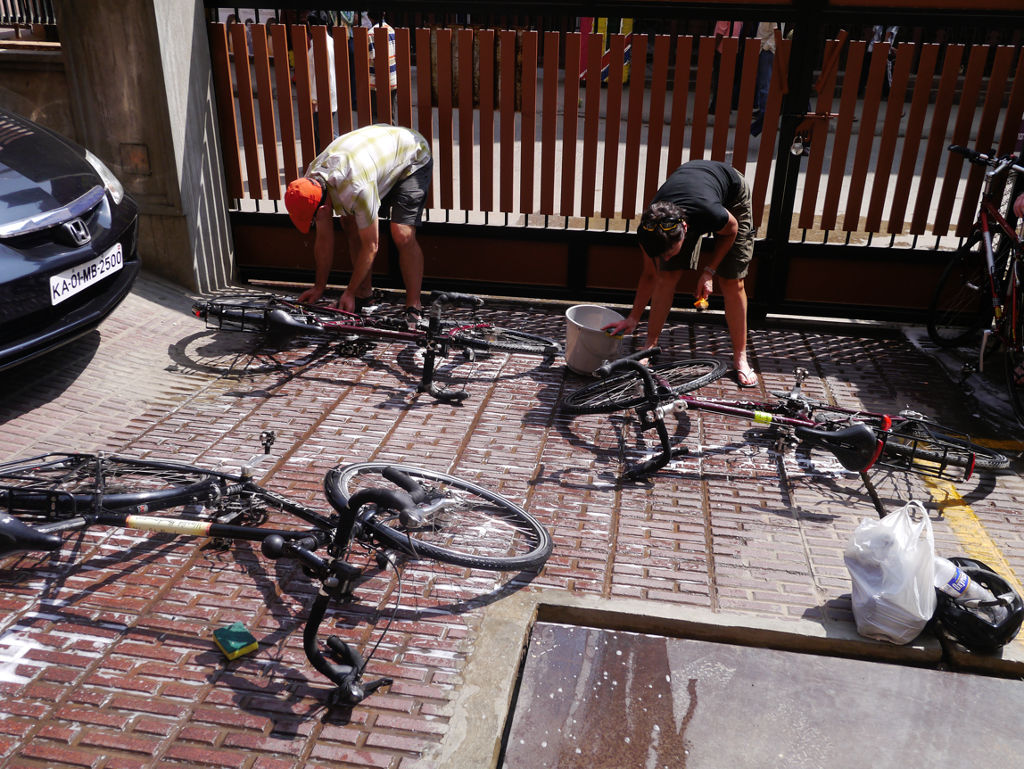
Back at Bangalore we are washing our touring bikes in preparation for the quarantine inspectors back in Australia. We have had our cartons in store at this lodging.
The plan was to land in NYC, take the bike on Amtrak to Montreal, ride there for 4 days, train back and ride around NYC for a week. Upon discovering Amtrak would not take the bike I leave it at Grand Central Station in the care of the stationmaster as there is no left luggage, and take the train. Use the bike-share system in Montreal then return and do the urban tour of NYC on my own bike.
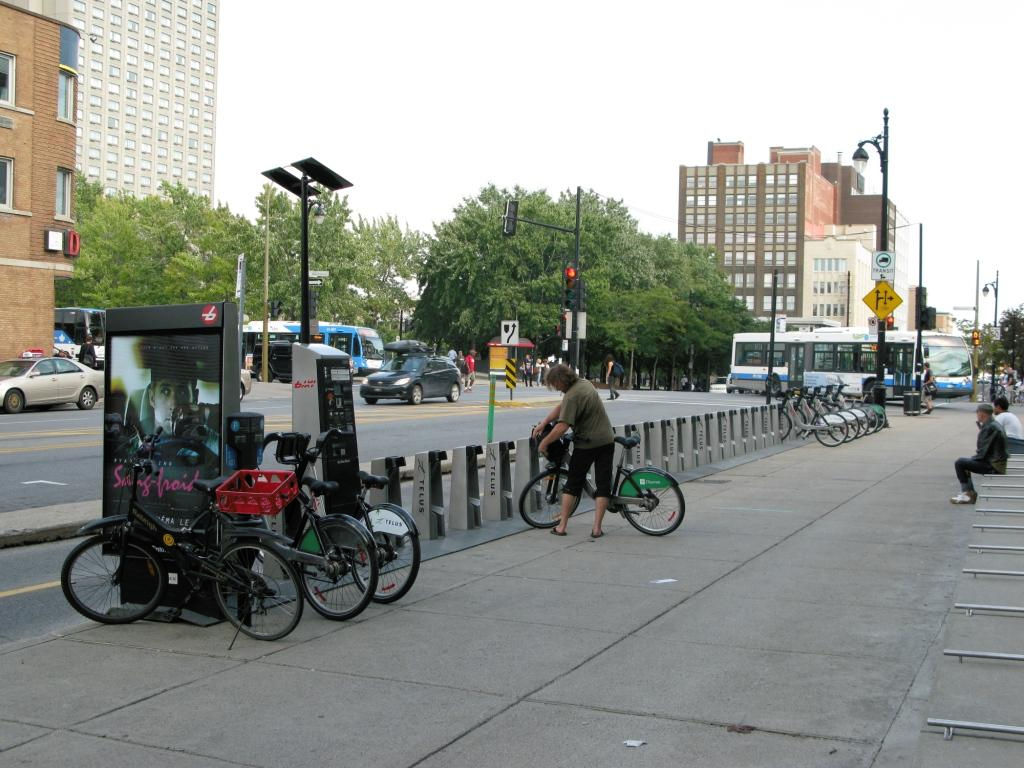
Montreal is where some of the share-bike software used in many cities was developed. It’s a first for me and I like it. I am getting a bit stressed about finding a place to rehire every 30 minutes though but manage to completely cover the city in the four days.
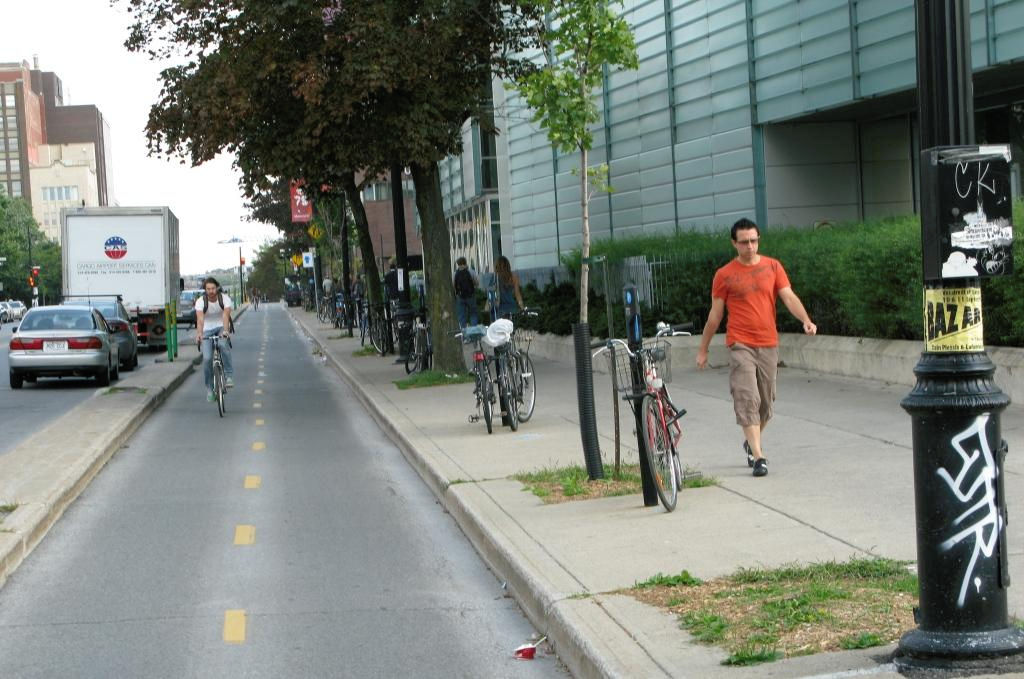
The downtown area has a network of bi-directional separated paths and they are well used. There are places to lock up bikes everywhere. They are well used.
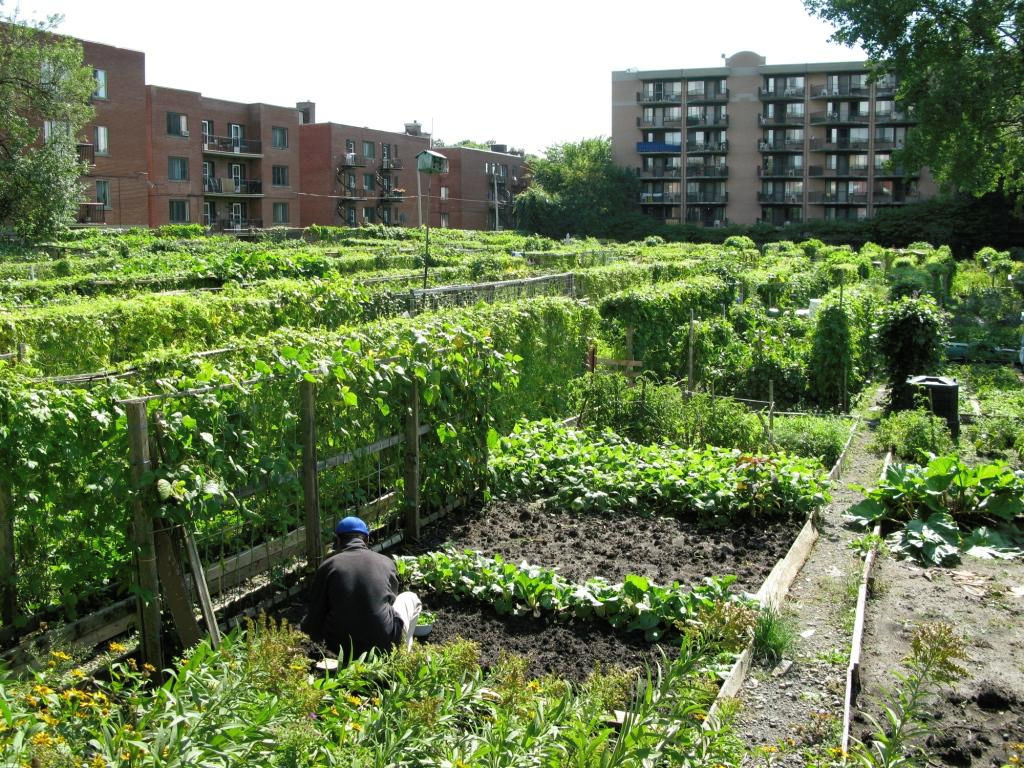
Some big community gardens in Montreal. Australia seems to be way behind on this front.
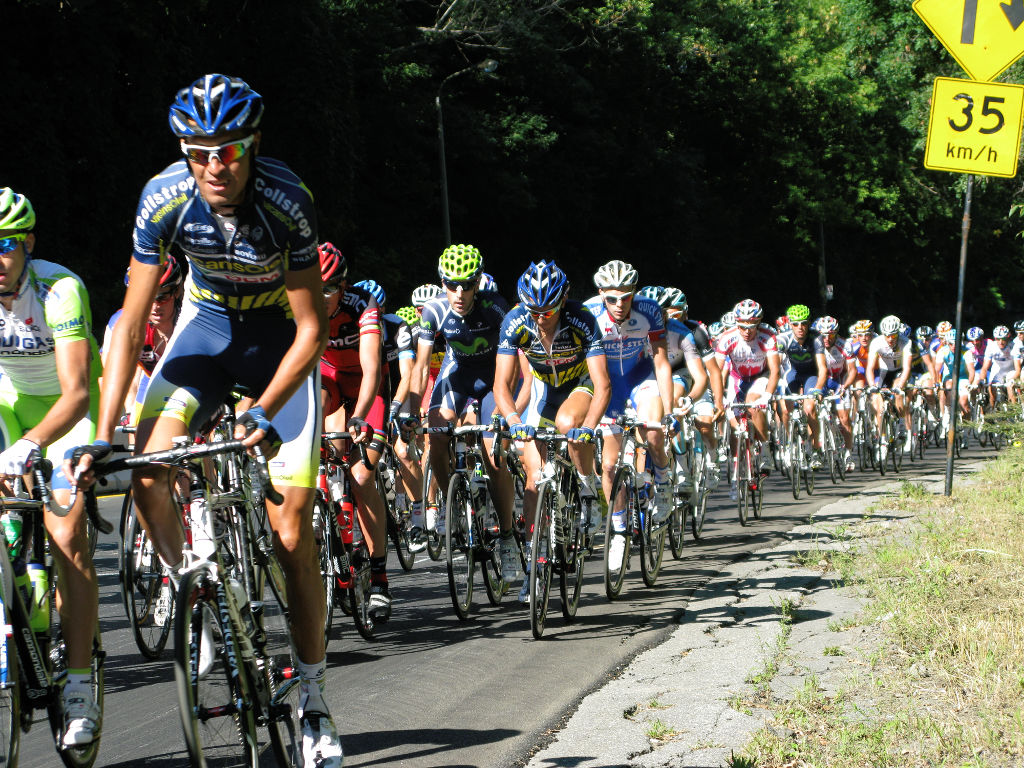
I jump off the road outside Montreal to let a peloton go past.
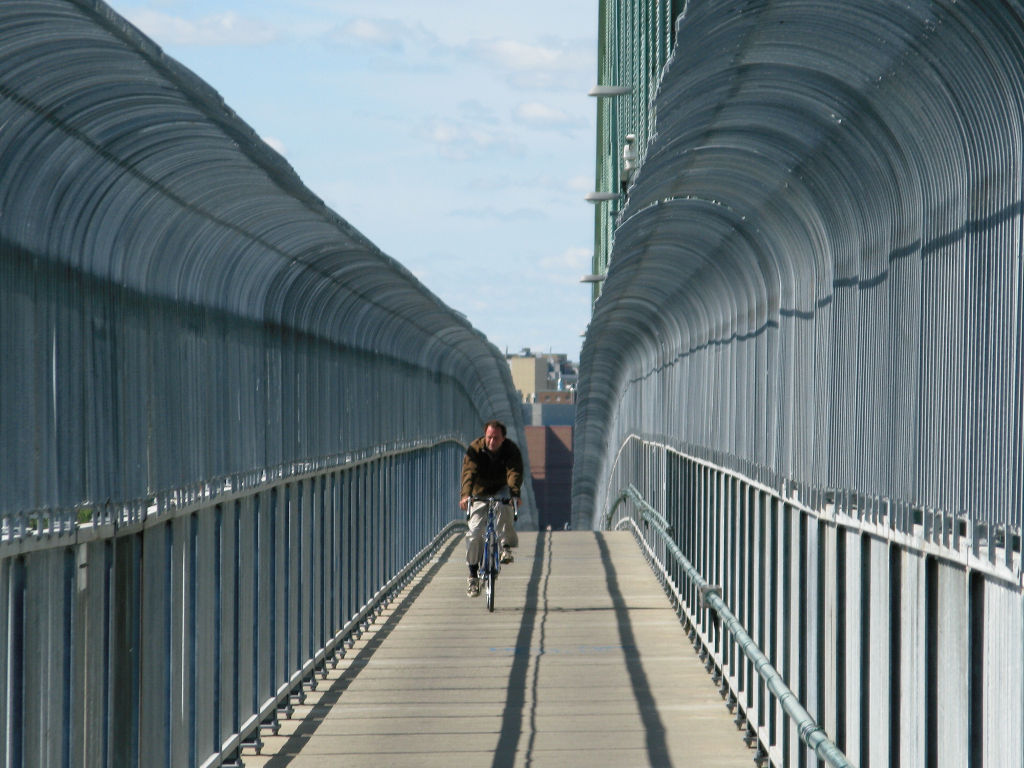
There is good cycling infrastructure throughout Montreal. Much of it is decades old, perhaps even from the 1970’s making this one of the earliest large western cities to have the political will to do it.
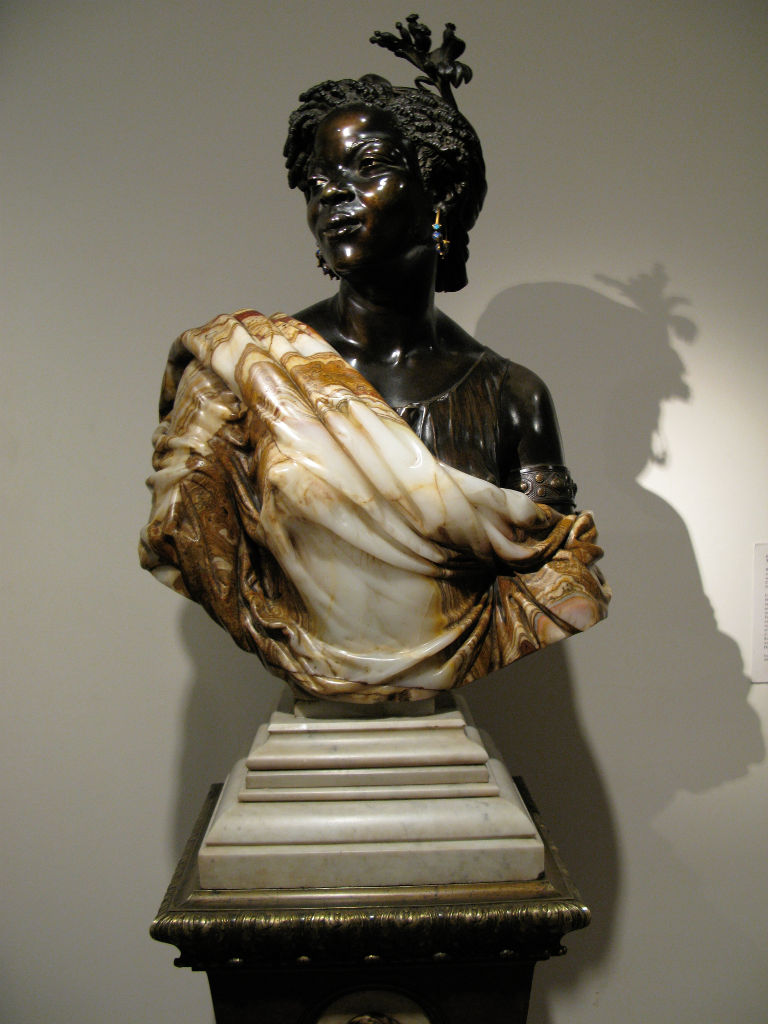
Back to NYC on Amtrak and to my bike at the station. (Cared for in the stationmaster’s office by the way!). One of the greatest things to do is to spend a whole day in the NY Metropolitan Museum.
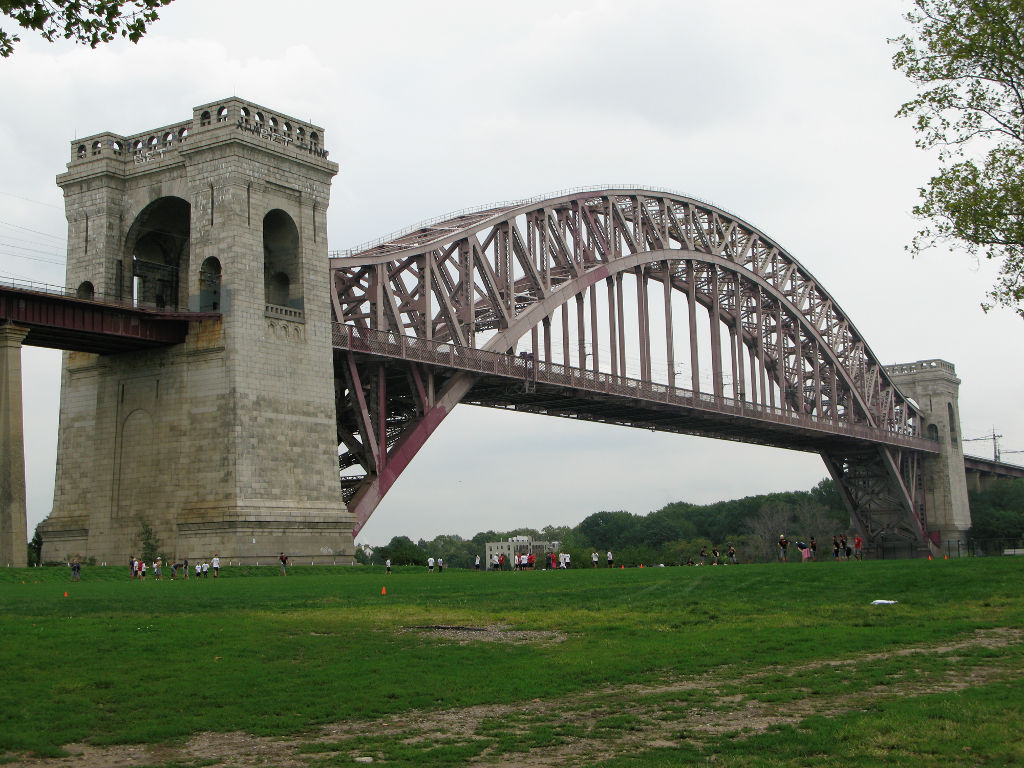
And one of the next greatest things is to have a week of urban touring all over this vast metropolis. This familiar looking bridge is to Randall Island.
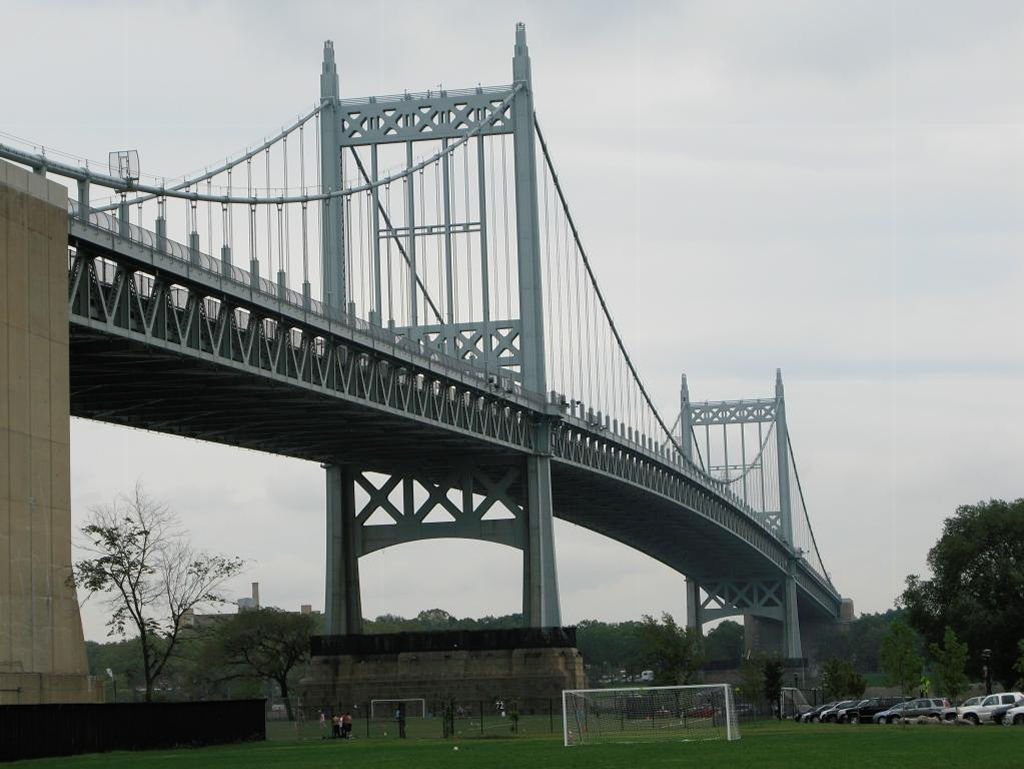
The Triborough or RFK Bridge that links The Bronx, Queens and Manhattan. The cycleway is a critical link.
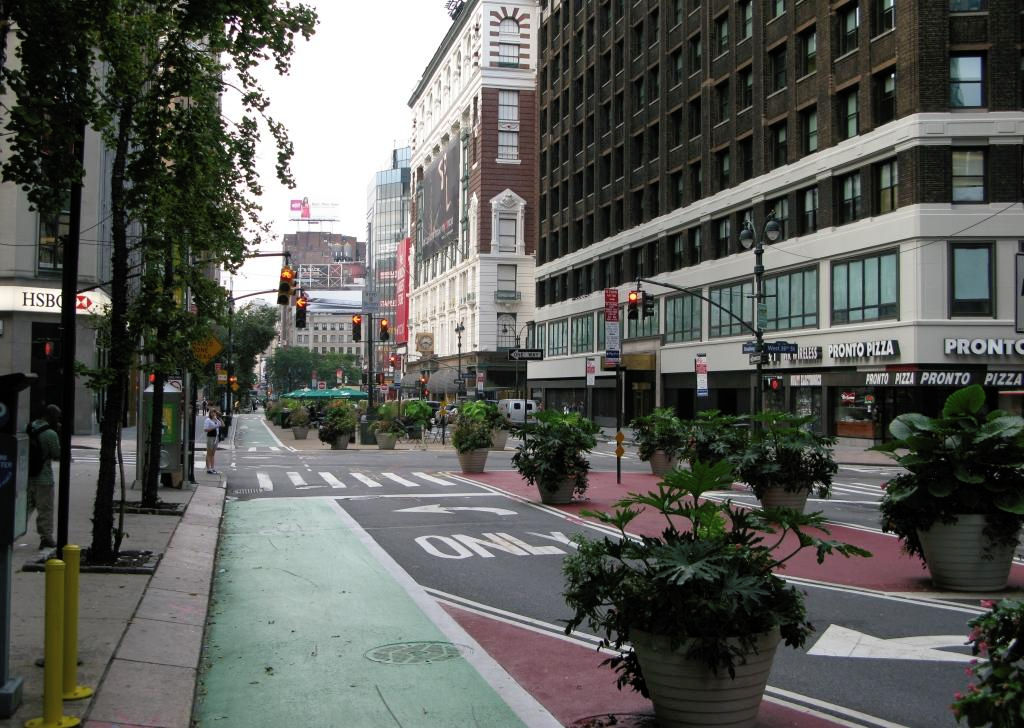
Downtown (Lower Manhattan) in 2011 is years away from the major bike developments that are to come. But there is already quite a bit of roadspace being allocated to cycling.
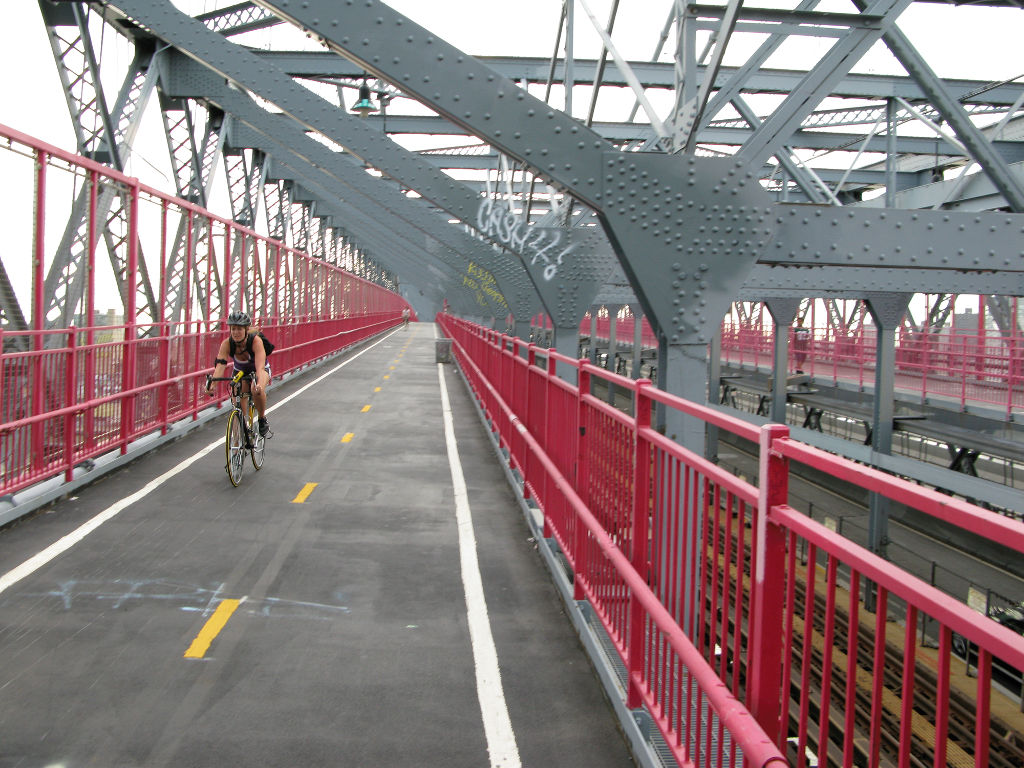
The bridges over the East River have great cycleways connecting Manhattan to Queens and Brooklyn. Brooklyn Bridge gets quite crowded.
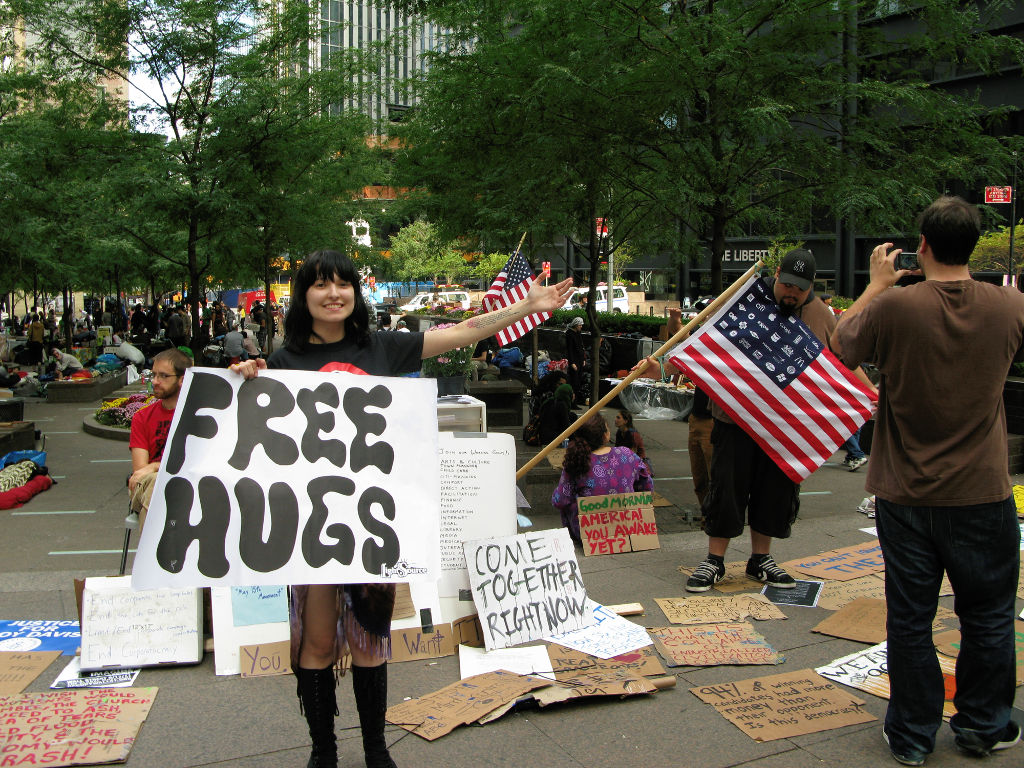
In a downtown park the Occupy Movement is being born. If you are able to cycle tour the world you can’t help but notice that systems that pit people against each other also leave people behind.
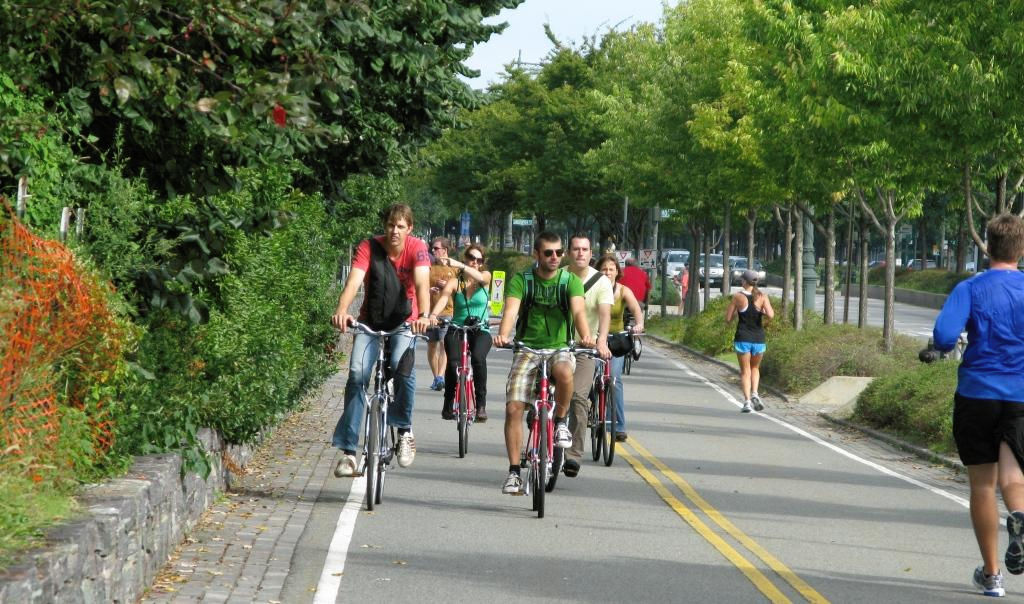
Manhattan runs for over 200 blocks and on its western side lies the Hudson River. There is a cycleway the whole length.

There are ferries crossing the Hudson to New Jersey, along with the George Washington Bridge. In NJ I am immediately aware that cycling is less catered for than it is back in NYC. This is my last day. The next day I take my bike on the train to JFK where I am able to buy a bike carton from Qantas for my flight back to Sydney.
Tour of Gujarat state. Landing in Bhavnagar three of us head clockwise around this big NW state. Not on the coast road. Visiting Gir lion sanctuary, Porbandar, and the birthplace of Gandhi, Bapu, the father of India. Then Jamnagar, turning east through Ahmedabad, to Godhra, Vadodara, through the Dangs and west to Surat.
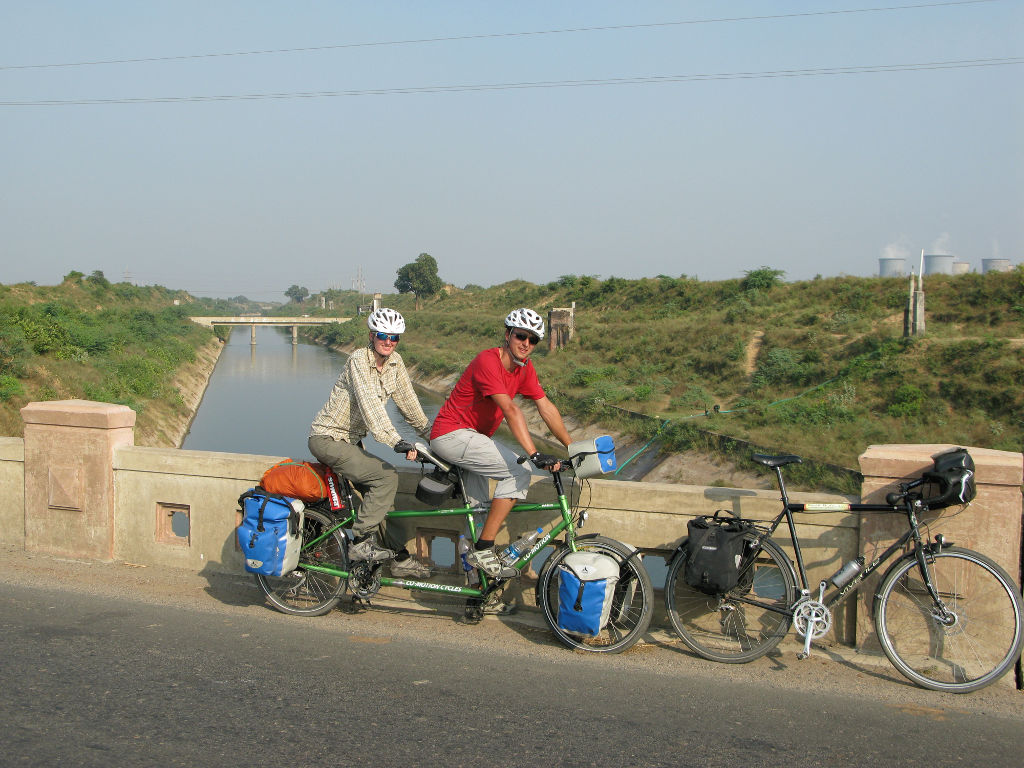
Our entourage is a 26” Co-Motion tandem with Avid BB7 cable discs and a Vivente with barend levers. The 2011 version has front Shimano disc and rear cantilever brakes. The interesting thing about the tandem was that the energy of two riders going through the one 9-speed chain cause premature wearing of the drive train. Similarly, the tandem ripped through disc brake pads.
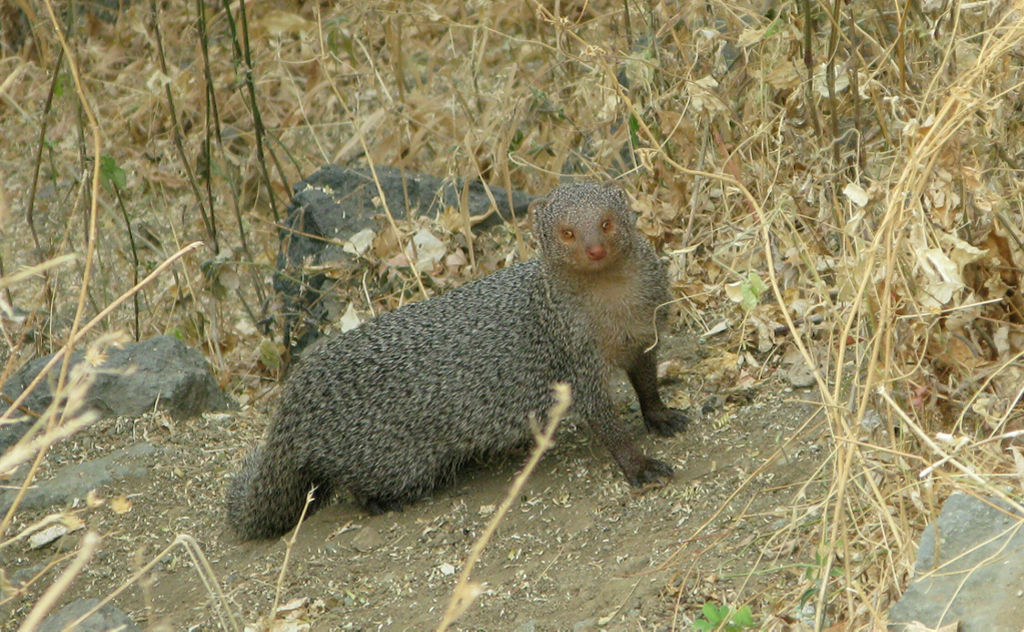
A mongoose. It’s hard to find one still for a moment.
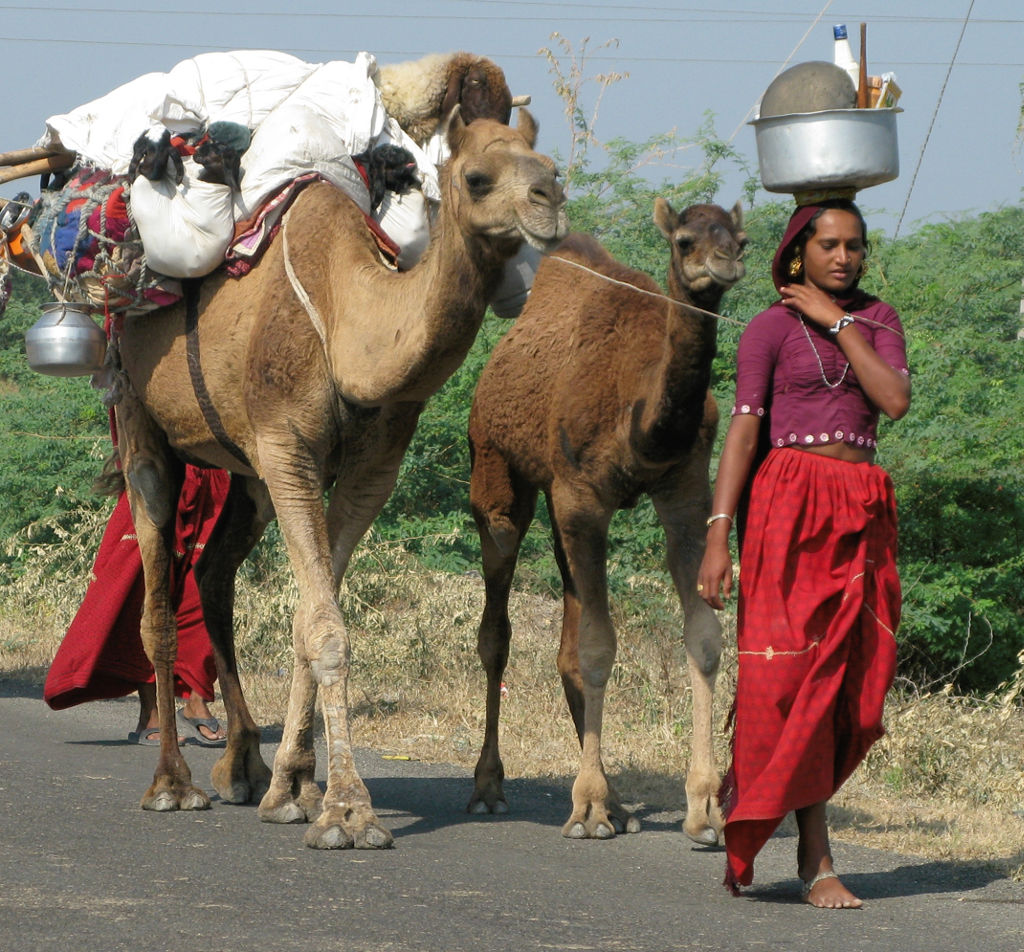
Barefoot woman with camels. Note the baby goats in the side-saddle of the camel on the left. The mother it just visible behind the camel’s head.
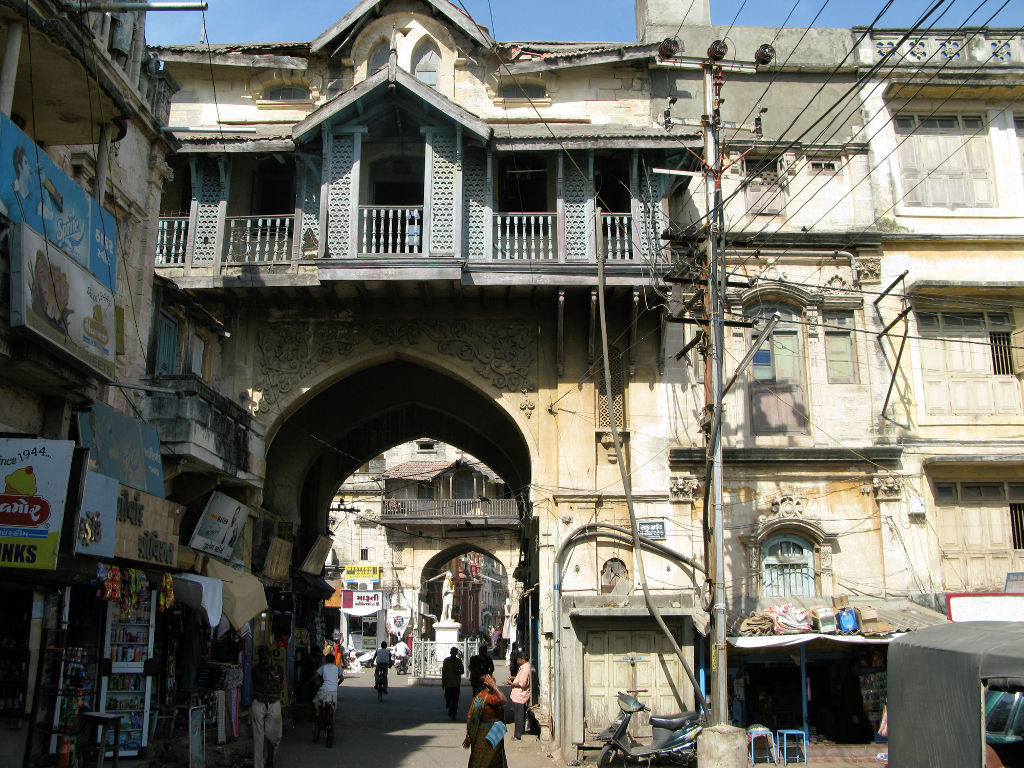
Scene in the centre of Porbandar. A statue of Gandhi through the archway.
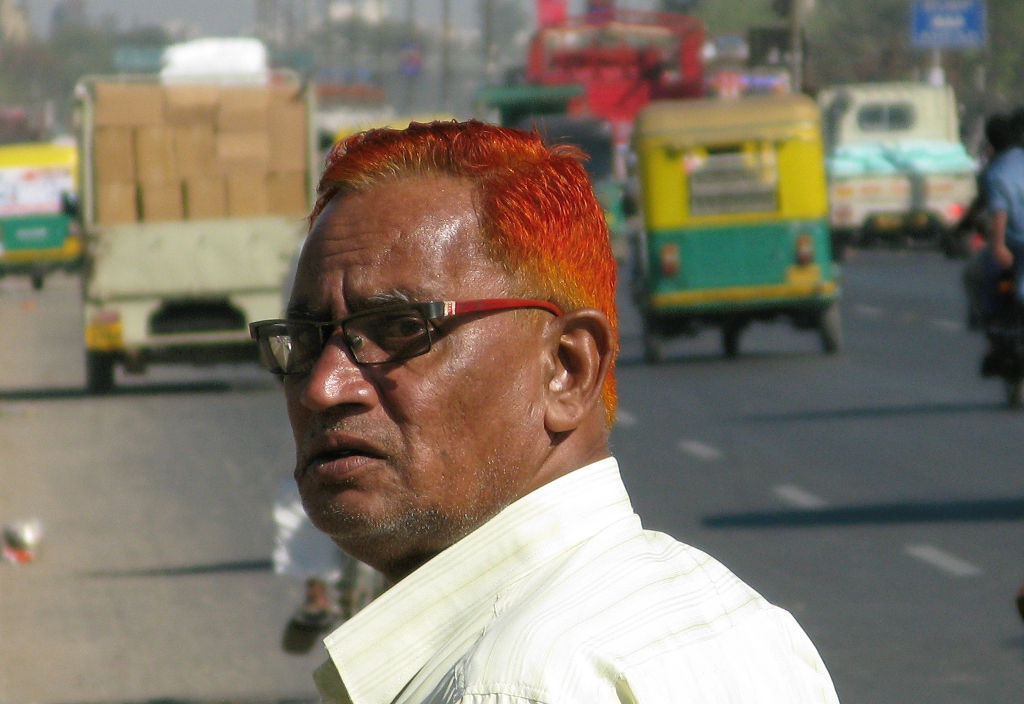
Quite a few Guajarati men have red-orange hair. It is a bit intrusive to photograph it but I can’t resist.
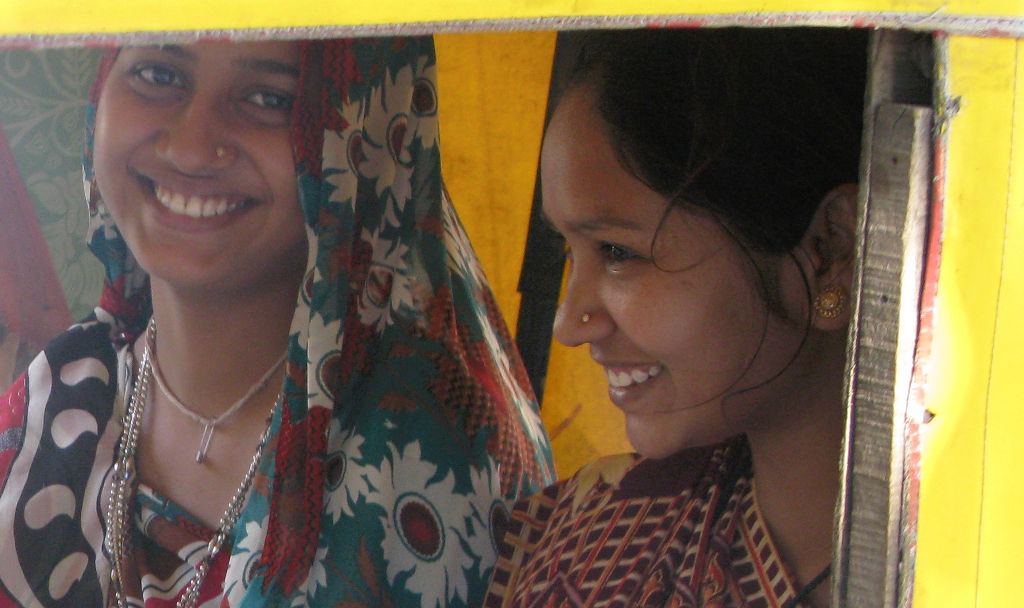
Two women in an autorickshaw in Ahmadabad. It is unusual to be allowed to photograph women in India.
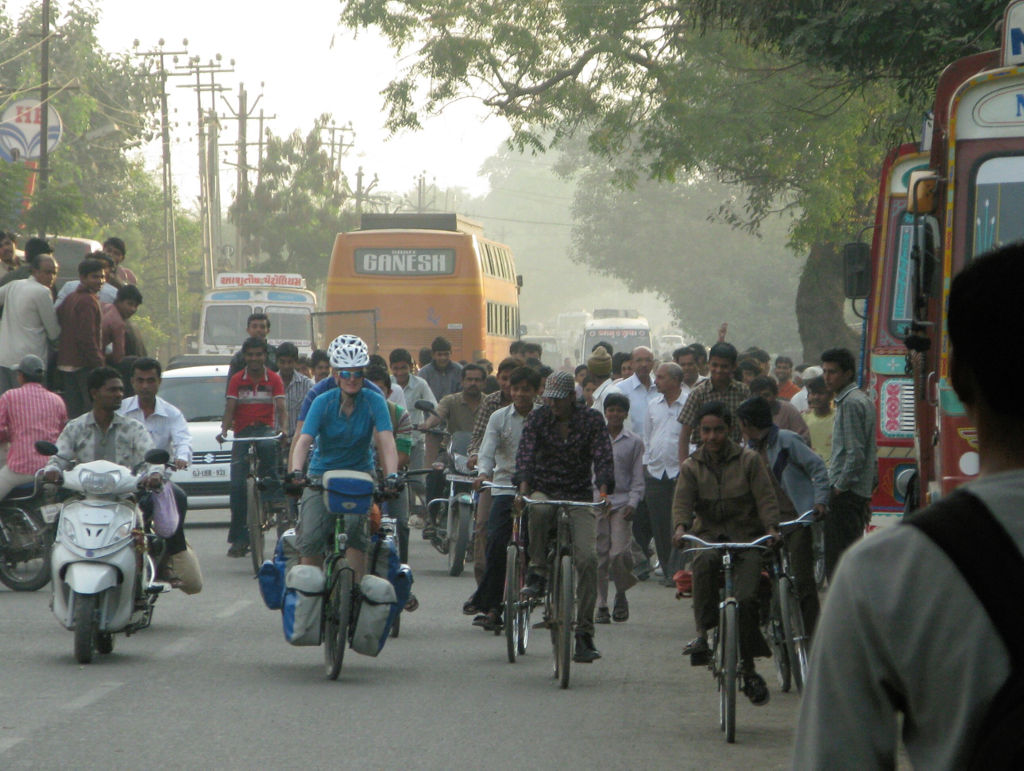
The tandem is creating a great stir. After years of being the main attraction myself I am now being ignored, which is rather nice.
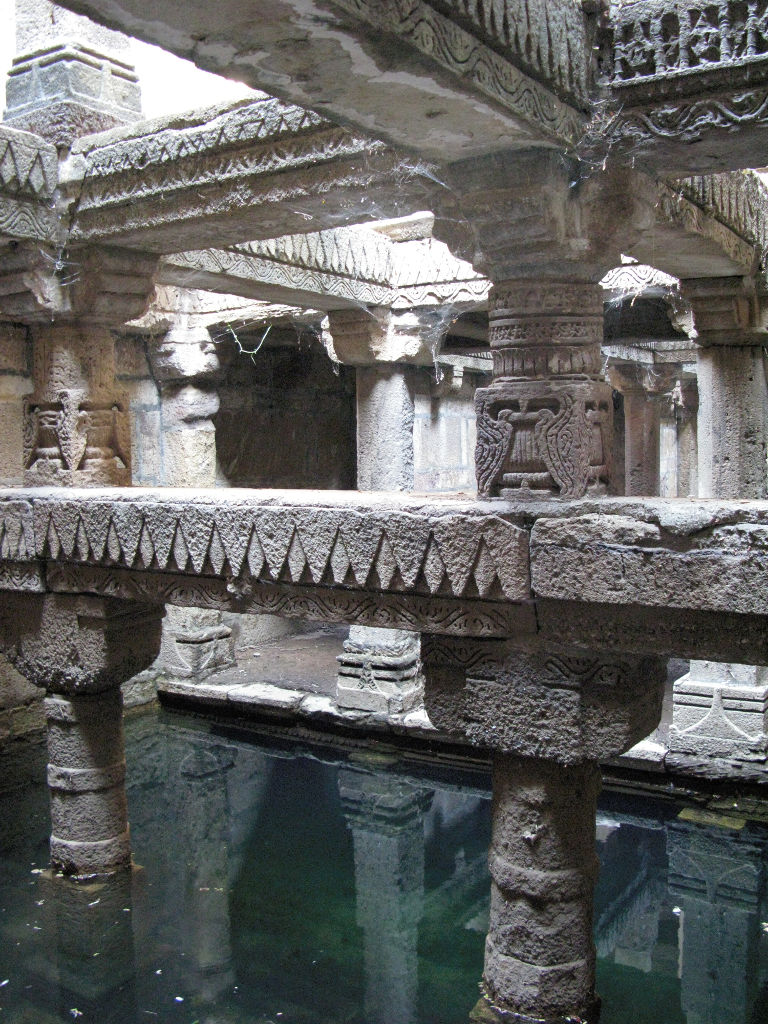
A Gujarat step well. These deep wells are constructed as buildings made of granite and below ground to cater for fluctuation in water table level. Rather than rope and buckets, you walk down into them.
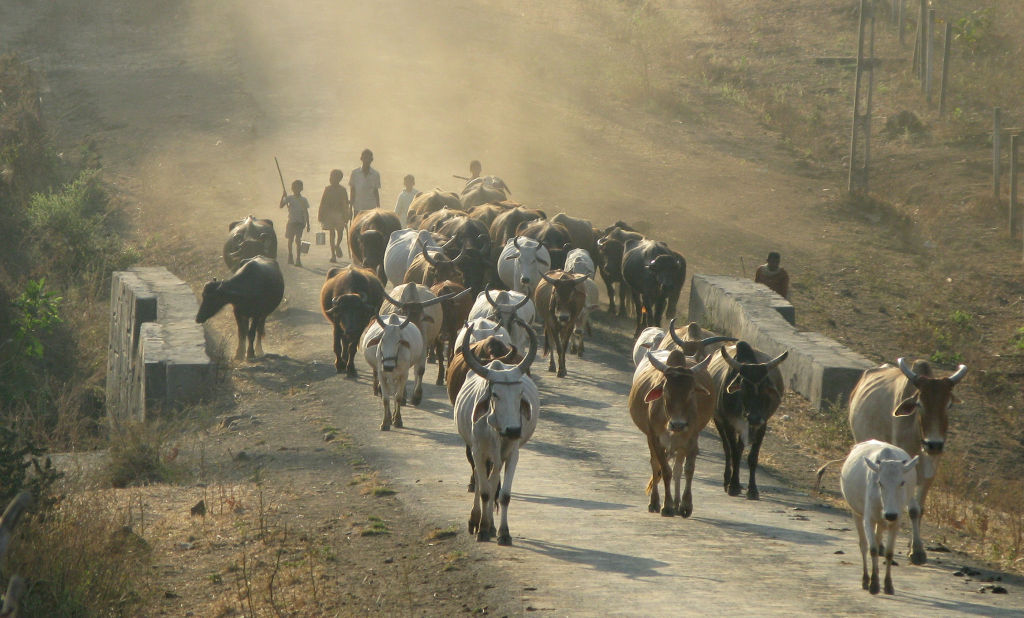
At the end of the day the animals that have been working in the fields and grazing are brought back to village compounds.
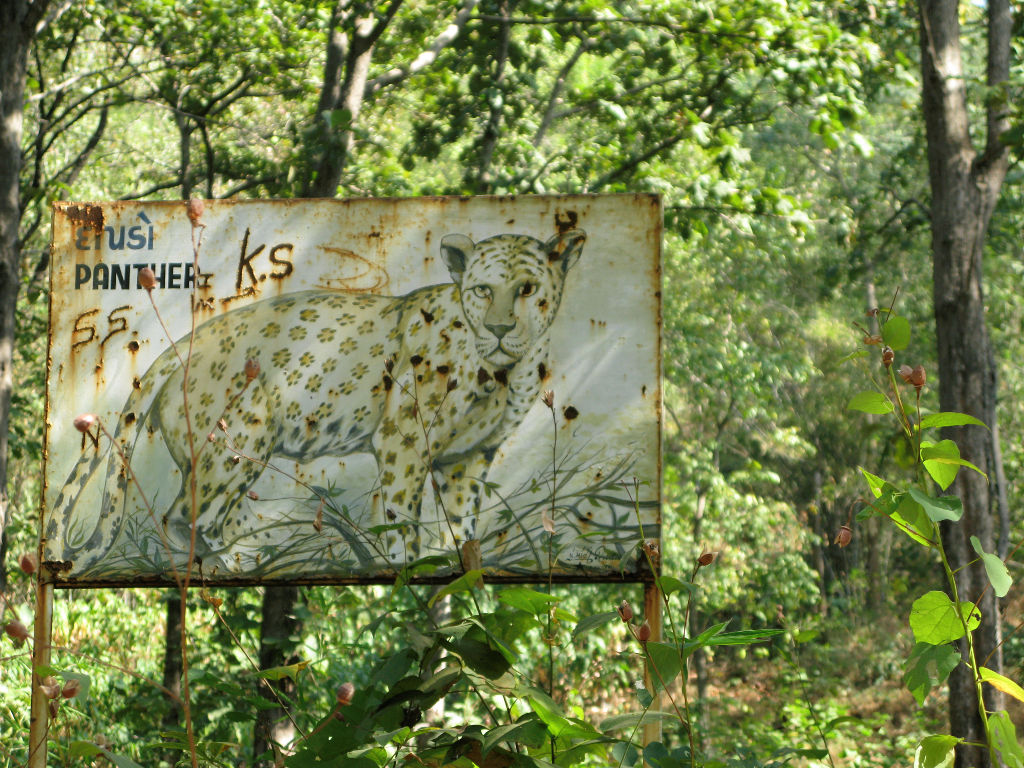
We love the excitement of these wild places. Unfortunately, any panthers hid from our view.
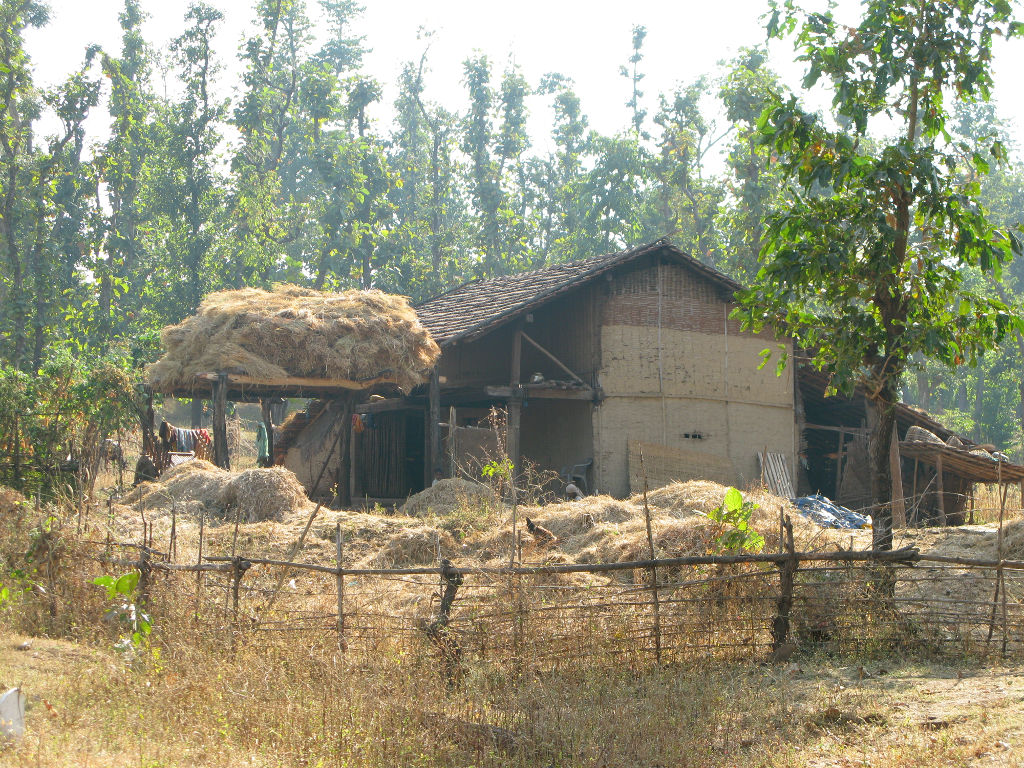
The Dangs is a remote and poor district. The raised haystacks are characteristic.
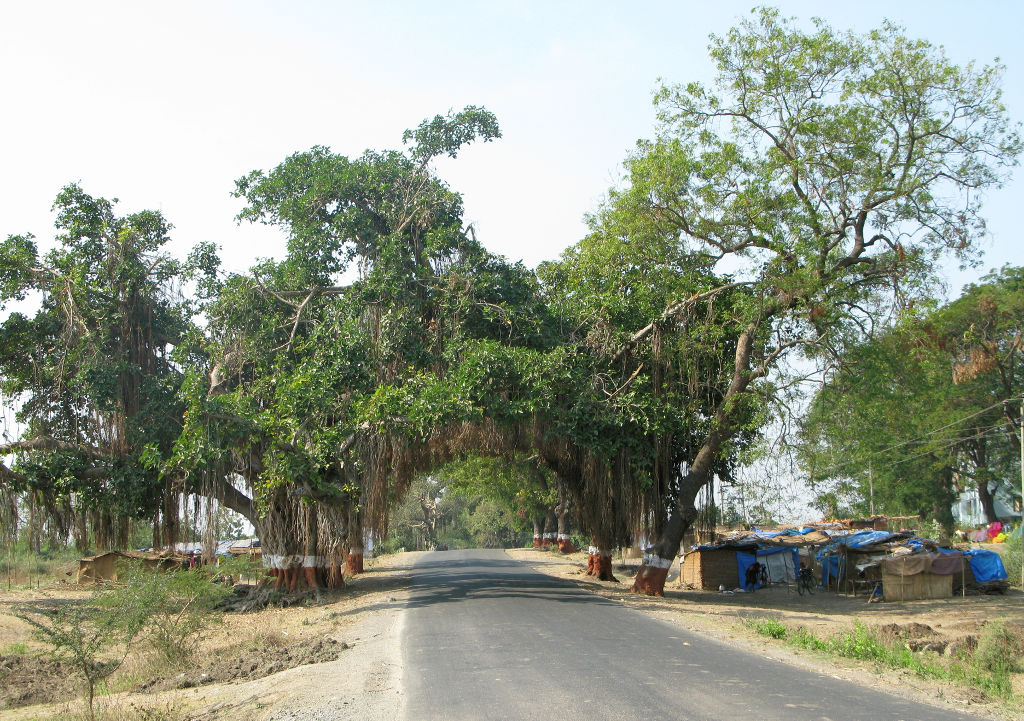
Classic peaceful road scene as we head west to the port city of Surat and the end of this 1,800km tour of Gujarat.
A round trip from Munich to Bodensee and back. I get the train into Munich from the airport with my bike still in the carton. I’ll be away for six days and am fascinated by the possibility of being able to stash my carton under the noses of the crowds around Marienplatz. There is some restoration of an old building going on and I leave my Qantas carton behind a security fence. Guess what? It was there upon my return.
The photos begin at the return ride. It is a few hundred KMs each way.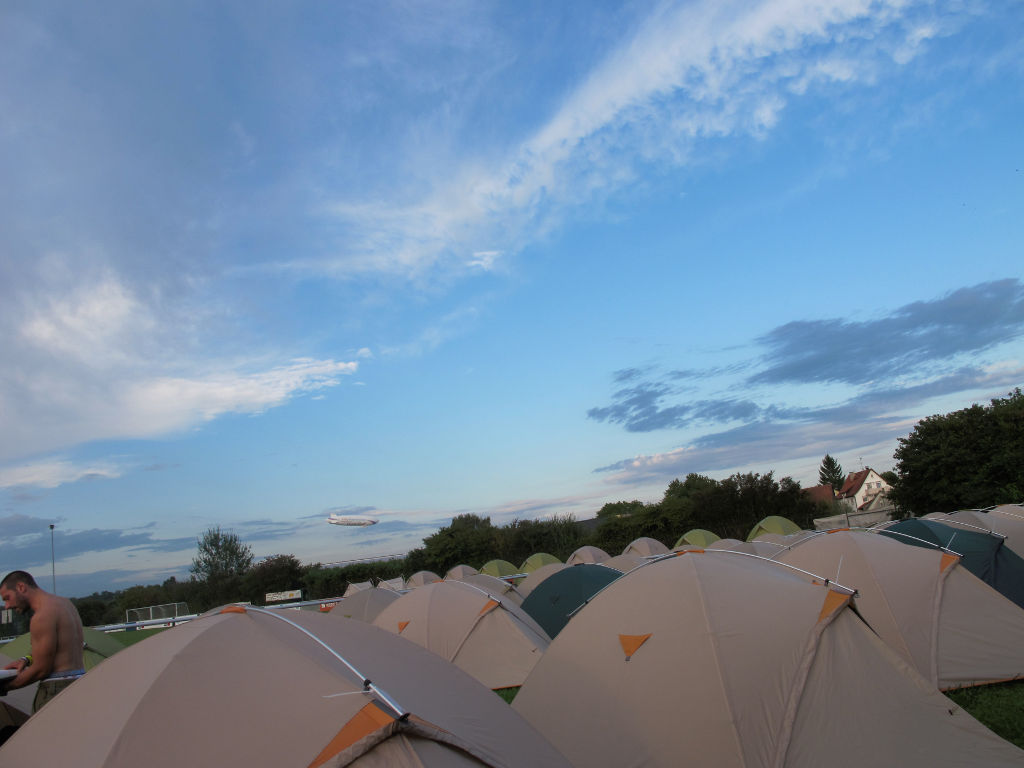
The Eurobike campsite. This is at the very south of Germany.
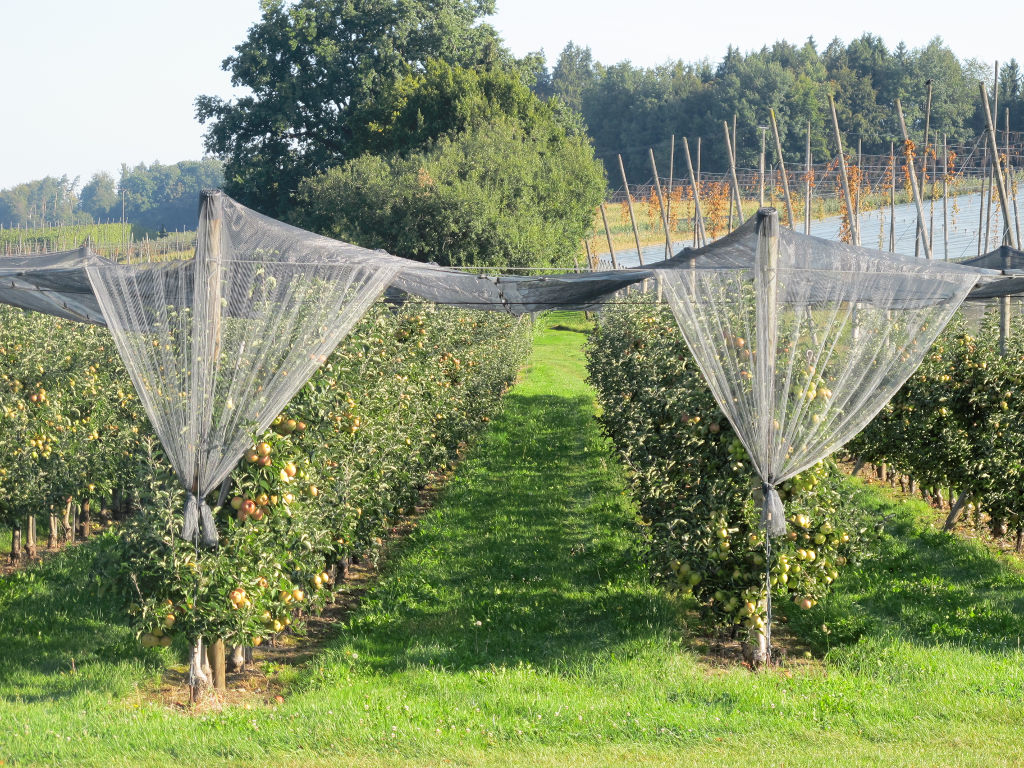
Climbing up from the lake, apples with bird nets.
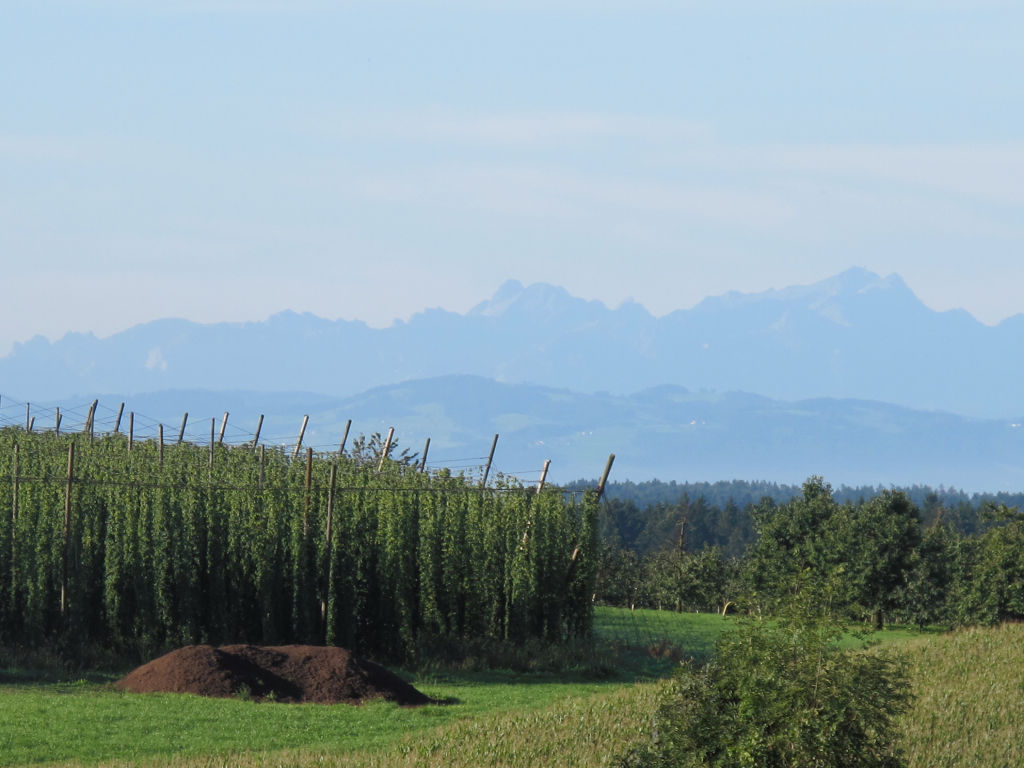
Typically, where apples thrive, so does hops.

Turkeys are not attractive. Who will argue otherwise.

Working water wheel.
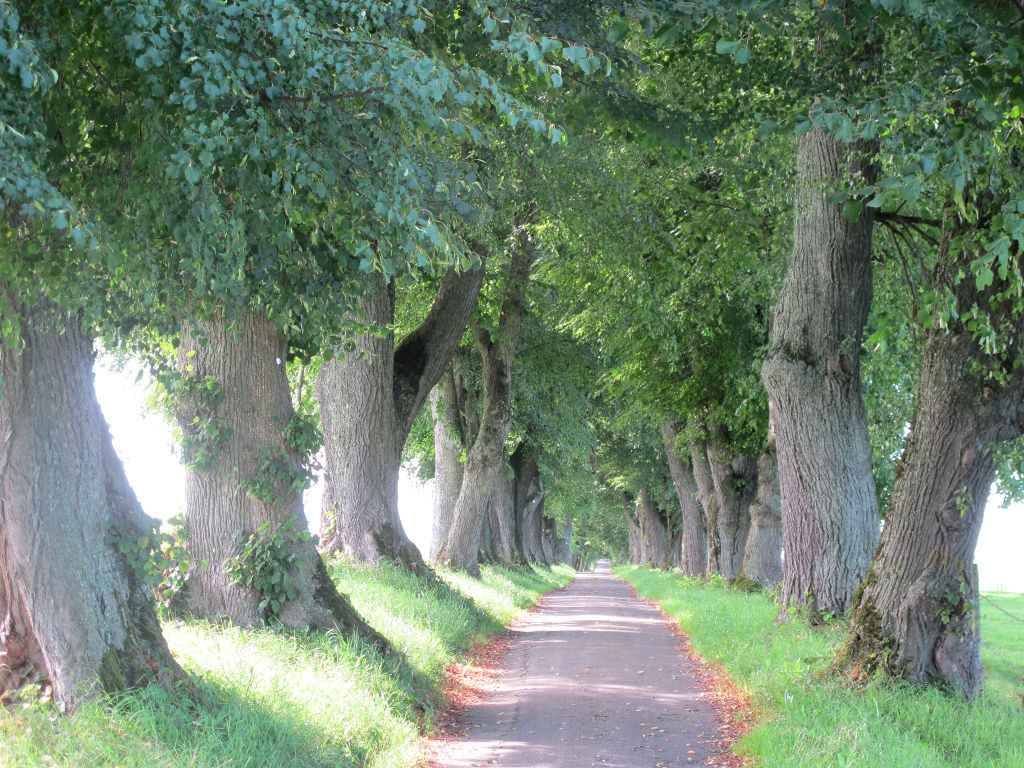
Ancient oaks.
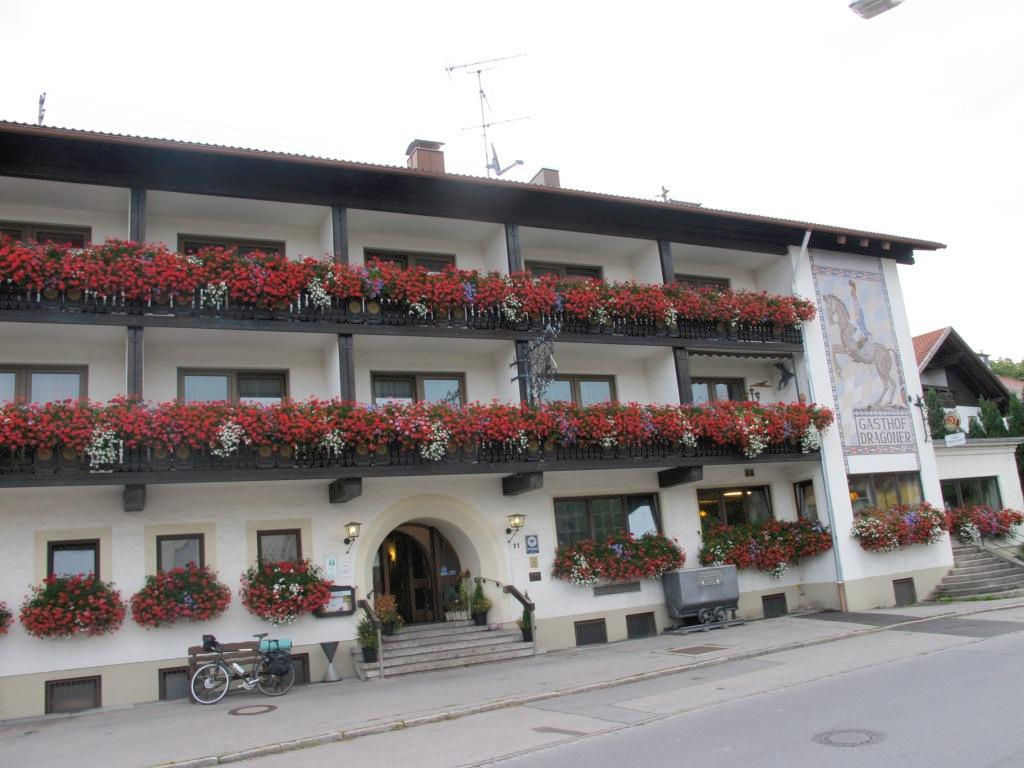
Bike friendly hotel. Unless you are in a real tourist town you can rock up most places and find a room in central Europe in late August.

Sign of bike friendliness.
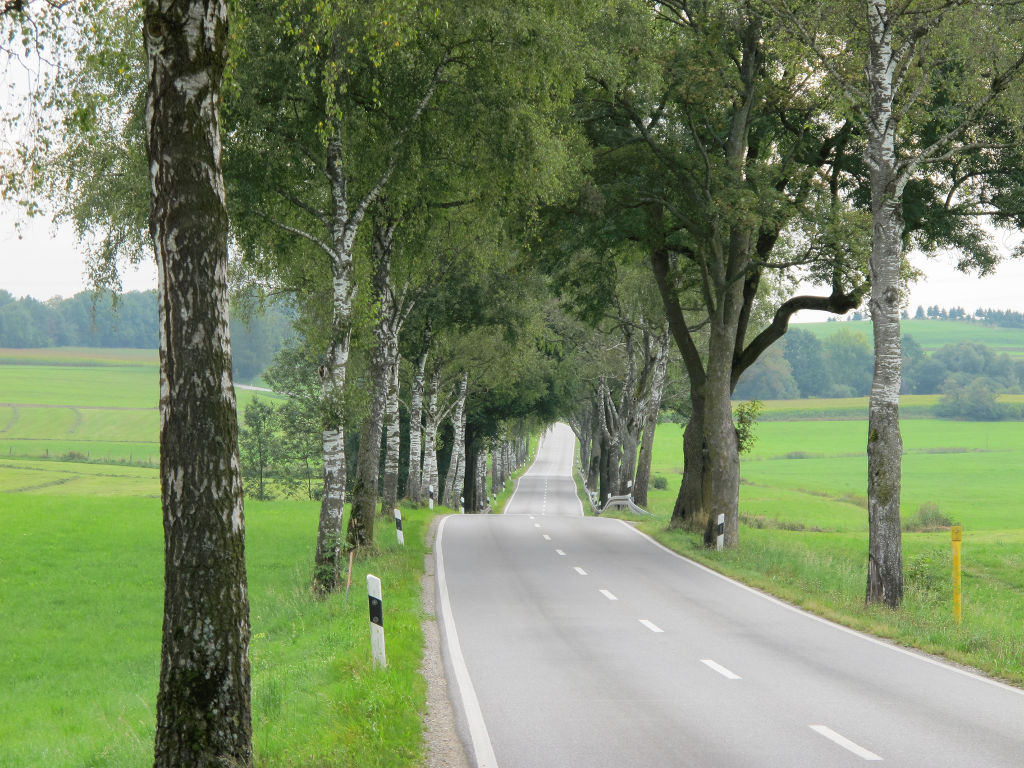
Birch along the way.

Arriving back at Marienplatz with the construction security fencing on the right.
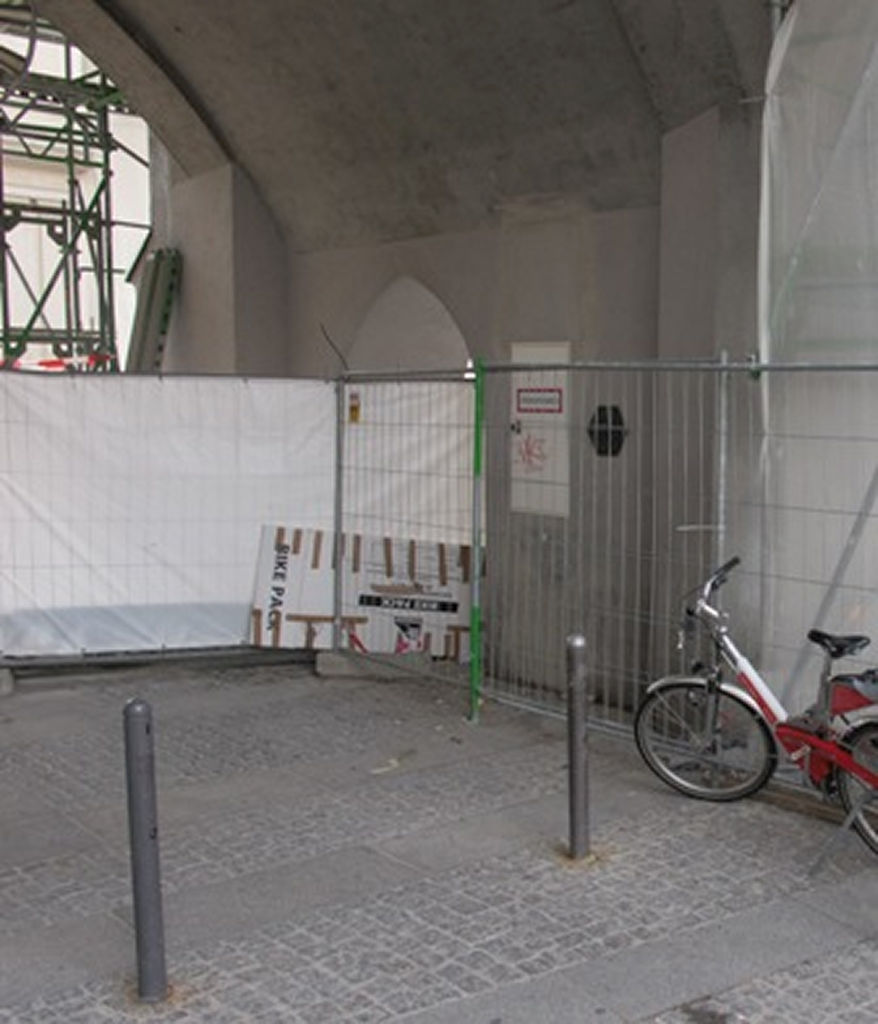
Amazing but true. The carton is there a week later, saving me the hassle of finding a friendly bike shop or risking being able to find a carton at the airport.
We land in Kars in eastern Turkey and set off on a loop ride that takes us east into Iran at the Bazargan crossing, through Marand, Tabriz, then south and around the huge salt lake of Orumiyeh, then back into Turkey at the southern Serow crossing, over a 2,700m pass, into Van. Then we take the train ship across Lake Van to Tatvan and cycle the southern coast back to Van and its airport.
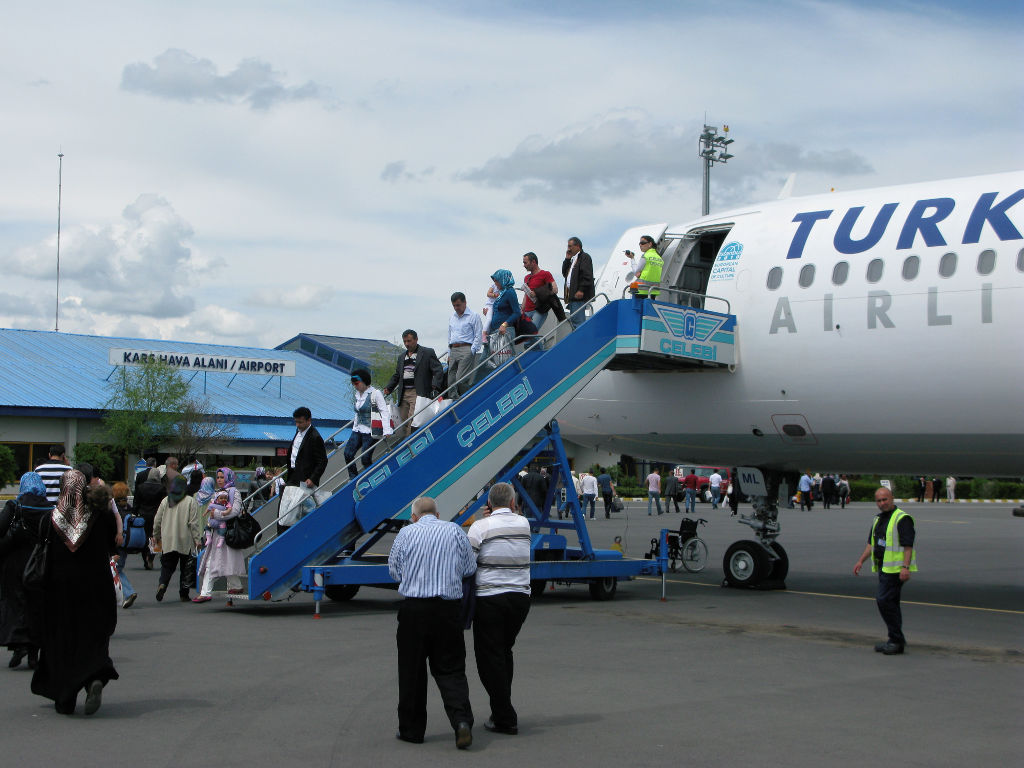
It is always exciting to arrive in a foreign and remote place to begin a bike tour. You don’t know what to expect. You are on your own and depend on your bike reliability, your fitness and your wits. Here we are disembarking at Kars in the far east of Turkey.
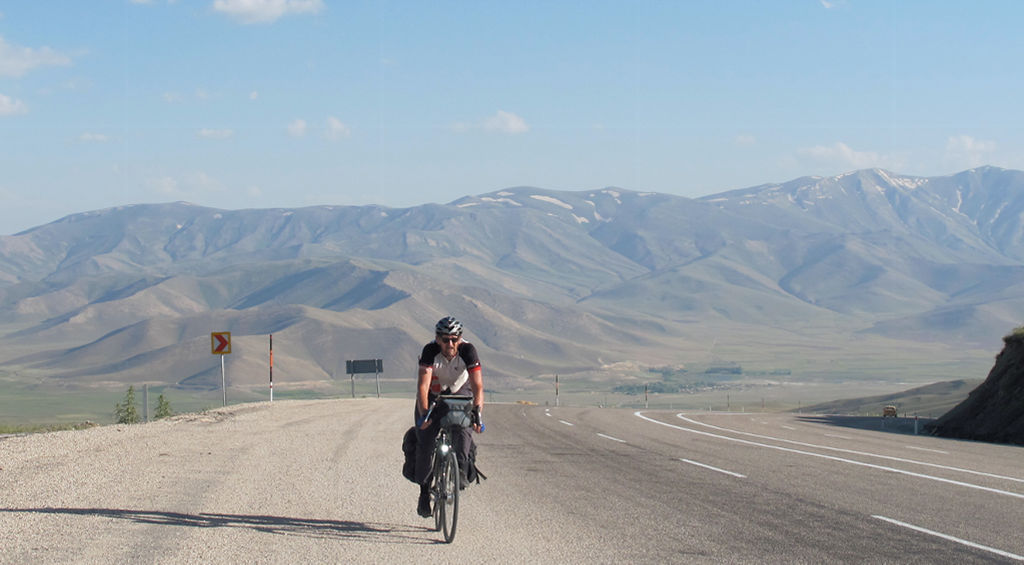
The vastness of the terrain is awesome. Plenty of exercise in traversing it. It is mid-summer but so high up here on the Anatolian plateau that the temperature is pleasant.
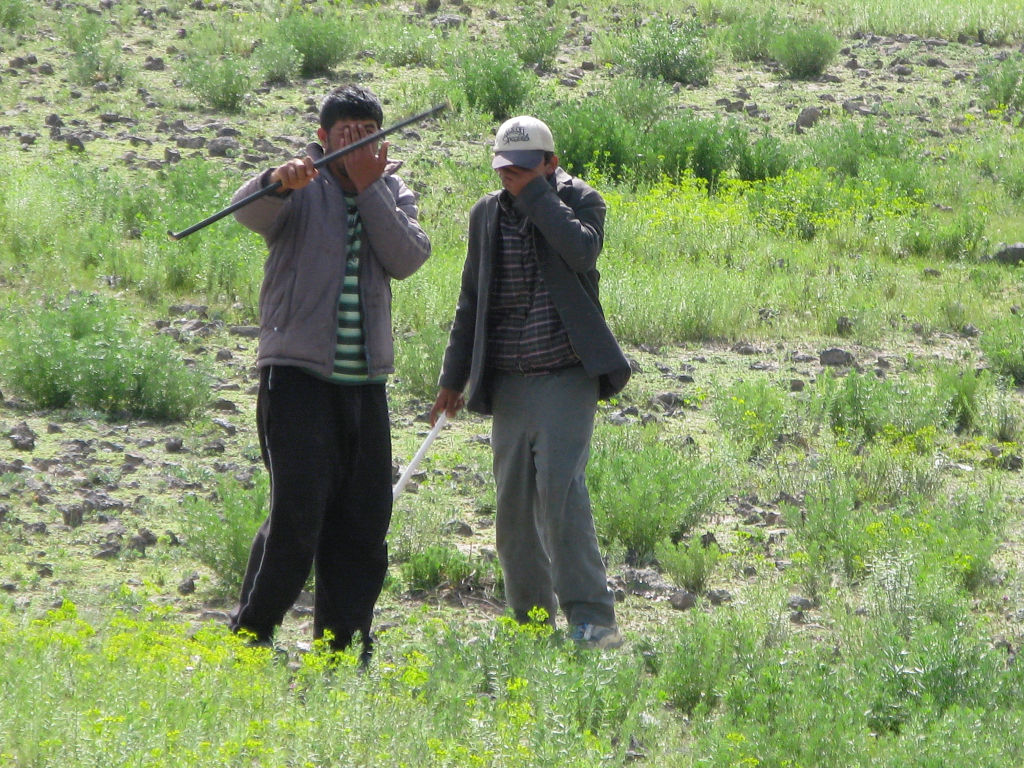
Two naughty shepherd boys. They dangerously grabbed onto one of the bikes as we rode past. So I went to the nearby police base and they rounded them up and brought them in, with their father. I was asked what punishment I required and I said that their father should scold them in front of the commander and me. Basically, they were bored and thirsty. That’s why they did it.
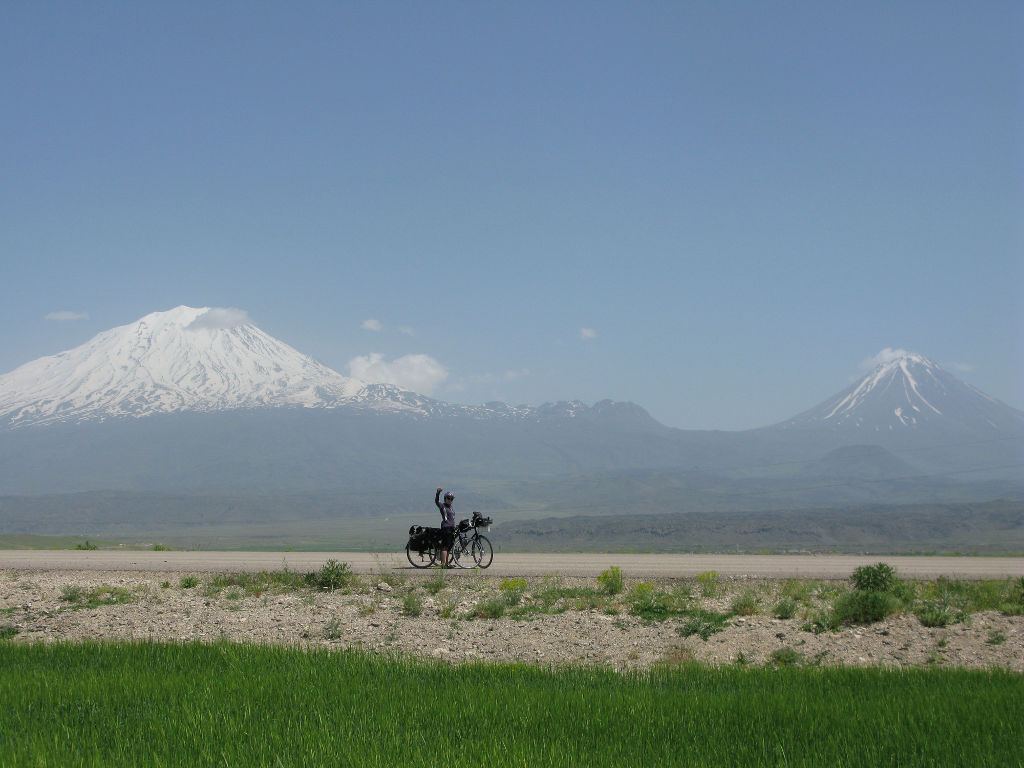
Passing Mt Ararat and approaching the Iranian border. Looking to the NE towards Armenia. The Turks and Armenians have disputed the borders here for centuries.
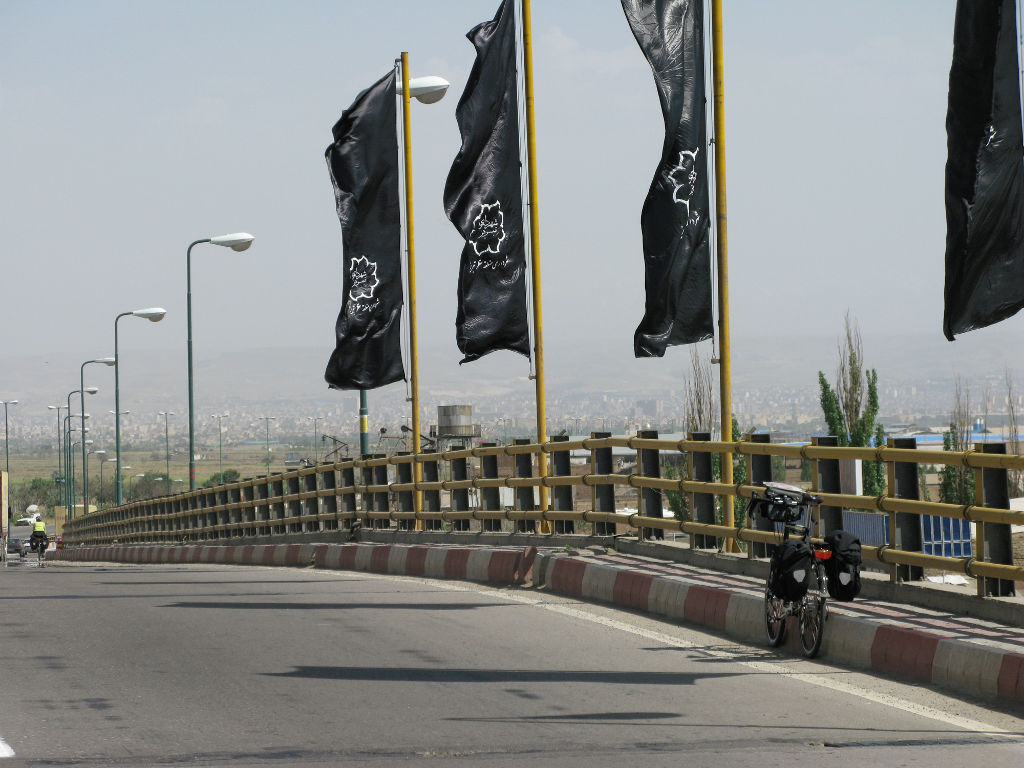
Coming into Tabriz. In all countries there is the regime and there are the people. Here the regime portrays a fearsome side but the people are as kind as you can find anywhere on the planet.
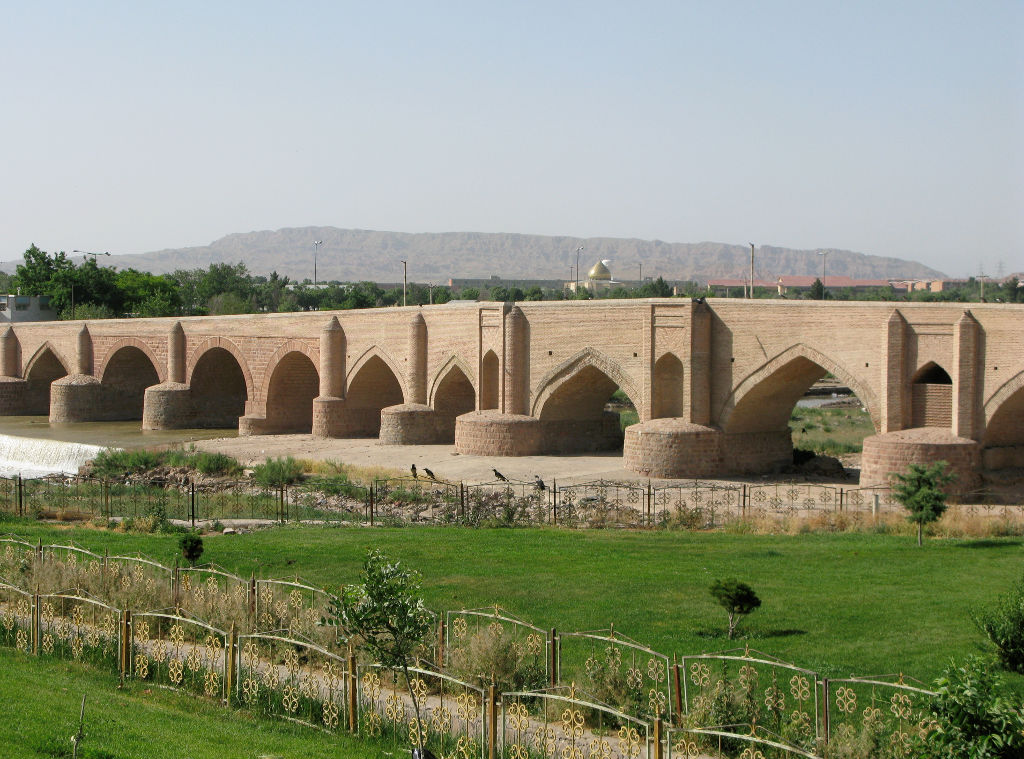
Stunning and gorgeous architecture in Tabriz, Iran. An old bridge entirely made from bricks.
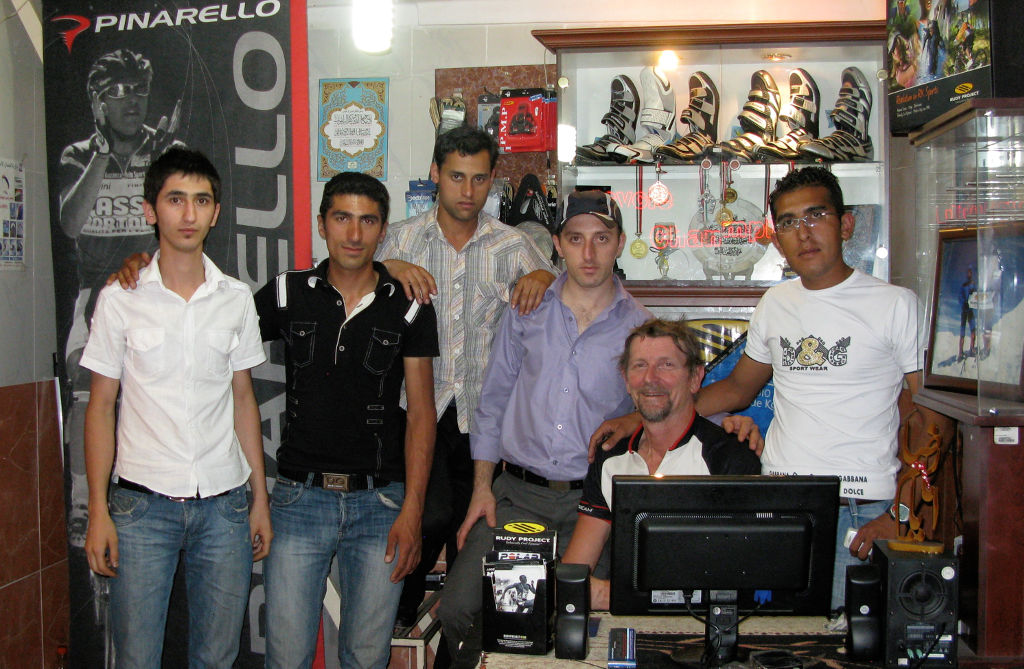
On the road today from Marand to Tabriz we picked up bunches of roadies and in Tabriz are being welcomed at the main road shop, Capital Cycles. Naser Menchov.
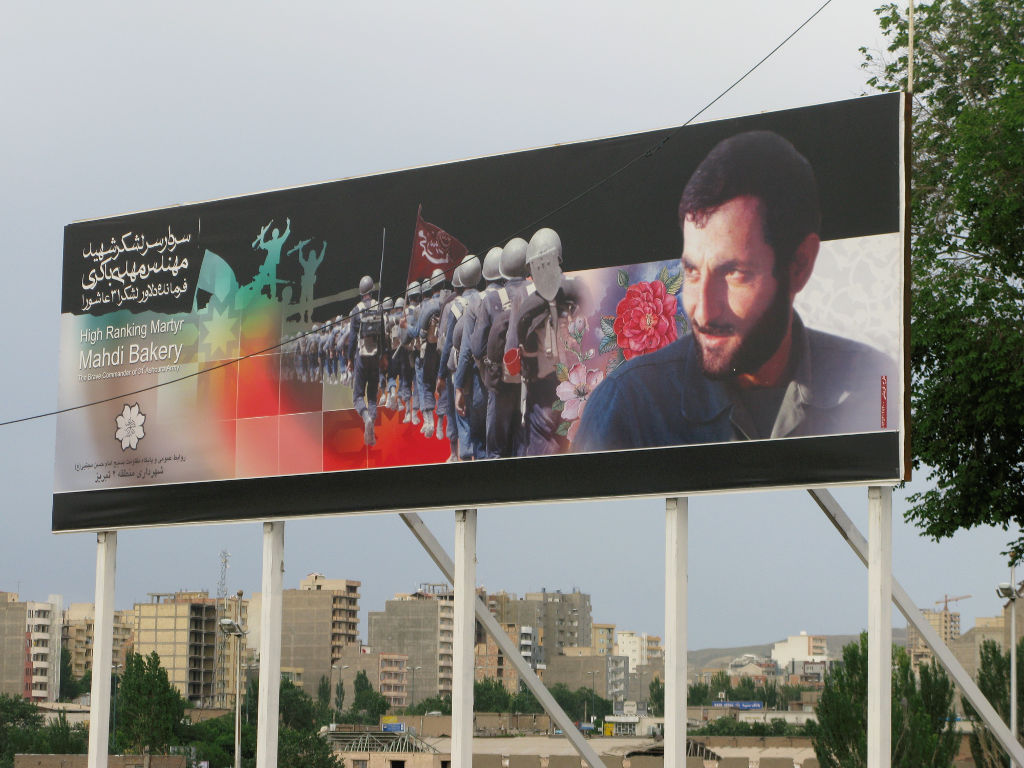
Iran has a unique way of honouring its fallen soldiers. They name sections of highway after them and feature them in huge billboards.
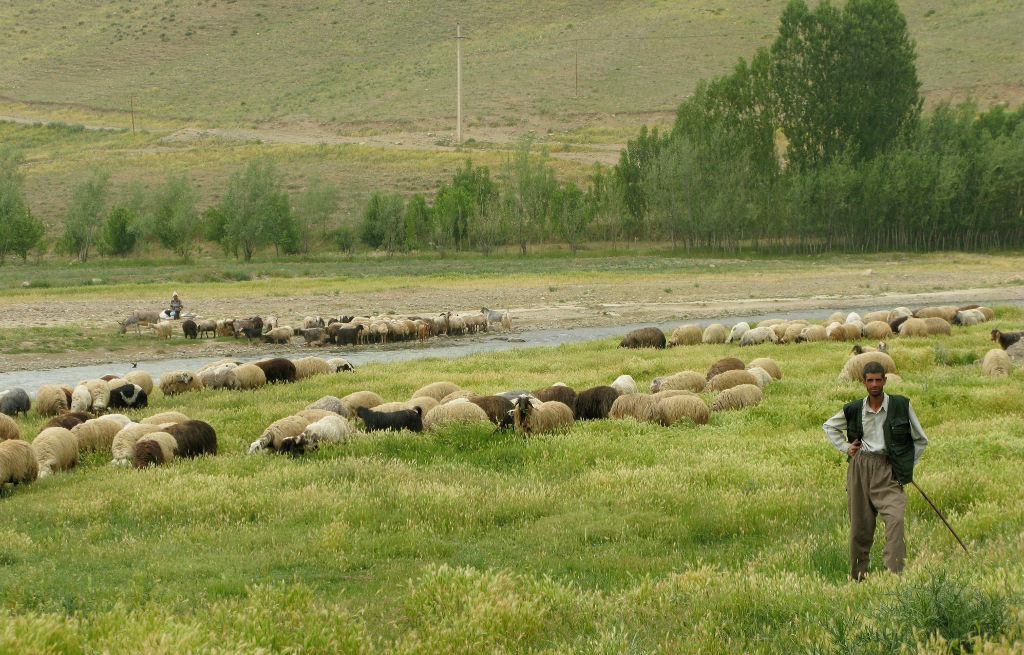
A tourist in a bus or car would not see this. We are able to get close to the farmers and the shepherds.
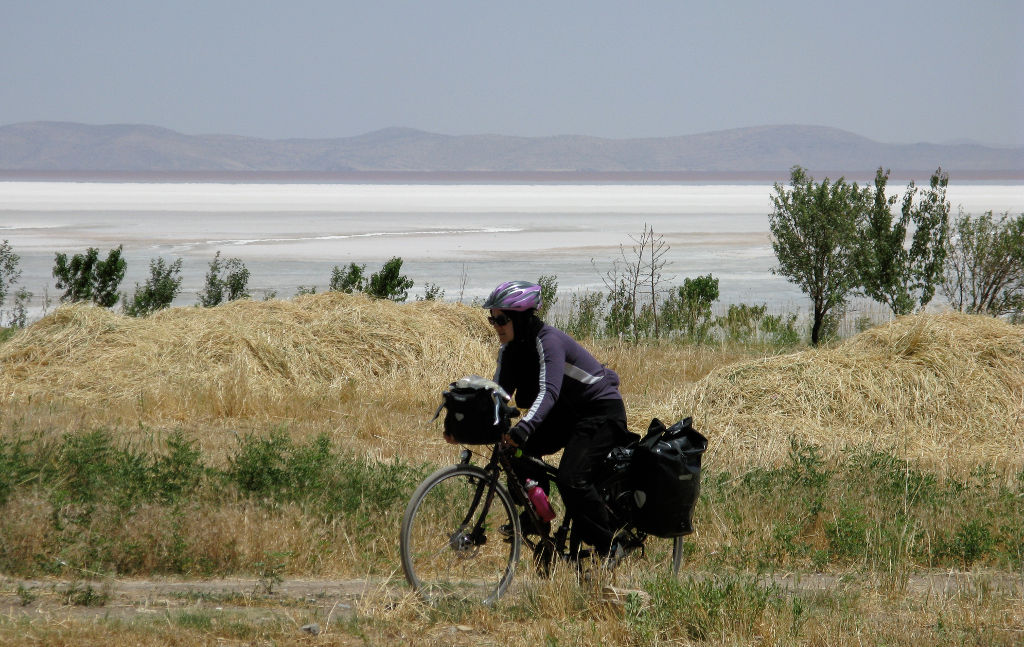
It is about 400km around this salt lake. For 4 days we are beside it, occasionally going right down to marvel at the colossal volume of salt and the weird landscape it forms.
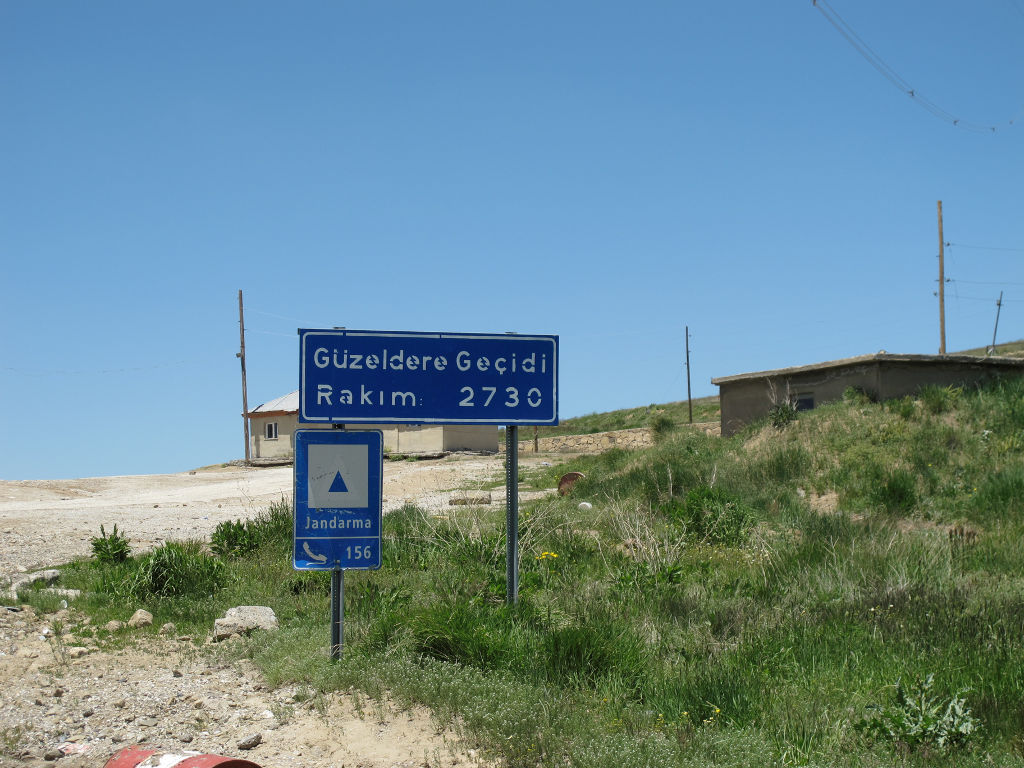
Back in Turkey. Turkey is a land of high passes. At the lookout we meet a pair of Austrians. The four of us joke about how they, upon introducing themselves, have to correct people who mishear and think they are Australian whilst for us we have to correct people who think we are Austrian.
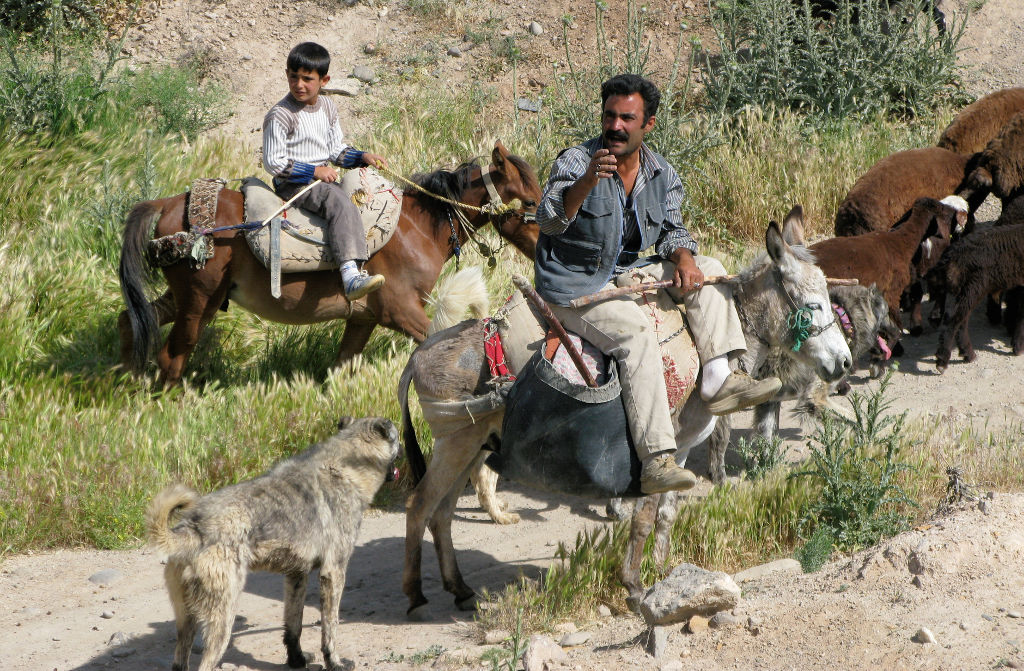
A Kurdish shepherd and his trainee son. Turkish people are so kind that we are frequently stopped for tea. Today even an armoured van stopped and they opened the back and got out the tea.
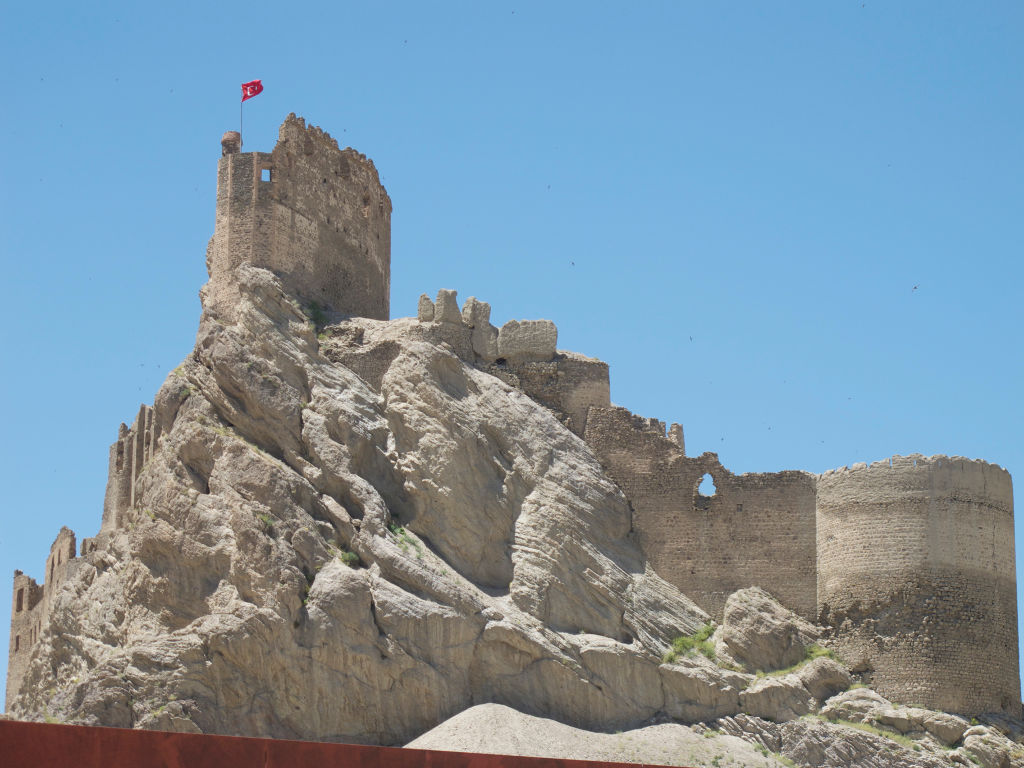
What drove people to build such fortifications and sanctuaries? In this part of the world they aren’t uncommon.

Turkey is a great country to tour in. Sometimes the regime appears unappealing but the people are wonderful, the roads are good and the food is great. I love it.
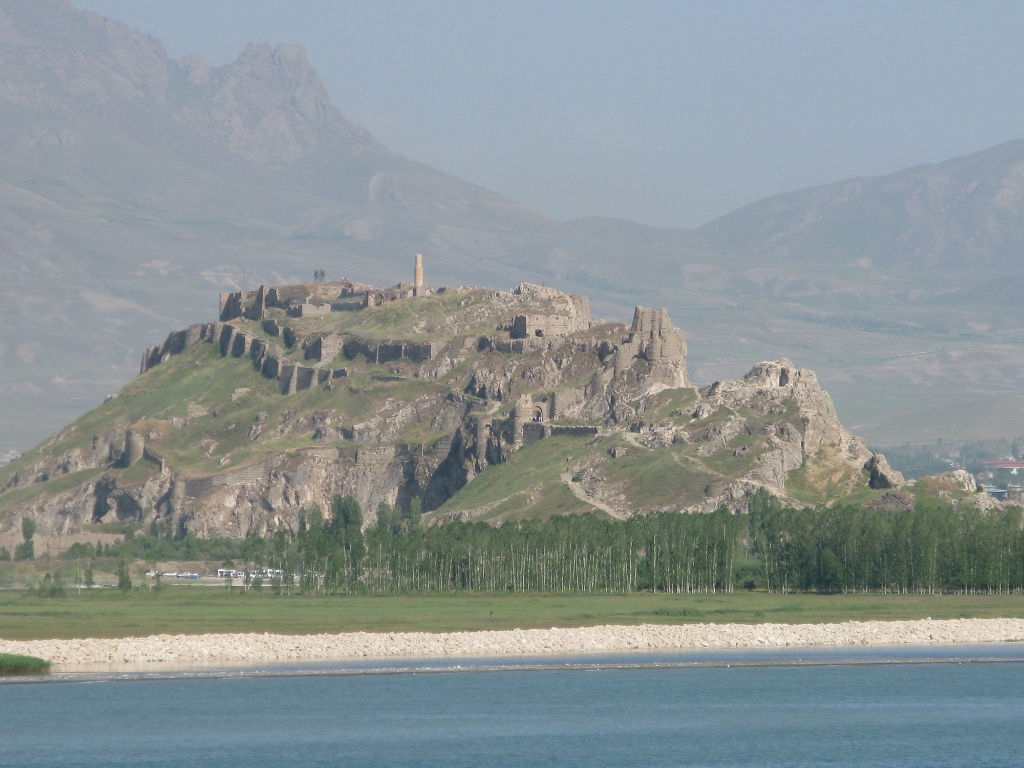
A scene from the trainship out of Van. This ship was built on the lake specifically to carry entire trains with seating for 200 passengers on the route from Istanbul to Tehran. Nowadays the passengers take the bus from Tatvan to Van but trains still go on the ship. We are the only passengers.
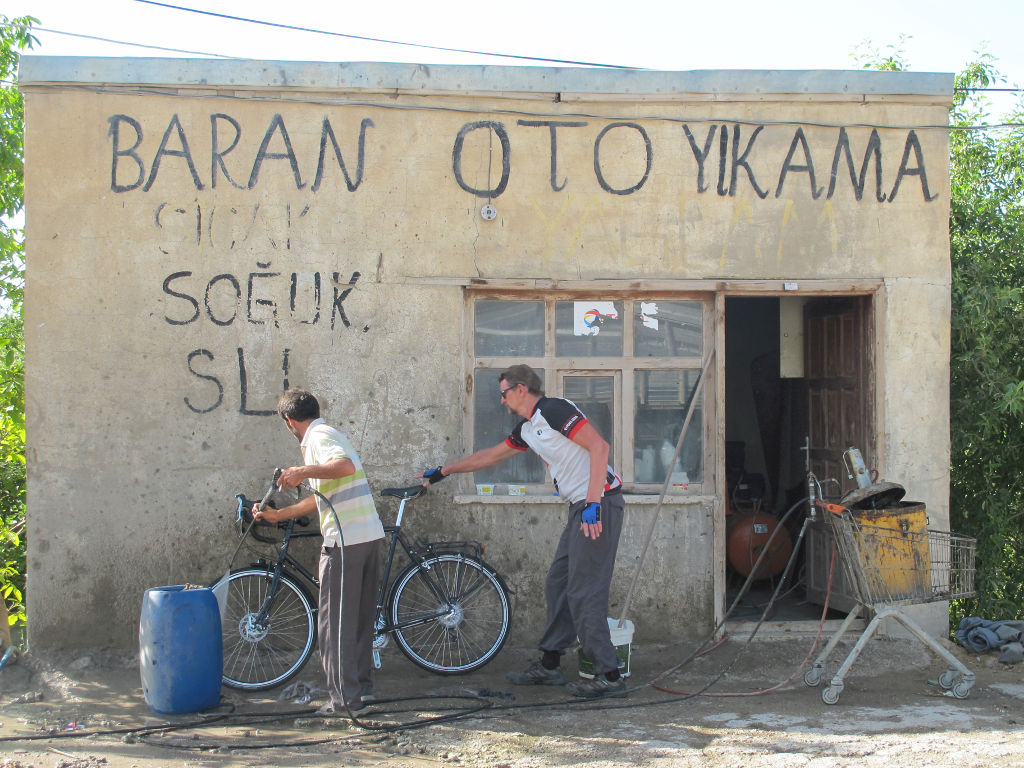
On the last day of a bike tour I always look out for a high pressure water washer. Sure enough this one is perfectly located on the way into Van. The family insists on serving tea. A fitting end to a tour of Eastern Turkey and NW Iran.